game design
description: game development process of designing the content and rules of a game
277 results
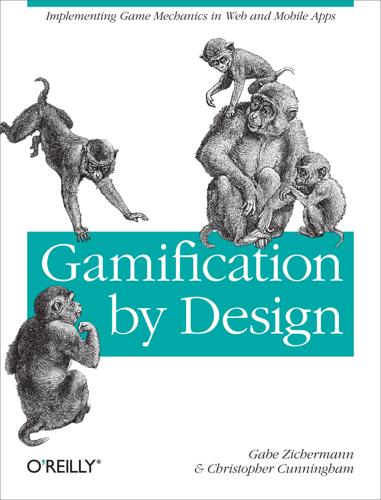
Gamification by Design: Implementing Game Mechanics in Web and Mobile Apps
by
Gabe Zichermann
and
Christopher Cunningham
Published 14 Aug 2011
That is, the arc of your gamified system is based on your player’s and your brand’s stories—as they already exist. Luckily, you don’t need nor should you want to become a full-fledged game designer. While many reference works (such as the excellent The Art of Game Design: A Book of Lenses by Jesse Schell [Morgan Kaufmann]) can help deepen your understanding of how to make games, we’ve filtered the key elements of the discipline here to focus on the most important. Our view of game design is narrow, but it is highly optimized for gamification. MDA Framework One of the most frequently leveraged frameworks of game design is referred to as MDA—which stands for: Mechanics Dynamics Aesthetics The MDA framework is a postmortem analysis of the elements of a game.
…
Only by carefully unpacking consumer emotions and desires can we design something that really sticks—and only through the power of gamification can we make that experience predictable, repeatable, and financially rewarding. We wrote this book to help demystify some of the core concepts of game design as they apply to business, written from the perspective of what a marketer, product designer, product manager, or strategist would want to know. In that regard, we are indebted to the work of notable game designers who helped clarify and amplify the process of game design, making it into a quantifiable art and science. We have leveraged their work and refined the concepts to focus on those elements that are most relevant to business.
…
Gamification by Design takes a unique approach to this exciting, fast-moving, and powerful trend, and makes it practical. We hope you’ll find it as useful as we enjoyed writing it. Acknowledgments We want to recognize the game-design writing and work of key thinkers, including Jesse Schell’s The Art of Game Design: A Book of Lenses (Morgan Kaufmann), Jon Radoff’s Game On (Wiley), and Ralph Koster’s A Theory of Fun for Game Design (Paraglyph Press). We are also lucky to have been able to access and distill the insights of Sebastian Deterding, Susan Bonds, Jane McGonigal, Amy Jo Kim, Ian Bogost, Nick Fortugno, Nicole Lazzaro, Rajat Paharia, Kris Duggan, Keith Smith, and Tim Chang.

Actionable Gamification: Beyond Points, Badges and Leaderboards
by
Yu-Kai Chou
Published 13 Apr 2015
Often, there are only a few building blocks to select from, but based on the context, challenges, and constraints, these building blocks come into play in varying ways for different scenarios. In the book A Theory of Fun for Game Design, game designer Raph Koster introduces a hypothetical game with a single hammer that can only do one thing, which likely results in a dull experience. Koster compares it to the game of Tic-Tac-Toe, which also does not require a meaningful range of abilities and strategy. In comparison, checkers players can start to learn the importance of forcing other players into disadvantageous jumps. “Most games unfold abilities over time, until at a high level you have many possible stratagems to choose from.”30 Game designer Jesse Schell points out that one of the most exciting and interesting ways to add Meaningful Choices is to allow players to choose between playing it safe, and go for a small reward, or take a big risk, and try for a big reward.
…
But those are all excuses to simply keep the player happily entertained inside the system, further engaging them enough to stay committed to the game. The harsh reality of game designers is that, no one ever has to play a game. They have to go to work, do their taxes, and pay medical bills, but they don’t have to play a game. The moment a game is no longer fun, users leave the game and play another game or find other things to do. Since game designers have spent decades learning how to keep people consistently engaged with repetitive activity loops towards “purposeless” goals, games are a great source of insight and understanding into Human-Focused Design.
…
However, most are still boring and are financial losers. Only a few well-designed games become engaging and even addictive. Are you designing your experience to be the failing game or the successful game? How would you know? So let us look at how a good game designer might tackle the problem. Instead of starting with what game elements and game mechanics to use, the good game designer may begin by thinking, “Okay, how do I want my users to feel? Do I want them to feel inspired? Do I want them to feel proud? Should they be scared? Anxious? What’s my goal for their intended experience? Once the designer understands how she wants her users to feel, then she begins to think, “Okay, what kind of game elements and mechanics can help me accomplish my goals of ensuring players feel this way.”
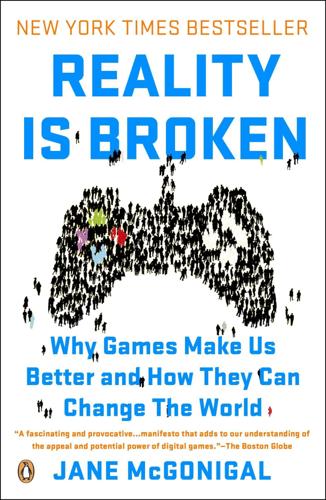
Reality Is Broken: Why Games Make Us Better and How They Can Change the World
by
Jane McGonigal
Published 20 Jan 2011
But I also see a future in which the games we play stoke our appetite for engagement, pushing and enabling us to make stronger connections—and bigger contributions—to the world around us. The modern history of computer and video games is the story of game designers ascending to very powerful positions in society, effectively enthralling the hearts and minds—and directing the energies and attention—of increasingly large masses of people. Game designers today are extremely adept wielders of that power, no doubt more adept than any game designers in all of human history. They have been honing their craft and refining their tactics for thirty years now. And so it is that more and more people are being drawn to the power of computer and video games—and finding themselves engaged by them for longer and longer periods of time, for greater and greater stretches of their lives.
…
Perhaps we should consider a third idea. Instead of teetering on the tipping point between games and reality, what if we threw ourselves off the scale and tried something else entirely? What if we decided to use everything we know about game design to fix what’s wrong with reality? What if we started to live our real lives like gamers, lead our real businesses and communities like game designers, and think about solving real-world problems like computer and video game theorists? Imagine a near future in which most of the real world works more like a game. But is it even possible to create this future? Would it be a reality we would be happier to live in?
…
We need to build hybrid industries and unconventional partnerships, so that game researchers and game designers and game developers can work with engineers and architects and policy makers and executives of all kinds to harness the power of games. Finally, but perhaps most importantly, we all need to develop our core game competencies so we can take an active role in changing our lives and enabling the future. This book is designed to do just that. It will build up your ability to enjoy life more, to solve tougher problems, and to lead others in world-changing efforts. In Part I: Why Games Make Us Happy, you’ll go inside the minds of top game designers and game researchers.

You've Been Played: How Corporations, Governments, and Schools Use Games to Control Us All
by
Adrian Hon
Published 14 Sep 2022
In my case, sometimes a little too much, like when I used to regularly stay up until two in the morning to play Team Fortress 2 with friends in the US. What’s crucial, however, is that good game designers recognise that autonomy and competence and relatedness are ingredients, not requirements. Different players in different situations want different games; some players will want to dive into a game all about competence (Dark Souls), and at other times those same players might want the autonomy to shape their own world (Animal Crossing, Minecraft). That’s why the number of game designers I know who consult psychology textbooks is approximately zero. That’s not how they make games. Instead, it’s a process of experimentation, feeling out new takes on old ideas, wondering what’d happen if you combined this premise with that game genre.
…
Antimonopolists like legal scholar Tim Wu, however, blame the political lack of will to enforce antitrust law, and argue that even if Amazon’s scale helps it lower prices in the short term, its crushing of competition stifles innovation in the long term.104 Either way, whether you want to sell goods online or advertise on social media, you have fewer and fewer options.105 And if those companies decide to push you below the API with only gamification to distract you, there are fewer and fewer places to go. The examples of workplace gamification I’ve described so far have been distinctly lacking in fun, but maybe that’s only because companies haven’t tried hard enough. Perhaps if companies hired better game designers, they could make packing boxes or answering phones all day into a delightful experience. While this might help at the margin, the problem is that good game design doesn’t scale. A game that makes it fun to pack items into a box will not work for picking the items that go into the boxes, let alone driving a taxi or answering phone calls. If you want to make all of those tasks fun, you need to make a unique game for each of them.
…
As Lazer-Walker notes, The most effective way to make online events more engaging is going to be looking towards game design and virtual world design to learn what makes those spaces tick. This doesn’t (necessarily) mean making actual games. Our space more resembles Discord or Slack from a UI/UX perspective than a historical MUD. It also doesn’t mean building more of the same online event platforms we already have, but throwing in some 2D pixel art or traditional “gamification” markers (leaderboards, badges, etc.) or other surface-level signifiers. What we actually need to take from game design is the understanding of how to use play and playful design to create environments whose architecture encourages and rewards positive social interactions through psychologically satisfying systems.

All Your Base Are Belong to Us: How Fifty Years of Video Games Conquered Pop Culture
by
Harold Goldberg
Published 5 Apr 2011
Inspired by a board game and a television show, The 7th Guest and its sequel were so fraught with frights that they drove one of the game designers crazy, literally. Like Myst, The 7th Guest was responsible for selling millions of personal computers. Occasionally terrifying, always campy and over the top, The 7th Guest boldly led the way for the future of horror games. However, the making of The 7th Guest and its follow-up, The 11th Hour, showed in microcosm the rift that could develop when those who held strong ideas about movies worked side by side with those who cared more about game design. The 7th Guest co-creator Graeme Devine was born in Glasgow, Scotland, and then moved to Crawley, a south-of-London town famous for its Stone and Bronze Age artifacts.
…
The staff at Blizzard in Irvine was not immune to its many enticements, and Adham, now back in the fold, was completely fascinated. So was one of his newer hires, Rob Pardo. Pardo originally had dreams of becoming a movie director, but he ended up managing a local Software Etc. store. After becoming a game tester, he worked his way up to producer at Interplay and was slowly moving into game design. Pardo looked at the smart but soft-spoken Adham as a game design mentor. They began to have intense, constructive discussions; but the two really began to bond when playing EverQuest together. Pardo was so fascinated by EverQuest that he became the Guild Master of Legacy of Steel, one of the gangs of guys who became über-experts at the vagaries of the game.
…
Thunderous roars were heard as the cave crumbled in as a kind of animated payoff for playing. Before they went further, the team had to ascertain whether they should include a timed mode to quicken the pace and spice up the action. When showing the timer-less version to game designers, they received negative feedback, including a rude response from a Pogo executive: “This stupid thing isn’t a game at all.” More and more professional game designers offered snotty and snooty remarks. They were almost viscerally opposed to what the three were doing, seeing the jewel matching game as an example of exceptionally poor game theory. Yet when Kapulka traveled home to Canada, he performed what he described to John and Brian as the Mom Test.
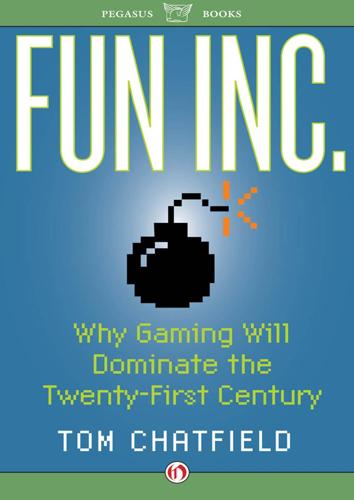
Fun Inc.
by
Tom Chatfield
Published 13 Dec 2011
Games have long been one of the world’s most important engines for computing innovation – along with, more recently, the mobile phone. It’s largely thanks to the ever-evolving ambitions of game designers that modern computers have a DVD drive, a graphics card, decent sound capability, a staggering amount of RAM, a large colour monitor, and so on. None of this, technically, is required for word processing or even for producing presentations; the multi-media PC is very much a child of gaming, and has been since its youngest days. Now, though, with the power and speed of even inexpensive modern computers at an unprecedented level in historical terms, games designers have begun to turn to perfecting the field of access and interface design – to help as many people as possible to perform complex tasks on a machine in a manner that is engaging and intuitive.
…
Koster has, among other things, worked as lead designer on Ultima Online (1997), the world’s first commercially successful massively multiplayer online game (MMO), and as creative director on another MMO milestone, Star Wars Galaxies (2003), based on the Star Wars universe. He’s also the author of an influential book, A Theory of Fun for Game Design (2004), that was one of the first to set out in precise terms what it means to say that games are tools for learning: Games are something special and unique. They are concentrated chunks ready for our brains to chew on. Since they are abstracted and iconic, they are readily absorbed. Since they are formal systems, they exclude distracting external details.
…
But the social integration they offer is subtle and extremely powerful, seamlessly integrating with users’ Facebook accounts so that they can instantly keep track of – and attempt to better – their friends’ scores, or admire each other’s pets. And behind it all lies a network of data analysis and tracking that sets a global standard not just for gaming, but for anyone hoping to make money from media in a digital world. Playfish’s CEO, Kristian Segerstråle, has a successful background in game design for mobile phones. Yet, as he explained to me at Playfish’s London office in mid-2009, the scale of success that Playfish has experienced had caught him by surprise. ‘It’s fair to say that we have been overwhelmed. We started off eighteen months ago with four of us. We are well over 100 people now in four offices: China, America, London, Norway.
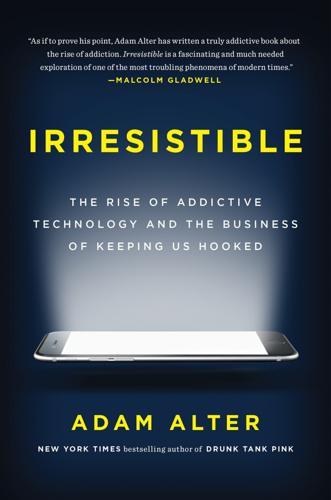
Irresistible: The Rise of Addictive Technology and the Business of Keeping Us Hooked
by
Adam L. Alter
Published 15 Feb 2017
The longer the average player stays seated at the machine, the better the machine. Since most players lose more money the longer they play, time on device is a useful proxy for profitability. Video game designers use a similar measure, which captures how engaging and enjoyable their games are. The difference between casinos and video games is that many designers are more concerned with making their games fun than with making buckets of money. Bennett Foddy, who teaches game design at New York University’s Game Center, has created a string of successful free-to-play games, but each was a labor of love rather than a moneymaking vehicle. They’re all available on his website, foddy.net, and apart from attracting limited advertising revenue, they aren’t a significant source of income, despite some having achieved cult status.
…
And also the games ranked fifth, sixth, eighth, ninth, eleventh, twelfth, nineteenth, twenty-first, twenty-third, twenty-fifth, twenty-sixth, thirty-third, and thirty-fourth. The industry would have been much the poorer without his influence. What Miyamoto seemed to recognize better than anyone was that addictive games offered something to both novices and experts. Games designed only for beginners would grow stale too soon, and games designed only for experts would lose newcomers before they became masters. When Miyamoto was twenty-four he joined Nintendo. For ninety years Nintendo had traded in the stagnant playing card business, but now, in the late 1970s, it was branching out into video games.
…
“That’s the point,” he said, “not to make something sell, something very popular, but to love something, and make something that we creators can love. It’s the very core feeling we should have in making games.” When you compare Super Mario Bros.—regularly voted by game designers as the greatest game of all time—to others on the market, it’s easy to recognize in the competition the hallmarks of a predatory game. Adam Saltsman, who produced an acclaimed indie game called Canabalt in 2009, has written extensively about the ethics of game design. “Predatory games are designed to abuse the way you’re wired,” Saltsman said. “Many of the predatory games of the past five years use what’s known as an energy system.

Racing the Beam: The Atari Video Computer System
by
Nick Montfort
and
Ian Bogost
Published 9 Jan 2009
Even if an arcade game hadn’t been a huge success, as was the case with Star Castle, it would often be ported. A deployed arcade game contained a complete and fully implemented game design, one that had been tested on the playing (and paying) public. Ironically, however, the hardware capabilities of an arcade machine—in terms of processing [82] power, graphics, and controller setup—were always significantly different from those of the Atari VCS, so that having a well-tested and implemented game design on the arcade platform didn’t mean very much when it came to the home console’s hardware. A “port” from the arcade to Atari’s home system was not like a port from one computer system to another, in which the program being converted would function in the same way on both platforms with only minor differences, after a few small changes were made.
…
Crane saw Atari VCS development less as a refinement of the gameplay in known interaction models and more as a challenge to make the highly constrained VCS hardware do new and exciting things. In Crane’s words, “I got more enjoyment out of discovering a new trick than from the game design itself. More often than not, I used this technique to lead me in a new direction of game design, and some of the tricks were to me as much an accomplishment as solving the Rubik’s Cube the first time.”11 Freeway, which Crane developed in 1981, offered an improvement on the techniques of same-screen sprite register rewrites (which Larry Kaplan had first used in Air-Sea Battle) and multicolored sprites (first used in the 1978 Superman) accomplished by changing both the sprite color 6 Pitfall!
…
Keeping a secret like that is not easy.”13 Robinett expressed in this statement the same sort of gripe that would cause David Crane, Larry Kaplan, Alan Miller, and Bob Whitehead to quit Atari in 1979 to start the industry’s first third-party developer, Activision. Robinett and his colleagues worked long, solitary hours without much guidance or supervision—and with no royalties—and Atari then made a fortune on their games without giving them credit, publicly or internally. [60] Today, there are perhaps a handful of game designers whose names are well known. Will Wright, Shigeru Miyamoto, Hideo Kojima, and Richard Garriott are among them. Far fewer are directly marketed as creators of their games—Sid Meier and American McGee are the only two whose names actually precede titles of their games, in the way that an Alist film director or a best-selling author might get top billing above a work’s title.
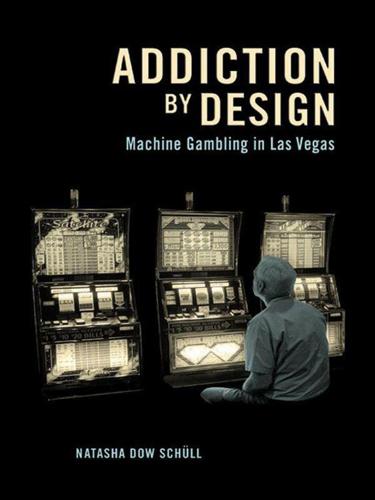
Addiction by Design: Machine Gambling in Las Vegas
by
Natasha Dow Schüll
Published 15 Jan 2012
Connie Jones, IGT’s designated “Director of Responsible Gambling,” describes the situation well: “Our game designers don’t even think about addiction—they think about beating Bally and other competitors. They’re creative folks who want machines to create the most revenue.”95 Although Jones’s statement is meant to defend against the charges of intentional harm that are sometimes leveled at the gambling industry, the fact that her defense rests on an open admission of the mercenary nature of game design, along with the dismissive assertion that “game designers don’t even think about addiction,” does more to illustrate the problem than to pardon it.
…
Over the years, many in the industry have lost faith in the value of focus groups to the game design process. “People tell you what they want and you produce it and it doesn’t work. Absolute failure. They don’t really know what they want.”5 Today, focus groups are more often used to “confirm hunches” than to guide game development. A top executive at IGT who held a master’s degree in psychology suggested to me that methods of cross-cultural anthropology, such as participant observation, were better suited to the task of game design. Randy Adams agreed. “You could do it up on a PowerPoint type presentation and sit down with a little laptop in front of these people and tell ’em to use the key and play the game,” he told me, “but you’re not gonna learn anything that way.
…
Scholars of gambling Henry Lesieur, Charles Livingstone, and Roger Horbay read the book in its draft form and offered excellent advice and suggestions. Rachel Volberg made thorough and incisive editorial comments on significant portions of the text. Mirko Ernkvist, Nigel Turner, and Kevin Harrigan read the chapters on game design and helped to clarify important details on the programming of probability, as did gambling machine specialists Mike Shackleford (a.k.a. “Wizard of Odds”), Bob Dancer, and Stacy Freidman. The Center for Gaming Research at the University of Nevada, Las Vegas, made much of the archival research possible, and its capable staff helped me track down many a wayward citation.
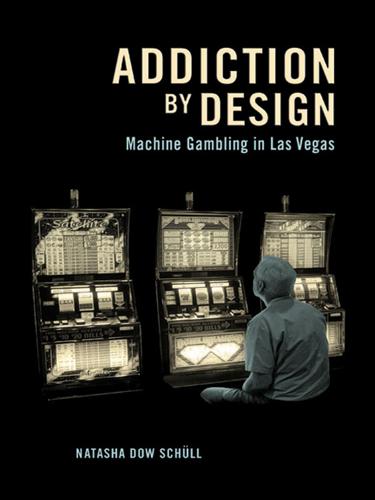
Addiction by Design: Machine Gambling in Las Vegas
by
Natasha Dow Schüll
Published 19 Aug 2012
Connie Jones, IGT’s designated “Director of Responsible Gambling,” describes the situation well: “Our game designers don’t even think about addiction—they think about beating Bally and other competitors. They’re creative folks who want machines to create the most revenue.”95 Although Jones’s statement is meant to defend against the charges of intentional harm that are sometimes leveled at the gambling industry, the fact that her defense rests on an open admission of the mercenary nature of game design, along with the dismissive assertion that “game designers don’t even think about addiction,” does more to illustrate the problem than to pardon it.
…
Over the years, many in the industry have lost faith in the value of focus groups to the game design process. “People tell you what they want and you produce it and it doesn’t work. Absolute failure. They don’t really know what they want.”5 Today, focus groups are more often used to “confirm hunches” than to guide game development. A top executive at IGT who held a master’s degree in psychology suggested to me that methods of cross-cultural anthropology, such as participant observation, were better suited to the task of game design. Randy Adams agreed. “You could do it up on a PowerPoint type presentation and sit down with a little laptop in front of these people and tell ’em to use the key and play the game,” he told me, “but you’re not gonna learn anything that way.
…
Scholars of gambling Henry Lesieur, Charles Livingstone, and Roger Horbay read the book in its draft form and offered excellent advice and suggestions. Rachel Volberg made thorough and incisive editorial comments on significant portions of the text. Mirko Ernkvist, Nigel Turner, and Kevin Harrigan read the chapters on game design and helped to clarify important details on the programming of probability, as did gambling machine specialists Mike Shackleford (a.k.a. “Wizard of Odds”), Bob Dancer, and Stacy Freidman. The Center for Gaming Research at the University of Nevada, Las Vegas, made much of the archival research possible, and its capable staff helped me track down many a wayward citation.
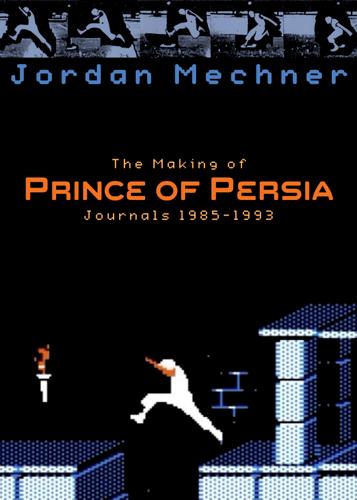
The Making of Prince of Persia: Journals 1985-1993
by
Jordan Mechner
Published 30 Jan 2012
It reminded me why I’m good at this – of what I can do that others can’t, or won’t. August 1, 1986 Ed sent sketches of someone’s ideas for Karateka II – Gene’s, presumably. I wasn’t too enthused at first, but now it occurs to me there is a way that this could work. If I get actively involved in the game design – make up a storyline, draw up sketches, brainstorm with Gene, etc. – and stay on in a kind of supervisory capacity, while turning the programming over to Steve Ohmert – that’ll let me keep some control over the project’s development, and also justify asking for a higher royalty rate than if I weren’t involved at all.
…
Lucasfilm spent a million bucks to make Rescue on Fractalus and Ball Blazer, and those games aren’t significantly better than, or different from, the competition. The real strides forward – Raster Blaster, Choplifter, (what the hell) Karateka – were the work of solo programmers with no special resources. Maybe Danny is leading game design into the 21st century. Maybe he’s just flushing money down the toilet. I’ll stick with my Apple II. September 11, 1986 Met with Gene, Lauren, and Ed Badasov and showed them my Baghdad ideas. (Ed B. made up the working title Prince of Persia.) The storyline didn’t impress them much, but I think they saw promise in it.
…
I’ll need to redo the straight running, but I think everything else will work as it stands. About half the animations are in now. Next step will be getting the character to interact with the environment (climbing a rope ladder, pulling a lever, etc.) At this juncture I think I’ll redirect my attention to the game design. December 2, 1986 Spent most of the day trying to figure out the velocity of a falling human being as a function of time. Enlisted practically everyone at Broderbund at one point or another. They all seemed to find this a more interesting problem than whatever they were working on. December 24, 1986 Home for the holidays.
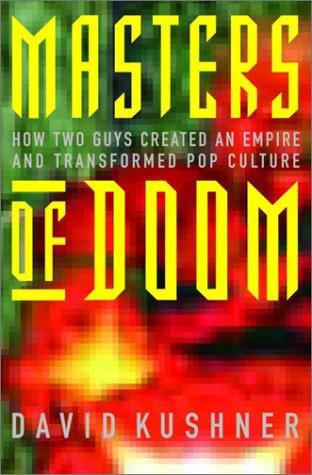
Masters of Doom: How Two Guys Created an Empire and Transformed Pop Culture
by
David Kushner
Published 2 Jan 2003
Worse, the split from id was so painful that Romero and Tom had hardly spoken since the firing. But at least Tom had managed to land on his feet. Scott Miller, another casualty on the way to id’s success, offered him a job as a game designer for Apogee. It was bittersweet, but Tom accepted; maybe now he would be able to make the games he had always imagined. Back at id, the guys started sifting through resumes for a new game designer of their own. Kevin had received a resume from a promising-looking gamer named Sandy Petersen. At thirty-seven wars old, Sandy was ancient compared with the id guys and an admirable veteran of the gaming scene.
…
Overnight, it seemed, Carmack was in a strange house, with a strange family and going to a strange school, a junior high with no gifted program or computer’s. He’d never felt so alone. Then one day he realized he wasn’t. 19 The book Hackers: Heroes of the Computer Revolution was a revelation. Carmack had heard about hackers: In 1982 a Disney movie called Tron told the story of a video game designer, played by Jeff Bridges, who hacked himself into a video game world; in a 1983 movie called WarGames, Matthew Broderick played a young gamer who hacked into a government computer system, and nearly triggered Armageddon. But this book’s story was different–it was real. Written by Steven Levy in 1984, it explored the uncharted history and culture of the “Whiz Kids Who Changed Our World.”
…
Carmack was most interested in programming the guts of the game–what was called the engine. This integral code told the computer how to display graphics on the screen. Romero enjoyed making the software tools–essentially the palette they would use to create characters and environments or “maps” of the game–as well as the game design–how the game play would unfold, what action would take place, what would make it fun. It was like yin and yang. While Carmack was exceptionally talented in programming, Romero was multitalented in art, sound, and design. And while Carmack had played video games as a kid, no one had played as many as Romero.
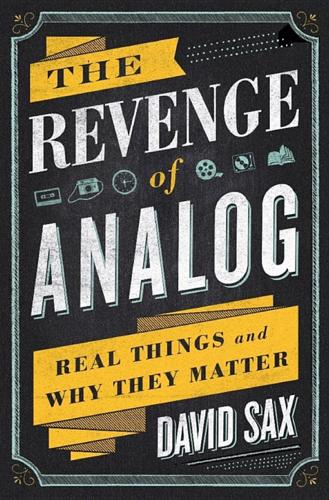
The Revenge of Analog: Real Things and Why They Matter
by
David Sax
Published 8 Nov 2016
The game should now be commercially available. Deal: American Dream had filmed its Kickstarter video at Snakes & Lattes, and I first encountered Vernaza there just before it launched, during one of the monthly game designer nights the café holds in its back room. If Kickstarter and Board Game Geek are the digital communities driving the revenge of board games, then these evenings are their analog equivalent. Each month, twenty to thirty game designers, ranging from well-known professionals to first-time amateurs, invite their peers to play and give feedback on prototype games. The crowd is less diverse than Snakes & Lattes normally.
…
It looked so simple and perfect, I asked the designer, Daniel Rocchi, whether I could buy the prototype right there. These guys were members of the Board Game Designers Guild of Canada, a community built around mentoring and helping fellow designers get their games to market. It was partly led by Sen-Foong Lim, an occupational therapist and professor of developmental psychology, who had designed games as diverse as the hilarious infomercial party pitch But Wait, There’s More! and an adaptation of the TV show Orphan Black. Lim saw game designing as a “jobby,” a mixture of a job and a hobby that made just enough money to justify the time it required away from his family.
…
See manual work farmers’ markets, 127 faxes, 31, 44 Federico, Christopher, 175, 176, 200 Federle, Tim, 147 Fellini, Federico, 53–54 Ferrania Technologies, 51–52, 57, 58 See also FILM Ferrania Fetch, 224 Fiegl, Matthias, 59–61 Field Notes, 43–44 Fields, Billy, 19 film cameras, xv, 54, 55, 59–60, 61, 62, 66, 67, 68, 69–70, 71, 73, 115, 240 FILM Ferrania, 158 challenges in reviving, 52–53, 57–58, 65–66, 73–74 film market and, 58–59 history of, 53–54, 55, 56–57 film market, 59, 62, 66–67 film photography appeal of, 60, 62, 67, 72, 238 transition from, 54–56 film processing, 56, 60, 73 film production manufacturing process in, 64, 65–66 reviving, 52–53, 67–69, 71 Filofax, 34 “finishability,” 110, 114 Fitting, Rebecca, 129 flea markets, 145 Flickering Mind, The (Oppenheimer), 187 floppy disk drives, 65 Foo Fighters, 24 Forbes (magazine), 106 Ford, Henry, 158 Ford Motor Company, 161 Foreign Affairs (magazine), 163 Forerunner Ventures, 137, 138 Fossil, 150, 168, 169 fountain pens, xiv, 227 Foxconn, 163, 165 Francese, Alberto, 48 Franchesci, Francesco, 32–33 Frank & Oak, 137 Franklin, Aretha, ix Franklin, Tarez, 158 Free Comic Book Day, 14 free content model, issue with, 109–110, 115–116 free shipping, 135–136 freelance work, 164, 165–166 Fresh Direct, 124 friction, creating, 219 Friedman, Thomas, 154, 157, 165 Fröbel, Friedrich, 194 Frobert, Tristan, 95–96 Front Row Partners, 134 Fujifilm, 55–56, 57, 63, 70, 71 Galloway, Scott, 136, 137 game design, shift in, 88–89, 91 game designers, 77, 82, 96–98 game gurus, 86–88, 89 Game Manufacturers Association (GAMA), 77 Game of Life, The, 86 game stores, 78, 86 games, digital. See digital games; online gaming; video games games, physical, benefit of playing, 81–82 See also tabletop games gaming conventions, 77 Gates, Bill, 177 Gates, Melinda, 177 Gawker, 107 geek/nerd culture, 14, 78, 84–85, 94, 211 GenCon, 77, 85 General Electric, 155 General Motors, 155, 163 Genius Bar, 139 Gentlewoman, The (magazine), 112 Getting Things Done (Allen), 37, 38 Ghostface Killah, 27 Gilt Group, 133 Glass Cage, The (Carr), 159, 239 global economy, 153, 154 globalization, 33, 153, 156 Glowforge, 226 GoldenEye 007 (game), 80 Gonzales, Daniel, 132 Google, 20, 46, 110, 137, 161, 162–163, 171, 187, 194, 201, 206, 221–222 Google Ad words, 107 GoPro, 215 Gotta Groove, 17 GPS guidance, 159 Grayson, Bob, 125–127, 128, 144 Grayson Company, 126 Great Recession, 10, 107, 113, 125, 155, 156, 157 Greenlight, 129, 130, 131, 148 Greenwood College School, 198 Grohl, Dave, 24 Guardian, The (newspaper), 110, 116–117 Guarino, Jennifer, 160 hackers/hacking, 186, 215, 216, 224, 225 Hadfield, Tom, 224 Haimerl, Amy, 160–161 handmade products stores focused on, xiv, 149–150 See also leather goods; watches handwriting benefits of, 37, 38 creating an experience out of, 132 of letters, 234 scanning, 46, 234 transcription of, 47 See also notebooks/journals; whiteboards Hard Day’s Night (album), 25 Hare, Steve, 108 Harman-Ilford, 71 Harrison, George, 26 Harrold, Chris, 46 Harvard, 202 Hasbro, 76 Hearst, 105 Hedrick, Annie, 141, 142 Heffernan, Virginia, 238 Heiferman, Scott, 220 Heights Vinyl, 13 Hewlett Packard (HP), 162 Hey, That’s My Fish!
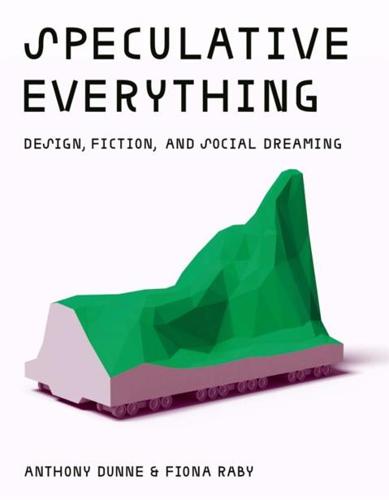
Speculative Everything: Design, Fiction, and Social Dreaming
by
Anthony Dunne
and
Fiona Raby
Published 22 Nov 2013
The relationship between reality and unreality is particularly interesting in architecture because many buildings are designed to be built but remain on paper due to economic or political reasons. House VI is unusual because it was intentionally an uncompromising piece of architectural art someone could live in, just about. It was as though the owner lived inside an idea rather than a building. Beyond this lies the world of film design and more recently game design, which deals less with conceptual objects and more with imaginary worlds. We will return to this subject later in chapter 5. Peter Eisenman, House VI, east facade, 1975. Photograph by Dick Frank. Photograph courtesy of Eisenman Architects. Peter Eisenman, House VI, 1975, axonometric drawings.
…
Probably the most abstract discussion is in philosophy where differences between the many shades of real, fictional, possible, actual, unreal, and imaginary are teased out. In social and political science the focus is on modeling reality; in literary theory it is on the semantics of the real and nonreal ; in fine art, make-believe theory and fiction; in game design, literal world creation; and even in science there are many rich strands of discourse around fictionalism, useful fictions, model organisms, and multiverses.4 For us, the key distinction is between actual and fictional. Actual is part of the world we occupy whereas fictional is not. 5 Of all these areas of research, it is literature and fine art that offer the most promising sources of inspiration.
…
Jaime HayOn's The Fantasy Collection (2008) for LladrO, for instance, consists of porcelain souvenirs from a parallel world. In fashion, too, it is common to use advertising to suggest the imaginary world behind the brand, especially for perfumes, which often drift toward a form of contemporary fairy tale. But game design has to be the area where fictional world building is most developed. Whole worlds are designed, visualized, and linked. Some readers probably remember the first time they experienced an open world video game such as Grand Theft Auto (1997) and how enjoyable it was to drive around and explore the world created by its designers rather than playing the game.
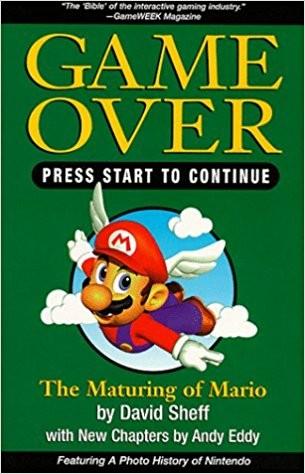
Game Over Press Start to Continue
by
David Sheff
and
Andy Eddy
Published 1 Jan 1993
Many senses had to be taken over almost instantly to make the game play “hot,” to use Uemura’s term. The entire consciousness of a player had to be captured. There seemed to be two keys to accomplishing this: fast action, or a combination of fast action and intellectual challenge. The headier stuff was up to the game designers, but fast action required complex and expensive circuitry. Uemura spent eighteen-hour days with the arcade engineers trying to determine the essence of the key components to the circuitry in the best coin-operated games. Only that essence could be carried over to the central processing unit of the new system.
…
Now the problem was that there were not enough good games. Yamauchi had wisely anticipated the importance of software and prepared for it. One of the instructions he had issued to Uemura was that the Famicom must “be appreciated by software engineers.” It had to be easy to program and able to do the kinds of things that game designers dreamed of doing. Any company, given the time, could copy the Famicom hardware. The key to staying ahead was software. By the time a competitor came out with a game that was as good as a successful Nintendo game, Nintendo had to be releasing a game that left the others in the dust. Nintendo would, Yamauchi decided, become a haven for video-game artists, for it was artists, not technicians, who made great games.
…
“An ordinary man,” Yamauchi said, “cannot develop good games no matter how hard he tries. A handful of people in this world can develop games that everybody wants. Those are the people we want at Nintendo.” He was interested only in the one genius, as he put it, who would drive Nintendo. He wanted to turn Nintendo into the single place the hottest game designers wanted to be associated with. Since, in Japan, most employees stayed with one company for their entire career, it was generally impossible to seduce good designers from other companies. That meant that they would have to come to Nintendo on their own, fresh from college. Yamauchi wanted to create a place where his geniuses would be encouraged and inspired.
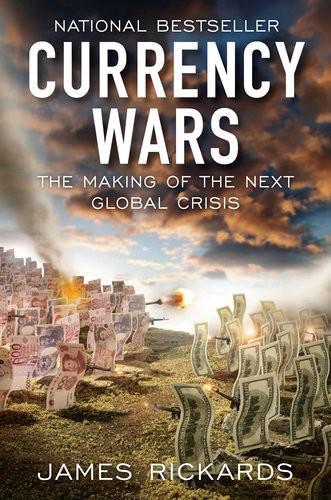
Currency Wars: The Making of the Next Gobal Crisis
by
James Rickards
Published 10 Nov 2011
Our third group planning session took place in mid-November; this time there were a few new faces, including senior officials from the intelligence community. We were no longer contemplating the feasibility of a financial war game; by now it was game on and we were specifically focused on game design. I presented detailed financial warfare scenarios and made a pitch that the game design should incorporate unpredictable outcomes that would surprise both attackers and defenders due to the complex dynamics of capital markets. By the conclusion, the Defense Department and the APL game design team had received enough input from the experts to complete the final design. All that remained was to select the participants, set the date and let the game begin.
…
The financial war game was the Pentagon’s first effort to see how an actual financial war might evolve and to see what lessons might be learned. The war game had been many months in the making, and I had been part of the strategy sessions and game design that preceded the actual game. Although a well-designed war game will try to achieve unexpected results and simulate the fog of real war, it nevertheless requires some starting place and a set of rules in order to avoid descending into chaos. APL’s game design team was among the best in the world at this, but a financial game required some completely new approaches, including access to Wall Street expertise, which the typical physicist or military planner does not have.
…
One critical cell is the white cell, which consists of a game director and participants designated as umpires or referees. The white cell decides if a particular game move is allowed and also determines who wins or loses during each round of the game. Generally the game designers attribute specific goals or objectives to each cell; thereafter the players are expected to make moves that logically advance those objectives rather than move off in unexplained directions. The game design team will also use political scientists, military strategists and other analysts to describe the initial conditions affecting all the players—in effect, they determine the starting line. Finally, some system of power metrics is devised so that the relative strength of each cell can be established at the beginning of the game, in the same way that some armies are larger than others or some economies have greater industrial potential at the start of any war.
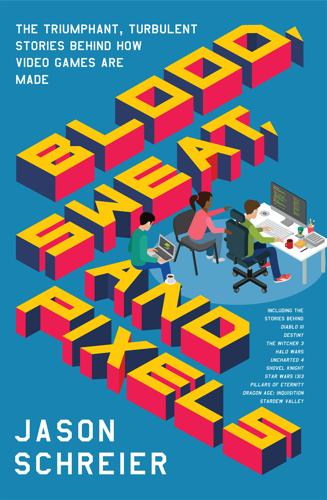
Blood, Sweat, and Pixels: The Triumphant, Turbulent Stories Behind How Video Games Are Made
by
Jason Schreier
Published 4 Sep 2017
It’s impossible to know how “fun” a game will be until you’ve played it. You can take educated guesses, sure, but until you’ve got your hands on a controller, there’s no way to tell whether it feels good to move, jump, and bash your robot pal’s brains out with a sledgehammer. “Even for very, very experienced game designers, it’s really scary,” said Emilia Schatz, a designer at Naughty Dog.* “All of us throw out so much work because we create a bunch of stuff and it plays terribly. You make these intricate plans in your head about how well things are going to work, and then when it actually comes and you try to play it, it’s terrible.”
…
“You [think]: ‘There’s something that doesn’t feel right. What doesn’t feel right about this game?’ That’s where Josh and I come in and we sit down and we really analyze what is actually wrong with this.” After building a few technical prototypes, the team’s first major goal was to hit “vertical slice”—a small chunk of the video game designed to resemble the final product in as many ways as possible. During traditional, publisher-funded development, it was important for a vertical slice to look impressive, because if the publisher didn’t approve, the studio wouldn’t get paid. “When you’re focusing on a publisher, a lot of the times you’ll just do things the wrong way [on purpose],” said Bobby Null, the lead level designer.
…
Each index card contained a story beat or scene idea—one midgame sequence, for example, was just called “epic chase”—and taken together, they told the game’s entire narrative. “One thing we’ve never done here is sat down and written down an entire script for the whole game start to front,” said Josh Scherr, a writer who sat with Straley and Druckmann for many of these meetings. “That never happens. And the reason it doesn’t happen is because game design is an iterative process, and if you do that you’re just asking for heartbreak when things inevitably change because the gameplay doesn’t work out the way you expected it to, or you have a better idea further down the line, or anything like that. You have to be able to be flexible.” Over the next few weeks, Druckmann and Straley put together a two-hour presentation that outlined their vision for Uncharted 4, then showed it to the rest of Naughty Dog.
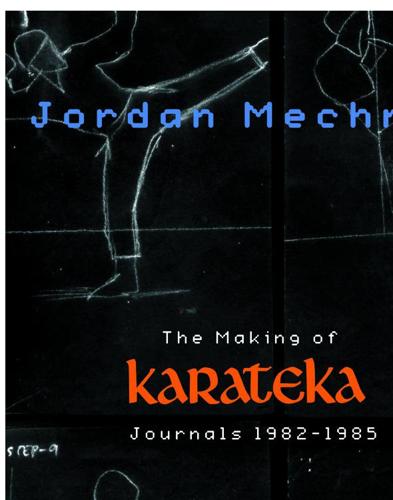
The Making of Karateka: Journals 1982-1985
by
Jordan Mechner
Published 26 Dec 2012
My hesitation has always been “How could I devote my whole life to programming arcade games? Can you see me at 65?” But why limit myself to arcade games? Why not adventure games, AI games…? Why not invent a whole new style of games, games that go beyond games? And when I get too old to code, why not do game design? July 17, 1982 Got up relatively early (9) and worked on Deathbounce for a few hours. Then it got so hot and I got so sleepy that I just didn’t feel like working anymore. So I read Catch-22. Great book. July 18, 1982 95°. Too hot to work. The Apple’s overheating. Gonna take it to be fixed.
…
If you die, the princess falls on the floor in grief as the villain exults. For the first time in a long time, I’m satisfied. The vision in my head is now OK. Now all that remains is to make it reality. I’m indebted to Dad for his good ideas and advice. Really, what’s as important as anything in game design is taste: choosing between alternatives. In the beginning, I envisioned this game as two players facing each other across a mat. Hah! This game is gonna be great! August 21, 1983 More good ideas: You fight the villain in the dungeon. You kick the door open, and he’s hiding behind it.
…
The stakes are too high to waste this. I have a feeling this year is a turning point. If I stay in my rut another year, I’ll never get out of it. Be At Cause. Be powerful, dangerous. Take responsibility for your actions. © 1972 est Open up to people. Be generous. Care. September 25, 1983 Put in three “game-design” hours on Karateka. Not nearly the 20 hours a week I’ll have to average to finish in mid-October according to schedule. September 28, 1983 Tried to work on Karateka, but I just was not in the mood. This is not good. Should I force myself to just sit in front of the computer until it’s finished?
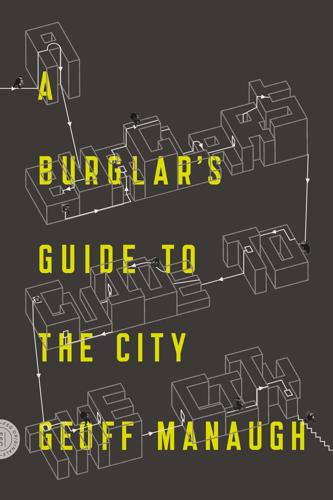
A Burglar's Guide to the City
by
Geoff Manaugh
Published 17 Mar 2015
Seen this way, even the most mundane or overlooked buildings and cityscapes around us can inspire the same level of wonder and admiration we might normally reserve for international landmarks, such as the Eiffel Tower or the Houses of Parliament. * For Randy Smith, a Texas-based game designer and a level architect on the legendary Thief games, designing a game environment in order to foreground deeply enjoyable opportunities for criminal stealth, deception, and subterfuge is a complex but rewarding challenge. The Thief series, the first of which came out in 1997, is widely credited as introducing the three-dimensional, first-person stealth game.
…
At first, this might seem relevant only to the world of computer games or burglary fiction, but game play in the Thief series is not at all unlike the way security worked at Toys “R” Us, for example, with Jeffery Manchester hidden in the walls, staring at his baby monitor, watching the internal traffic of the store ebb and flow, preparing for his moment of attack. Smith pointed out how incredibly easy it is for a game designer to create an impossible level or an impenetrable environment—a castle gate that no one can get past, a high-rise no one will ever be able to sneak into. The real challenge is to find just the right level of difficulty so that slipping past the guards and maneuvering through the rooms and corridors becomes enjoyable. This is what he meant when he suggested that game designers need to “introduce deliberate weak points or blind spots” into their environments, such as removing the guards from a room at key moments or creating otherwise unrealistic amounts of shadow at the edge of a courtyard so that a player can walk past without being seen.
…
Moving through an architectural interior without being detected was, in many ways, the entire point of the story. The player’s goal was not to kill as many people as possible, but to slip past them unseen and unheard. Sound—or, rather, not creating any—became a central design feature of the Thief universe. During our in-depth conversation about burglary and game design, Smith laughed as he explained, “You would think it was our job to design buildings that are hard to break into, but what we actually want to do is design buildings that will channel the movement of the player along different sequences. We introduce deliberate weak points or blind spots where a player can hide, and we make the guards or the architecture itself do weird things to open up more player opportunities.”

SuperBetter: The Power of Living Gamefully
by
Jane McGonigal
Published 14 Sep 2015
In games, we have the notion of “epic wins,” or extremely positive outcomes that can arise when you least expect them, from the most unlikely or daunting circumstances. No wonder SuperBetter works so well for so many people! Once you understand the science, it makes perfect sense. Of course a game designer like me would create a system that taps into these naturally gameful ways of thinking and acting. I didn’t know it at the time, but SuperBetter was essentially a perfect road map to post-traumatic and post-ecstatic growth. Not because I was a genius but because I was a good game designer, and all good games train us in the seven ways of thinking and acting that help us turn extreme stress and challenge into positive transformation. These seven rules to live by make up the SuperBetter method, and they are the heart of this book: 1.
…
Your new skills combined with your increased confidence will allow you to tackle harder quests in the future. This creates a positive upward spiral of success. (Game designers use this same method to build player skills and create escalating challenge in the game world. Players want to feel more powerful and skillful over time, which is why quests get harder and harder the further you get in the game. But to get players ready to succeed at those ambitious goals, game designers must first give them quests that train them in the necessary skills and abilities.) I experienced exactly that kind of upward spiral myself, starting from the moment I completed my first concussion-recovery quest.
…
So if post-traumatic growth and post-ecstatic growth work the same way, what exactly is that process? What makes the difference between buckling under extreme stress and flourishing because of it? What determines whether you’ll be weakened by adversity or strengthened by it? This is where the research gets really exciting—at least for a game designer like me. It turns out that there are seven ways of thinking and acting that contribute to post-traumatic and post-ecstatic growth. And they are all ways that we commonly think and act when we play games. 1. Adopt a challenge mindset. You need to be willing to engage with obstacles and look at stressful life events as a challenge, not a threat.

Your Computer Is on Fire
by
Thomas S. Mullaney
,
Benjamin Peters
,
Mar Hicks
and
Kavita Philip
Published 9 Mar 2021
It is possible to change what a game is about through skinning—or take a game that doesn’t appear to be about anything and give it a clear, sensible theme. For example, you can create versions of Tetris that are about death, as we see in examples ranging from those imagined by famous game designers Raph Koster and Clint Hocking to that of the comedy group Monty Python. Deadly Tetris Koster, in his 2004 book A Theory of Fun for Game Design, offers his version of Tetris as a thought experiment: Let’s picture a mass murder game wherein there is a gas chamber shaped like a well. You the player are dropping innocent victims down into the gas chamber, and they come in all shapes and sizes.
…
And we need the university to turn to games as an area of research, to reclaim its role from the moment when video games first developed—to be the place from which new logics, models, and game designs founded upon them emerge. Until then, you can’t make games about much. Notes 1. Hasbro Games, rule book for Monopoly Brand Property Trading Game from Parker Brothers: The .com Edition, tabletop game (Hasbro, Pawtucket, RI). 2. Raph Koster, Theory of Fun for Game Design (Paraglyph, 2004), 168. 3. Raph Koster, “ATOF Tetris Variant Comes True,” Raph’s Website (blog) (February 13, 2009), https://www.raphkoster.com/2009/02/13/atof-tetris-variant-comes-true/. 4.
…
As a result, the “best” game graduate program in the 2018 rankings is Southern Methodist University’s Guildhall, which undertakes no research and describes itself as “Built by the industry, for the industry.” See TPR Education IP Holdings, LLC, “Top Game Design Press Release | Public Relations | The Princeton Review | The Princeton Review,” accessed March 30, 2018, https://www.princetonreview.com/press/game-design-press-release; Southern Methodist University, “About | SMU Guildhall,” accessed March 30, 2018, https://www.smu.edu/Guildhall/About. III Where Will the Fire Spread? 12 Coding Is Not Empowerment Janet Abbate “Learn to code and change the world!”
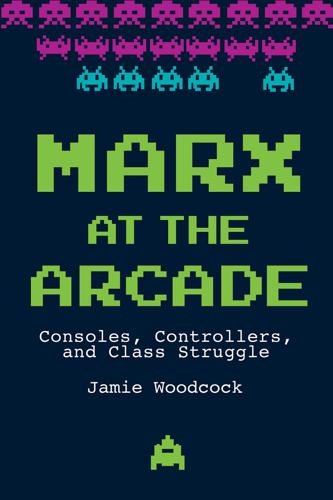
Marx at the Arcade: Consoles, Controllers, and Class Struggle
by
Jamie Woodcock
Published 17 Jun 2019
Noah Wardrip-Fruin and Pat Harrigan (Cambridge, MA: MIT Press, 2004), 140. 6Richard Rouse, Game Design (Sudbury, MA: Wordware Publishing, 2004), xx. 7Mark Fisher, Capitalist Realism: Is There No Alternative? (Winchester: Zero Books, 2009). 8Johan Huizinga, Homo Ludens: A Study of the Play-Element in Culture (Kettering, OH: Angelico Press, 2006), 1. 9Huizinga, Homo Ludens, 9. 10Notes from Below editors, “The Workers’ Inquiry and Social Composition,” Notes from Below, January 29, 2018, www.notesfrombelow.org/article/workers-inquiry-and-social-composition. 11Huizinga, Homo Ludens, 13. 12Katie Salen and Eric Zimmerman, Rules of Play: Game Design Fundamentals (Cambridge, MA: MIT Press, 2003), 94. 13Edward Castronova, Synthetic Worlds: The Business and Culture of Online Games (Chicago, IL: University of Chicago Press, 2005), 147. 14Salen and Zimmerman, Rules of Play, 95. 15Nick Dyer-Witheford and Greig de Peuter, Games of Empire: Global Capitalism and Video Games (Minneapolis and London: University of Minnesota Press, 2009), xxxiv. 16Roger Caillois, Man, Play and Games (Urbana and Chicago: University of Illinois Press, 2001), 5–6. 17Caillois, Man, Play and Games, 9–10. 18Caillois, Man, Play and Games, 12, 13. 19Lars Kristensen and Ulf Wilhelmsson, “Roger Caillois and Marxism: A Game Studies Perspective,” Games and Culture 12, no. 4 (2017): 388. 20Kristensen and Wilhelmsson, “Roger Caillois and Marxism,” 388. 21Kristensen and Wilhelmsson, “Roger Caillois and Marxism,” 393. 22Marshall McLuhan, Understanding Media: The Extensions of Man (London: Routledge, 2001), 258. 23McLuhan, Understanding Media, 259. 24“Video Game History Timeline,” National Museum of Play, www.museumofplay.org/about/icheg/video-game-history/timeline. 25Claude E.
…
The game represented an important break, showing that “simulations could also be a diversion from working on mass death if they were cut loose from serious application, enjoyed for their technical ‘sweetness’ and oddity without instrumental purpose, transformed into play.”32 Unlike the previous demonstrations of potential uses for computers, of working through the practicalities of nuclear war, Spacewar! was a game designed to be played. These kinds of escapes became possible, in the words of Dyer-Witheford and de Peuter, “because the military allowed its immaterial workers a lot of latitude.” Unlike the user of the Raytheon military simulations, these immaterial workers understood how to program these computers.
…
Within this process, “the creative role of designers and developers faces off against the economic imperatives of efficient production for a competitive market, reflected in the demands of publishers and console manufacturers and embodied in technology.”59 Most videogames are not made from scratch. Instead, developers build upon existing game engines using something called “middleware.” This makes “the process of game design easier by offering programmers standardized modules,” also known as software development kits (or SDKs).60 As Graeme Kirkpatrick has noted, the use of technology in the labor process of videogame development involves three related processes. The first is a type of standardization that narrows the creative possibilities for making games.
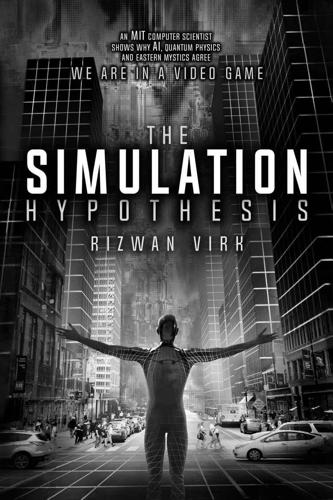
The Simulation Hypothesis
by
Rizwan Virk
Published 31 Mar 2019
Adam Curry, founder of Entangled, former researcher for Princeton's PEAR Lab “The Simulation Hypothesis provides a deft and knowledgeable blend of video game history, hard science speculation, and science fiction references. Whether or not you believe we all exist in a simulation, I found it both fascinating and entertaining.” Noah Falstein, former chair of the IGDA, former Chief Game Designer at Google “In The Simulation Hypothesis, Riz Virk takes current trends of immersion in video games and personalized entertainment to their logical conclusion: how to build a simulation as real as what we experience in daily life. While no one can say for certain how many lives we have, my advice is to the assume it's a "one-life game" and make the best of it!"
…
And of course, the biggest question of all: Why would we be in a probabilistic world where making a choice (or having an observation) collapses a probability wave to a single timeline or probability? As I began to explore this last question in some depth, it brought back my early experiences with Tic Tac Toe and with more sophisticated video game algorithms. As video game designers, we have to map out the possible “futures”—paths that might be taken inside the game. Most simple AI in games simulates moves of “possible futures” and then picks the “best possible move” based on those possible futures. These possible futures are similar to the idea of a probability wave. In fact, the whole field of probability was originally created for gaming.
…
When we incarnate in the future, we can choose which particular tasks of our past karma we should tackle in our new life. Buddha’s endless “Wheel of Life” tells of the purpose of reincarnation: The reason we keep incarnating in future lives is to fulfill the “missions” created in our present and past lives. To a video game designer like myself, the twin concepts of karma and reincarnation sound a lot like video games in which a player has multiple lives and an on-going list of “quests” and “achievements.” The accomplishment of one task (or quest) unlocks new quests that get added to the list. This is a lot like the process of creating new karma described in Buddhism.
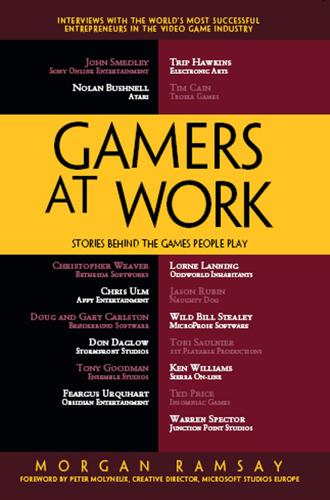
Gamers at Work: Stories Behind the Games People Play
by
Morgan Ramsay
and
Peter Molyneux
Published 28 Jul 2011
We are not Pavlov’s dogs, but B.F. Skinner proved long ago that the strongest form of behavioral modification is variable-ratio reinforcement. The slot machine thrives on it, but is a social ill because it is a dehumanizing addiction. In a more interesting, thought-provoking, and truly interactive game design, the principles of reinforcement are very useful. Nobody is going to do anything if, in the end, it doesn’t constructively involve your emotions. Ramsay: In 2006, quality of life became a hot-button issue for EA. Can you provide any insight into the labor environment then? Did you do anything differently with the culture at Digital Chocolate?
…
Although it was your decision to raise his status, were you ever personally uncomfortable with his shadow? Stealey: No, because I got to be the CEO, and I got to be the big cheese. He got to be the brilliant programmer. In the end, I probably should have done it a different way. It should have been “Wild Bill’s Pirates!” But you know what? Sid is really the programmer. He’s really the brilliant game designer. I’m just the business guy, and I was a good marketing guy. And I had some very good marketing people working for me. I was the first marketing guy, but later, we had a lot of marketing muscle. Ramsay: Who was your marketing muscle? Stealey: We had Gerry Blair, a great marketing guy. We had Deborah Tillett, one of our really great marketing persons.
…
The very first marketing guy was Fred Schmidt, who eventually went on to run Origin Systems. Fred is a brilliant marketing guy. Those three people were really marketing geniuses as far as I’m concerned. Ramsay: Where was Sid’s interest concerning game development? What drove him to create: design or technology? Stealey: Game design only. His first original game after the many military games was the Pirates! game. Later, we were doing the original Railroad Tycoon, and I said, “Boy, this is really a neat game. Where’d you get the idea?” He said, “Oh, from this box.” It was an Avalon Hill board game called 1830. Oh, no! Eric Dott, the president of Avalon Hill, called me and said, “Bill, you’re doing my board game as a computer game.”
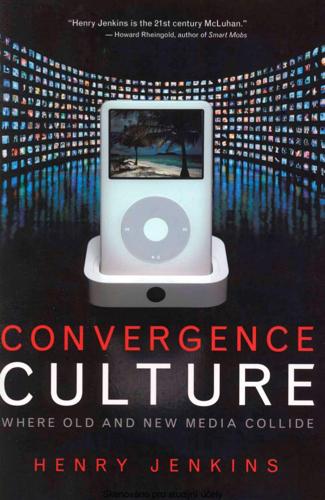
Convergence Culture: Where Old and New Media Collide
by
Henry Jenkins
Published 31 Jul 2006
The game has attracted international interest—42 percent of visitors to the official America's Army Web site log in from outside the United States (though some of these are probably service personnel and their families stationed overseas.) There are organized groups of players and brigades, representing a range of different nationalities, including some from parts of the world that have traditionally been regarded as enemies. The game's designers advocated successfully for the suspension of many military regulations restricting the expression of opposing ideas to create a robust forum—which they call a "Virtual Community of Interest in Soldiering." There, civilians and service men ' W a g n e r JamesAu,"John K e r r y : T h e V i d e o Game," So7on, April 13,2004, http://www.salon.com/tech/ feature/2004/04/13/battlefiekLvietnam/.
…
Joseph Campbell, the author of The Hero with a Thousand Faces (1949), praised Star Wars for embodying what he has described as the " m o n o m y t h , " a conceptual structure abstracted from a cross-cultural analysis of the w o r l d ' s great religions. Today, many screenwriting guides speak about the "hero's journey," popularizing ideas from Campbell, and game designers have similarly been advised to sequence the tasks their protagonists must perform into a similar physical and spiritual ordeal. Audience familiarity with this basic plot structure allows script writers to skip over transitional or expository sequences, throwing us directly into the heart of the action. 42 43 Similarly, if protagonists and antagonists are broad archetypes rather than individualistic, novelistic, and rounded characters, they are immediately recognizable.
…
I've got m y w o r l d , I've got m y arcs, some of those arcs can be expressed i n the video game space, some of them can be expressed i n the film space, the television space, the literary space, and you are getting to the true transmedia storytelling." With Enter the Matrix, the "origami u n i c o r n " takes several forms, most notably refocusing of the narrative around Niobe and Ghost. A s the game's designer, D a v i d Perry, explains, every element of the game went toward helping us understand w h o these people are: "If you play as Ghost, who's a Z e n Buddhist Apache assassin, y o u ' l l automatically ride shotgun i n the driving levels, which allow y o u to fire out the w i n d o w at agents hunting y o u d o w n .
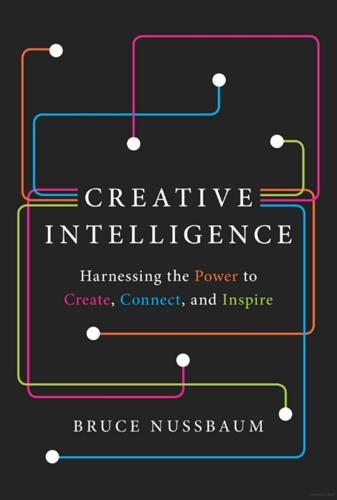
Creative Intelligence: Harnessing the Power to Create, Connect, and Inspire
by
Bruce Nussbaum
Published 5 Mar 2013
Ruben Rausing is usually credited: “Who We Are: Our Legacy,” Tetra Pak USA website, accessed September 10, 2012, http://www.tetrapak.com/us/ whoweare/heritage/pages/default.aspx. 117 Continuum then launched: Harry West interview, March 20, 2012, New York City. 118 In a recent Harvard Business Review: “Life’s Work: Richard Serra,” Harvard Business Review, March 2010, accessed September 13, 2012, http://hbr.org/2010/03/lifes-work-richard-serra/ar/1. 119 Though there are countless ways of playing: My conversations with Katie Salen, a graduate of the Rhode Island School of Design in game design, and my reading of her book, have had a huge impact on how I understand the creative process. Salen introduced me to the idea of “magic circles” and connected the engaged interaction of gaming to the educational philosophy of John Dewey, who talked about “learning by doing.” Salen is helping to remake the face of public education; she has set up three public schools—two in Chicago, one in New York—that team up teachers with game designers to build an exciting learning experience for students; Institute of Play, http://www.instituteofplay.org/about, accessed September 17, 2012. 119 Though scholars are in disagreement: Marilyn Yalom, Birth of the Chess Queen (New York: HarperCollins, 2004), 3; David Shenk, The Immortal Game (New York: Doubleday, 2006), 16–20. 119 “This was a war game”: Shenk, The Immortal Game. 119 According to military strategist: Max Boot, War Made New (New York: Gotham Books, 2006), 122. 120 In 2002, General Tommy Franks: GlobalSecurity.org, http://www.globalsecurity.org/military/ops/ internal-look.htm, accessed September 13, 2012. 120 Internal Look was also used: Mark Mazzetti and Thom Shanker, “U.S.
…
It’s created what business strategists are calling an “ecosystem,” much like Apple’s, that’s composed of a community of consumers, followers really, participating in activities that are fun and meaningful to them. More than six million runners log on to see how they fared against their competitors. Once you’ve thought a little bit about who’ll be playing your game, you can begin to develop some rules. BUILD YOUR OWN GAMES There are many different kinds of games, but game designers frequently distinguish between two kinds: simple and complex. Simple games include puzzles and, like the New York Times crossword, they do not change as a consequence of the decision you make. Puzzles are simple to solve (though not necessarily simple to create, as anyone who’s crafted a crossword will attest), they often are played alone, and they have exactly one solution.
…
At the end, these children have improved the following competencies: digital literacy, creative problem solving, and collaboration. They’ve designed and traded digital avatars via Bluetooth, solved mysteries with GPS tags, and created and played their own digital and “physical” games. While these kinds of summer camps for adults don’t exist (yet), what follows are some basic principles of game design that you can keep in mind when you’re embarking on a new project, meeting with a team, or planning to deal with a serious issue that has resisted resolution so far (like getting kids to eat vegetables). Playing a game may provide the motivation and rewards to get people to change their behavior and their goals.

The Friendly Orange Glow: The Untold Story of the PLATO System and the Dawn of Cyberculture
by
Brian Dear
Published 14 Jun 2017
To help players find other players to join up with, Oubliette’s clever authors had created various “taverns” in which you could meet other players and form parties. In a way, taverns were Big Boards in disguise, a similar mechanism for players to find others and go down into the dungeons together. — Renowned computer game designer Will Wright, creator of a series of bestselling videogames including Sim City, The Sims, and Spore, often speaks of two major themes in the field of game design: the balance of technology and psychology, and the “possibility space.” Essential to making a good game, Wright argues, is striking a good balance between the technical aspects of the game’s implementation (the game’s technology) and the model of the game as rendered in a player’s mind (the game’s psychology).
…
The keyboards on some of the PLATO IV terminals at Illinois were newer, with little bumps added on the F and J index-finger keys for touch-typists (many keyboards today still have those bumps). Silas would have none of it. He hated the bumps, and they had to go. For every terminal he sat down to work on, he’d chip the little plastic dots away, shaving them off until the keys were smooth. Warner and Daleske discussed Empire game design ideas but mostly spent the time play-testing the game and observing how other PLATO users played it. Daleske noticed that whenever Warner hit a lull when he was working on PLATO, he would reach into a pocket, pull out a book, and read a few pages. Then he’d put it back, and do some more work. After a while he would reach into a different pocket, pull out a different book, and start reading from that.
…
“A great game gives the players the freedom to make a vast number of choices,” says Dirk Pellett, “some of which are more beneficial than others, and some of which are disastrous, and lets them figure out which is which.” Dnd is historic not only for being one of the earliest dungeon games on any computer, but also for a particular game design feature that many other games would copy over the coming years and still employ today. In the computer gaming world it’s a concept called “the boss”—it might be a monster, it might be one hard-to-obtain item, or it might be both. In Dnd the boss item was something called the Orb, and finding it was the ultimate quest for a player.
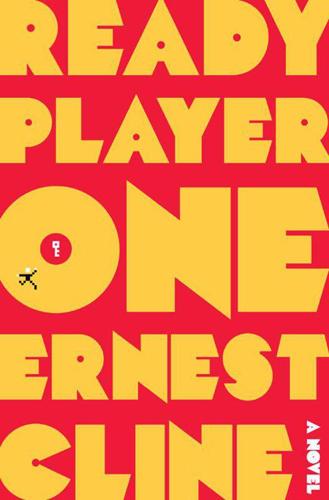
Ready Player One
by
Ernest Cline
Published 15 Feb 2011
I prepped for the meeting by pulling up a search engine and learning everything I could about Nolan Sorrento. He had a PhD in Computer Science. Prior to becoming head of operations at IOI, he’d been a high-profile game designer, overseeing the creation of several third-party RPGs that ran inside the OASIS. I’d played all of his games, and they were actually pretty good. He’d been a decent coder, back before he sold his soul. It was obvious why IOI had hired him to lead their lackeys. They figured a game designer would have the best chance of solving Halliday’s grand videogame puzzle. But Sorrento and the Sixers had been at it for over five years and still had nothing to show for their efforts.
…
People employed by Gregarious Games during this period say that Halliday frequently locked himself in his office, where he programmed incessantly, often going without food, sleep, or human contact for days or even weeks. On the few occasions that Halliday agreed to do interviews, his behavior came off as bizarre, even by game-designer standards. He was hyperkinetic, aloof, and so socially inept that the interviewers often came away with the impression he was mentally ill. Halliday tended to speak so rapidly that his words were often unintelligible, and he had a disturbing high-pitched laugh, made even more so because he was usually the only one who knew what he was laughing about.
…
“There you go,” she said, stepping back. “Thanks,” I said. “But you shouldn’t have. We’re competitors, you know.” “I know. But we can still be friends, right?” “I hope so.” “Besides, the Third Gate is still a long way off. I mean, it took five years for the two of us to get this far. And if I know Halliday’s game-design strategy, things are just going to get harder from here on out.” She lowered her voice. “Listen, are you sure you don’t want to stick around? I bet we can both play at once. We can give each other Jousting tips. I’ve started to spot some flaws in the king’s technique—” Now I was starting to feel like a jerk for lying to her.
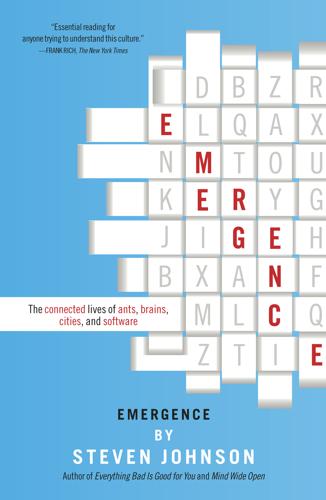
Emergence
by
Steven Johnson
The hard work of tomorrow’s interactive design will be exploring the tolerance—that suspension of control—in ways that enlighten us, in ways that move beyond the insulting residue of princesses and magic spells. * * * With these new types of games, a new type of game designer has arisen as well. The first generation of video games may have indirectly influenced a generation of artists, and a handful were adopted as genuine objets d’art, albeit in a distinctly campy fashion. (Tabletop Ms. Pac-Man games started to appear at downtown Manhattan clubs in the early nineties, around the time the Museum of the Moving Image created its permanent game collection.) But artists themselves rarely ventured directly into the game-design industry. Games were for kids, after all. No self-respecting artist would immerse himself in that world with a straight face.
…
In the years that followed its publication, I began to hear word of the book’s influence on a wonderfully diverse range of fields and professions: from New Urbanists rebuilding neighborhoods and planning new communities; from city mayors in Brazil creating new models of participatory democracy; from the strategists behind Howard Dean’s groundbreaking use of the Internet to build grassroots support for his presidential run in 2004; from Web entrepreneurs and game designers; from experts in management theory, who had begun to think of supply chains as ant colonies; from artists designing new forms of algorithmic expression that showcased the unpredictable creativity of emergent systems. There was one other unanticipated twist. The book was published in the United States during the first week of September 2001.
…
But all this has changed in recent years, and a new kind of hybrid has appeared—a fusion of artist, programmer, and complexity theorist—creating interactive projects that challenge the mind and the thumb at the same time. And while Tap, Type, Write and Zelda were not, strictly speaking, emergent systems, the new generation of game designers and artists have begun explicitly describing their work using the language of self-organization. This too brings to mind the historical trajectory of the rock music genre. For the first fifteen or twenty years, the charts are dominated by lowest-common-denominator titles, rarely venturing far from the established conventions or addressing issues that would be beyond the reach of a thirteen-year-old.
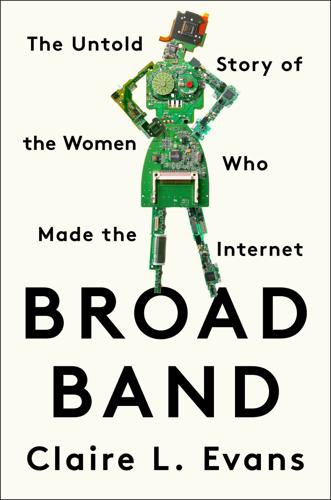
Broad Band: The Untold Story of the Women Who Made the Internet
by
Claire L. Evans
Published 6 Mar 2018
An irony: even as computer memory multiplies, our ability to hold on to personal memories remains a matter of will, bounded by the skull and expanded only by our capacity to tell stories. There are technical women in these pages, some of the brightest programmers and engineers in the history of the medium. There are academics and hackers. And there are culture workers, too, pixel pushers and game designers and the self-proclaimed “biggest bitch in Silicon Alley.” Wide as their experiences are, they’ve all got one thing in common. They all care deeply about the user. They are never so seduced by the box that they forget why it’s there: to enrich human life. If you’re looking for women in the history of technology, look first where it makes life better, easier, and more connected.
…
But the market for personal computers was small, and the competition steep: Sears had the Atari systems, Radio Shack was pushing its own Tandy computer, and the golden age of arcade games was well underway. When CyberVision folded in 1979, Brenda still hadn’t finished her dissertation. But no matter—she was a game designer now. When she moved out to California to work for Atari, she saw the ocean for the first time. We sit in her garden and talk over iced tea; Tejava and pomegranate juice, the house drink. She sucks on an American Spirit, sitting unnaturally straight. She’s recovering from back surgery, her second, and her shock of curly silver hair is accented with pops of magenta and aquamarine.
…
It stood to reason that if boys were hogging the machines at the school computer lab to play games that girls didn’t like, girls would later be disadvantaged in a workplace, and a world, where computer literacy is not only beneficial but necessary. Making games that girls did like seemed like the obvious solution. As one female game designer put it, “We cannot expect women to excel in technology tomorrow if we don’t encourage girls to have fun with technology today.” It was a smart business move, too: girls represented a huge untapped market, and the prevailing wisdom was that anyone who made a computer game that really appealed to them could conceivably double the games industry.
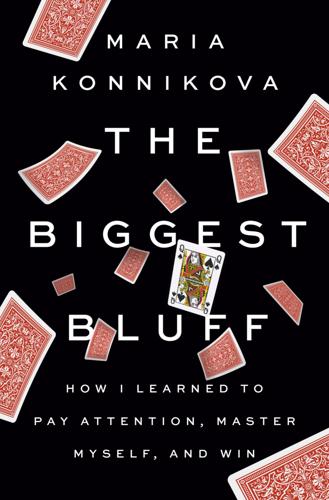
The Biggest Bluff: How I Learned to Pay Attention, Master Myself, and Win
by
Maria Konnikova
Published 22 Jun 2020
The best games are the ones that challenge our misperceptions, rather than pandering to them in order to hook players. Poker pushes you out of your illusions, beyond your incorrect comfort zone—if, that is, you want to win. “Poker wasn’t designed by a game designer in the modern sense,” Lantz points out. “And it’s actually bad game design according to modern-day conceptions of how video games are designed. But I think it’s better game design, because it doesn’t pander.” If you want to be a good player, you must acknowledge that you’re not “due”—for good cards, good karma, good health, money, love, or whatever else it is. Probability has amnesia: each future outcome is completely independent of the past.
…
We humans have wanted chance to be equitable for quite some time. Indeed, when we play a game in which chance doesn’t look like our intuitive view of it, we balk. Frank Lantz has spent over twenty years designing games. When we meet at his office at NYU, where he currently runs the Game Center, he lets me in on an idiosyncrasy of game design. “In video games where there are random events—things like dice rolls—they often skew the randomness so that it corresponds more closely to people’s incorrect intuition,” he says. “If you flip heads twice in a row, you’re less likely to flip heads the third time. We know this isn’t actually true, but it feels like it should be true, because we have this weird intuition about large numbers and how randomness works.”
…
Maurice Ashley is a legend in the world of chess—the first black grandmaster in history. In recent years, I’ve learned, he’s been teaching chess to kids at the Hunter College High School. He and other grandmasters gather on weekends to watch eight-year-olds play and analyze their moves. One weekend, Kevin Slavin, Frank Lantz’s cofounder of the game-design company Area/Code, observed Ashley at work. One thing struck him: how from a single list of moves, he can deduce a seemingly infinite amount about a child’s mindset. Slavin recalls one particular interaction that Ashley has with a little girl. “This is not your game,” he tells her after glancing at her sheet.
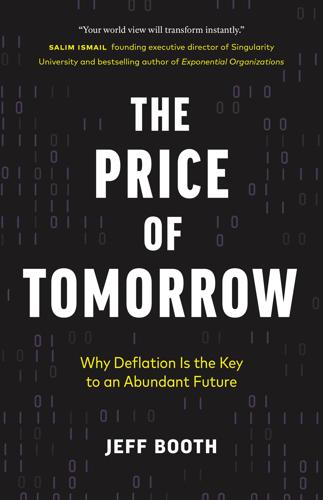
The Price of Tomorrow: Why Deflation Is the Key to an Abundant Future
by
Jeff Booth
Published 14 Jan 2020
And while you might believe that you spend the time on the game because of your own desire, let’s explore what drives that desire from a game designer’s perspective. What mechanisms in game design create habits and keep us coming back? For example, if a game is too difficult to win early, users get frustrated and do not stick with it, so game designers include early wins or prizes to create dopamine responses in your brains, which create stickiness. As the game progresses, if it is too easy to win or collect prizes, users quickly get bored and drop off. Over time, by increasing the difficulty in combination with giving ownership of prizes that can be used to get through harder levels, game designers create a ladder of motivators to keep your brain engaged.
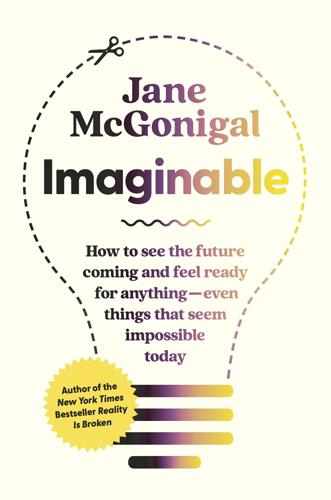
Imaginable: How to See the Future Coming and Feel Ready for Anything―Even Things That Seem Impossible Today
by
Jane McGonigal
Published 22 Mar 2022
The next decade is likely to be the most significant opportunity most of us have in our lifetimes to really transform the way society works—and we all have a part to play in creating that positive long-term change. There are many other books about how to think about the future. What makes this book different? Well, I’m a professional futurist and I’m a game designer. It’s not a common combination of career paths—as far as I know, I’m the only one in the world. But it’s a career combination that makes a lot of sense. As both a game designer and a futurist, I see my job as transporting people to imaginary worlds, to worlds that don’t exist—either because they’re virtual or because they’re future worlds that haven’t happened yet and may never happen.
…
What do you make of what’s going on right now? What should we be doing?” These messages were coming not just from my friends and family but from top executives at the biggest Silicon Valley tech companies, from government agencies, from international foundations. And they were right: yes, I had run a pandemic simulation. I’m a game designer, and I specialize in creating simulations that help people imagine the biggest global challenges we might face in the future. In 2008, I was the lead designer for a six-week future-forecasting simulation called Superstruct. The simulation was run by the Ten-Year Forecast group at the Institute for the Future in Palo Alto, California.
…
I always participate in the social simulations that I run, so that I can contribute my own personal insights and get the same benefits as other participants. During the Superstruct simulation back in 2008, I was trying to figure out what I would do during a pandemic to help others. How could I use my unique skills and experience to make a difference? I tried to think of a new way a game designer could uniquely help during a pandemic. It occurred to me that the negative stereotype of gamers as people who like to stay home alone in their basements playing video games would actually be a positive behavior during a pandemic. After all, what would public health experts be telling everyone to do if a deadly virus were spreading?
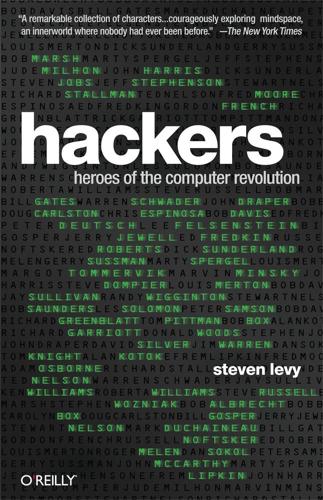
Hackers: Heroes of the Computer Revolution - 25th Anniversary Edition
by
Steven Levy
Published 18 May 2010
He would settle the lawsuit before it came to trial. Chapter 17. Summer Camp Ken Williams came to rely on people like John Harris, Third-Generation hackers influenced not so much by Robert Heinlein or Doc Smith as by Galaxian, Dungeons and Dragons, and Star Wars. A whole subculture of creative, game-designing hacker-programmers was blooming, beyond the reach of executive headhunters. They were mostly still in high school. To lure young programmers to Coarsegold, Williams took out ads in the Los Angeles Times tempting programmers to “Boot into Yosemite.” Typical of the replies was a man who told Ken, “My son’s a great Apple programmer and would like working with you.”
…
It was a game like Space Invaders, where you had a rocketship and had to fight off waves of invaders. But the waves were full of weird shapes and moved in all kinds of directions, and if the player tried to send a constant stream of bullets off to fight them, his “laser gun” would overheat and he would face almost certain death. It was the kind of game designed to spur cardiac arrest in the feeble-hearted, so fierce were the attackers and so violent were the explosions. It was not exactly a landmark in Apple gaming, since it was so derivative of the Space Invaders school of shoot-’em-ups, but it did represent an escalation in graphic pyrotechnics and game-playing intensity.
…
The game was based on the Iran hostage crisis: a chopper crossed enemy lines and tried to rescue sixty-four hostages—little animated figures who waved when they saw the helicopter. It was the big game of the year, and consistent with the Carlstons’ classy approach to the business. They loved their hackers. They talked all the time about what great artists their “game designers” were. Sirius had been developing its own superstars, but Gebelli, the designer who had done almost all their games in the first year of Sirius’ existence, was not one of them. According to Jerry Jewell, Gebelli thought that Sirius was not the best agency for display and sale of his artworks—this after receiving a quarter of a million dollars in his first year, noted Jewell incredulously—and, along with a defecting Sirius executive, began his own company, modestly named Gebelli Software.

Console Wars: Sega, Nintendo, and the Battle That Defined a Generation
by
Blake J. Harris
Published 12 May 2014
This had been Nintendo’s approach: dazzle the market with much-talked-about hits like Super Mario Bros., The Legend of Zelda, and Teenage Mutant Ninja Turtles, and as a result, seduce an entire generation into buying the NES. Unfortunately, this approach presented a problem for Katz because Nintendo held an iron grip on software developers. If game designers wanted their game on the NES, then Nintendo had them sign an exclusive agreement with a stringent noncompete clause. So if Nintendo got a game, there was no way that Sega could offer it on their system, and given Nintendo’s monstrous success, why would anyone choose Sega over Nintendo? Katz’s solution was to hitch Sega’s wagon to household names, believing the association between Sega and the likes of Joe Montana and Buster Douglas would bring about a certain level of respect and legitimacy.
…
The last remaining hope was for a designer in Japan to quickly create a game that would be compatible with Radarscope’s infrastructure (and, when finished, send over processors with that new game to America, where NOA employees could swap out the motherboard and then repaint the arcade cabinets to reflect this new game). This task was given to Shigeru Miyamoto, a floppy-haired first-time game designer who idealistically believed that videogames should be treated with the same respect given to books, movies, and television shows. His efforts to elevate the art form were immediately given a boost when he was informed that Nintendo was close to finalizing a licensing deal with King Features, enabling him to develop his game around the popular cartoon series Popeye the Sailor Man.
…
“This is not the reaction I was expecting,” Kalinske said, echoing not only Nakayama’s earlier words but also his distinctly disappointed tone. Nakayama thought for a moment. He was a man who chose his words wisely, so it was significant whenever he took an extra moment to do so. “It doesn’t matter what I think. It only matters what will sell.” But over the following days, tempers at Sega of Japan began to flare. The games designers believed they should be in charge of every aspect of Sonic. In normal circumstances, this would likely be the case, but since the character of Sonic had initially been created for the goal of success in the United States, Sega of America believed that they knew best when it came to the tastes and preferences of their audience.
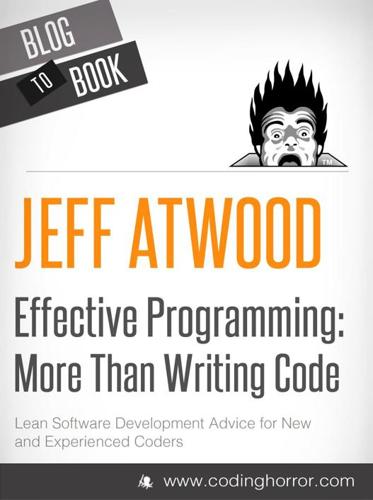
Effective Programming: More Than Writing Code
by
Jeff Atwood
Published 3 Jul 2012
That’s unfortunate, because the healing abilities of the medic class are frequently critical to winning a round. So what did Valve do? They released a giant set of medic-specific achievements to encourage players to choose the Medic class more often. That’s iterative game design based on actual, real-world gameplay data. Using detailed gameplay metrics to refine game design isn’t new; Bungie ran both Halo 2 and 3 through comprehensive usability lab tests. In April, Bungie found a nagging problem with Valhalla, one of Halo 3′s multiplayer levels: Player deaths (represented in dark red on this “heat map” of the level) were skewing toward the base on the left, indicating that forces invading from the right had a slight advantage.
…
Random discussion is fine for entertainment, but it’s not particularly useful, nor does it tend to generate the kind of artifacts that will be relevant a few years from now like Wikipedia does. So then the problem becomes how do you encourage groups to do what’s best for the world rather than their own specific, selfish needs? When I looked at this problem, I felt I knew the answer. But there wasn’t a word for it in 2008. Now there is: Gamification. Gamification is the use of game design techniques and mechanics to solve problems and engage audiences. […] Gamification works by … taking advantage of humans’ psychological predisposition to engage in gaming. The technique can encourage people to perform chores that they ordinarily consider boring, such as completing surveys, shopping, or reading web sites.
…
To a programmer, a game is a perfectly natural introduction to real programming problems. I’d posit that any field can use games as an introduction to the subject matter — and as a reinforcement to learning. Games help people work toward a goal It’s something of a revelation to me that solid game design can defeat the Greater Internet F**kwad Theory. Two great examples of this are Counter-Strike and Team Fortress. Both games are more than ten years old, but they’re still actively being played right now, by tens of thousands of people, all anonymous … and playing as cohesive teams! The game’s objectives and rules are all cleverly constructed to make working together the most effective way to win.

Supremacy: AI, ChatGPT, and the Race That Will Change the World
by
Parmy Olson
CHAPTER 2 Winning, Winning, Winning The sounds of screams, the roar of a roller coaster, and a clanking fairground organ marked the start of the 1994 computer game Theme Park. A large square of pixelated grass, empty, was waiting to be filled with food stalls in the shape of giant hamburgers and roller-coaster tracks that shot up to nosebleed heights. The goal was to make as much profit as possible. Theme Park wasn’t made by middle-aged game designers eager to teach business principles to kids, but by a dark-haired teenager from North London named Demis Hassabis (pronounced hah-SAH-bis). He had the work ethic of a Silicon Valley entrepreneur and was obsessed with playing games. Years before Hassabis would become the front-runner in a race to build the world’s smartest AI systems, he was learning how to run a business via simulation, something that would become a running theme in his life’s work and in his quest to build machines more intelligent than humans.
…
In between writing code and designing the gameplay, they often talked about the possibilities of artificial intelligence. Hassabis told his boss that he believed AI was probably a decade away from surpassing humans and reaching sentience. “The future of AI felt like you could almost touch it,” the senior game designer remembers. “The other question we often philosophized about was, ‘Why should humans be the only ones that create things?’ Why can’t we have the burden of creativity handled by a piece of AI?” They imagined AI eventually writing music and poetry and even designing games. For now, though, they were using systems that barely fit the description of AI to give Theme Park a touch of realism.
…
Instead of playing a set route in something like Super Mario Bros, you were plonked in the middle of a virtual world, given some tools, and left to fend for yourself. That was the essence of Grand Theft Auto and then Minecraft, which would become the best-selling video game in history. Hassabis believed he was on track to do something similar—but there was a problem. Republic: The Revolution was boring. It was the worst possible trap to fall into for a game designer. The team had spent four of their five years of development time so focused on the technology that they had neglected to perfect the gameplay itself. Making a great computer game requires constant iteration. You generally have to start with something crude but playable and then play it thousands of times until it gets better.
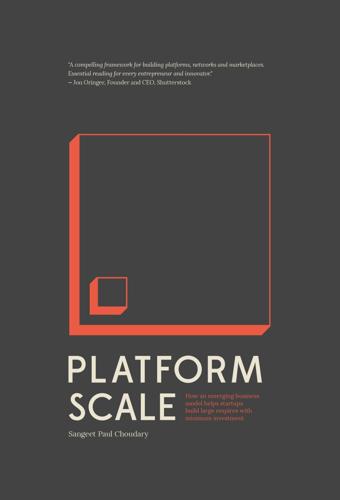
Platform Scale: How an Emerging Business Model Helps Startups Build Large Empires With Minimum Investment
by
Sangeet Paul Choudary
Published 14 Sep 2015
As a set of actions that players take, Flappy Bird is quite similar to Super Mario Bros. One or two simple actions, when repeated, deliver value, as long as they are performed well. That’s the brilliance of game design. A large goal can be broken down into a set of simple actions for users to perform repeatedly. These simple actions enable users to obtain value from the game and progress towards a larger goal. GAME DESIGN AND PLATFORM SCALE The most alluring aspect of game design is the possibility that simple actions could yield important consequences. What if platforms could break complex business and social interactions down into a set of simple actions?
…
Build Complex Experiences From Simple Actions A good part of my childhood was spent glued to the television playing Super Mario Bros. A generation that never swiped screens spent its childhood wielding joysticks and clicking on handheld controls. Try as she might, my aunt never understood the obsession. “All you do is click that one button all day. What do you get out of it?” That one statement captures the brilliance of game design. A player may have the lofty goal of saving the princess. One may get a kick out of crossing multiple levels and collect points and lives on the way. But the player merely clicks a set of buttons that help the game character jump and stomp the evil turtles and fire cannonballs. More recently, Flappy Bird had the whole world in outrage when its creator pulled the game from the App Store.

Whiplash: How to Survive Our Faster Future
by
Joi Ito
and
Jeff Howe
Published 6 Dec 2016
You won’t find it on these students’ schedules. Try “Wellness” instead. Neither do teachers organize the curriculum into “units” on, say, rocks and landforms. Instead there are “quests” and “missions” that culminate in a “boss level,” a term well known to any gamer. The goal, school administrators insist, is not to produce a generation of game designers. “We’re teaching twenty-first-century competencies,” says Arana Shapiro, Quest to Learn codirector. That might come as news to Dominic, an eleven-year-old fidgeting his way through a “crit,” an educational ritual normally endured by would-be artists and poets. His peers, the twenty-three other sixth graders enrolled in “Sports for the Mind,” are providing feedback on Dominic’s video game.
…
Private schools and wealthy districts have begun enthusiastically integrating robotics and programming into their curricula, a dichotomy that will only reinforce the achievement gap that already exists in our nation’s schools. “We could wind up having two school systems—one for the rich and one for the poor,” says James Gee, the linguist, educator, and game designer. The poor one will teach to the tests, adhere to common curricula, and “guarantee you the basics, thus suiting you for a service job.” The rich schools, on the other hand, will emphasize problem solving, innovation, and the skills required to produce new knowledge. “Those kids will make out very well in the global system.”
…
—Jeff Howe 7 Diversity over Ability In the fall of 2011 the journal Nature Structural and Molecular Biology published a paper revealing that after more than a decade of effort, researchers had succeeded in mapping the structure of an enzyme used by retroviruses similar to HIV.1 The achievement was widely viewed as a breakthrough, but there was something else astonishing about the article. Listed among the international group of scientists that had contributed to the discovery was something called the “Foldit Void Crushers Group.” It was the name for a collective of video gamers. Foldit,2 a novel experiment created by a group of scientists and game designers at the University of Washington, had asked the gamers—some still in middle school and few with a background in the sciences, much less microbiology—to determine how proteins would fold in the enzyme. Within hours, thousands of people were competing against (and collaborating with) one another.

Troublemakers: Silicon Valley's Coming of Age
by
Leslie Berlin
Published 7 Nov 2017
Warner knew how to create hits and get products to consumers; Warner’s WEA group had just shipped 1.1 million copies of the Eagles’ new Hotel California album in only three days.17 And Warner understood how to work with artists who needed to be coddled and coaxed, a particular draw for Bushnell, who considered Atari’s game designers artists. Ross also told Bushnell and Keenan that they would be happy at Warner. They could stay in California and continue to run Atari. Ross explained that he took a hands-off approach and even offered to sweeten top management’s incentive structure, which already included a rich bonus pool.18 By the time the Atari team flew back to California on another Warner jet—Ross arranged for Clint Eastwood and Eastwood’s partner, Sondra Locke, to join them—Bushnell was convinced that selling Atari to Warner was the best way to get the money to develop the Stella chip.19 None of the other companies Atari had approached about an acquisition had been interested.
…
Each cartridge sold for roughly $30, with an 89 percent gross margin for Atari, according to Gerard.24 The VCS accounted for almost a quarter-billion dollars’ worth of sales in 1981.25 A few other companies, most prominently Mattel, made cartridge systems to compete with the VCS, but 80 percent of the 4 million video game systems in American homes in 1981 were made by Atari.26 Within Silicon Valley, Atari, which had grown to nearly ten thousand employees and fifty buildings, became a prestigious employer for computer programmers and game designers.27 Saying you wrote games for Atari, one programmer noted, “didn’t get you laid, but it was seen as cool.”28 Programmers had complete control over every aspect of a game, from design and rules to graphics and sound effects. Some programmers started developing the games on paper before typing code into the hexadecimal language the VCS system could understand.
…
That bonus was on top of salaries starting at about $20,000, a figure that programmer Carla Meninsky recalls felt like an enormous sum when she first applied at Atari, so absurd that she practiced saying “twenty thousand dollars” in front of her bedroom mirror so she could request it with a straight face at her hiring interview.42 Salaries and bonuses for experienced programmers could go much higher. Despite these efforts to encourage game designers’ productivity, the number of cartridges released by Atari dropped by half the year after the Activision founders left.43 Even with the higher pay, many on the engineering side felt that Kassar and the managers he hired did not appreciate their ideas or their work. Kassar gave an interview in which he called the technical minds behind the games “superstars” but also “high-strung prima donnas.”
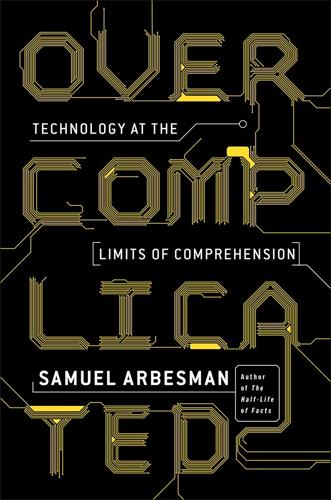
Overcomplicated: Technology at the Limits of Comprehension
by
Samuel Arbesman
Published 18 Jul 2016
As mentioned in the introduction, as our technologies become more complicated, and we lose the ability to understand them, our responses tend toward two extremes: fear and awe. Contemplating a fantastically intricate technological system, some of us are overwhelmed by its power and complexity, and respond with fear of the unknown. Others tend toward an almost religious reverence when faced with technology’s beauty and power. The video game designer and writer Ian Bogost has even suggested that replacing the term “algorithm” with the word “God” changes little of what is being said about technology in today’s discourse. But technology, while it suffuses our society, is not the product of a perfect and immaculate process. Technologies are kluges.
…
One program I built with HyperCard was a rudimentary password generator: it could make a random string you could use as a password, but it also had options to make the random passwords more pronounceable, and hence more memorable over the long term. It was simple, but definitely ahead of its time, in my unstudied opinion. The computer game designer Chaim Gingold calls gateways like HyperCard “magic crayons.” Like the crayon in the children’s book Harold and the Purple Crayon that allows the young hero to draw objects that immediately take on reality, magic crayons are tools that, in Gingold’s words, “allow non-programmers to engage the procedural qualities of the digital medium and build dynamic things.”
…
Haldane, Possible Worlds and Other Essays (London: Chatto & Windus, 1928), 286. limitations to what we can know: For a further discussion on scientific humility, see Marcelo Gleiser, The Island of Knowledge: The Limits of Science and the Search for Meaning (New York: Basic Books, 2014). video game designer and writer Ian Bogost: Ian Bogost, “The Cathedral of Computation,” The Atlantic, January 15, 2015, http://www.theatlantic.com/technology/archive/2015/01/the-cathedral-of-computation/384300/. a perfect and immaculate process: This is discussed further in Bogost, “Cathedral of Computation.” the “humble programmer”: Edsger Dijkstra, “The Humble Programmer.”

Coders: The Making of a New Tribe and the Remaking of the World
by
Clive Thompson
Published 26 Mar 2019
But if suddenly thousands or millions of people start pounding away on your server? In that situation, unoptimized code can be ruinous. That’s what Lance Ivy found out when Kickstarter got popular. In 2012, three years after it was launched, Kickstarter started to get its first “million-dollar” campaigns. Among the first was a campaign by veteran video-game designer Tim Schafer to create Broken Age, his latest title. Schafer initially wanted to raise $400,000, a huge sum for Kickstarter at the time. But Schafer’s fan base rallied around the cause, and within 24 hours they had come close to raising a full $1 million. To capture the excitement of the moment, Schafer’s company streamed footage from their office, showing the staff as they followed the increasing Kickstarter pledges.
…
But nearly every one also described the daily fight of having to prove themselves over and over again to the wide swathe of industry peers who, tacitly or openly, assumed they didn’t have serious technical chops, that they couldn’t. One coder, Stephanie Hurlburt, was a classically nerdy math-head who’d cut her teeth doing deep work on graphics. “I love C++, the low-level stuff,” she tells me. She’d worked for a series of firms, including Unity (which makes a popular game-design tool), and then for Facebook on its Oculus Rift VR headset, cranking mad hours to release their first demo. Hurlburt was accustomed to shrugging off neg hits. There were many: She’d been told, including by many authority figures she admired, that girls weren’t wired for math. While working as a coder, if she expressed ignorance of nearly any niggling concept in graphics, some male colleagues would pounce.
…
The social problems that evolved on Twitter’s service turned out to be maddeningly complex. By the early 2010s, it was clear that some Twitter users were adroitly using the service to engage in coordinated harassment campaigns. Again, the best-known example was Gamergate, a harassment campaign in which groups of mostly men hounded female game designers and game critics who’d talked and written about sexism in games, like Anita Sarkeesian. One tactic the harassers used was dogpiling: They’d pick a target and bombard her account with @-replies, sometimes using bots, in such volume that it was virtually impossible for the target to use Twitter.
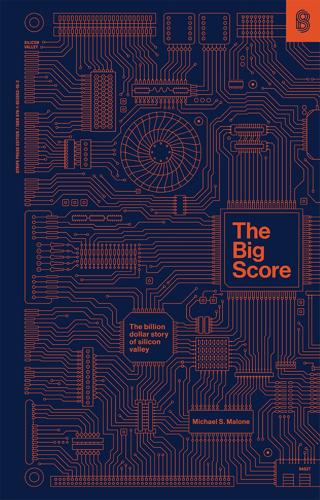
The Big Score
by
Michael S. Malone
Published 20 Jul 2021
In the hyperbole of the era, video game designers were called—with a straight face—the poets and painters of their generation, the pioneers of the next cultural wave combining art and technology. To read the literature of that time, one might have thought if Titian or Tintoretto had been alive in the late 1970s they would have abandoned their easels to design Turbo or Frogger. No one seemed to notice that behind the flashing lights these were really three-dimensional board games for children, a three-minute Monopoly without the allegory at a quarter a throw. The reality was that video game designers were really the Walt Disneys and Windsor McKays of their time, clever commercial artists who had brilliantly tailored the technology of the day to the needs of the consumer.
…
And building a game had become simple, too, ever since the semiconductor industry had come up with a programmable chip (the EPROM) that made it possible to reduce the single-game home box into an expensive cartridge to be used with a universal, single-purchase player box. With this breakthrough, production could be accelerated to as fast as a new game design could be programmed onto a chip. Even that wasn’t fast enough, because the chip makers couldn’t fabricate sufficient EPROMS, and delivery times stretched out to as much as six months. This not only led to the creation of a gray market to fill the demand of desperate domestic and Asian game makers, but it also created a window for new competitive entries, notably in the arcade business, like Bally.
…
Kids could play an Atari arcade (or “coin-op”) game like Asteroids, then go home and play a $39.95 home cartridge version of the same game. Atari had it all: Tinkers to Evers to Chance, arcade games to home cartridges to the Atari balance sheet. The most important part of a well-turned double play is to be on the ball at the beginning. Here Atari got mixed reviews. Game designers, as Kassar himself once said, had become the nearest equivalent to a rock star. “Hired guns” might be a more accurate description. During the Bushnell era, these individuals were paid huge sums, buried in praise, and their idiosyncrasies pampered and stroked, even when they were at odds with corporate life.

Designing for Emotion
by
Aarron Walter
Published 4 Oct 2011
We create anticipation when we foreshadow a desired event and give the audience ample time to ponder the experience. Parents excite their children at Christmas with “Santa is coming to our house soon!” to conjure fantasies about the magic of the holidays and the wonderful gifts to come. Anticipation is what game designers call an open system. Games designed with an open structure, like The Sims, allow users to wander and shape game play on their own terms. Open systems encourage people to use their imagination to create a personalized experience. Video games that use a closed system, like Super Mario Brothers, narrowly direct game play, forcing the user to move in a specific direction on a defined mission.

The Internet Is Not What You Think It Is: A History, a Philosophy, a Warning
by
Justin E. H. Smith
Published 22 Mar 2022
Such reduction of others to a sort of program is the flip side of what we have already identified as “presenting as a brand,” and both are expressions of the more general problem of what we may call “algorithm creep”: the tendency to see an ever broader portion of the world, and even to see ourselves, on the model of the algorithms that run our new technologies. As will be discussed later, in recent decades even certain questions in speculative metaphysics (notably the question whether our world is a “simulation”) have been substantially influenced by the spread of a manner of thinking about reality that is borrowed from the world of video-game design. This habit of thinking extends to everything from fundamental questions about the nature of the external world, to questions about the structure of human society, from electoral politics to interpersonal relations. To “game the attention economy” is to develop a strategy for “winning” attention from others within a system of formal constraints where the “points” are measured out in clicks, likes, favorites, retweets, and so on: the quantified units of attention.
…
Either way, we are in uncharted territory, far outside the realm of traditional praise and blame, as now the normative evaluation of human action cannot proceed without “running it through the machines,” without reference to the behavior of artificial systems that are themselves insusceptible to praise and blame. This transformation is shaping the way we understand not only interpersonal relationships, but also political movements. According to the video-game designer Adrian Hon, the QAnon conspiracy theory, whose supporters became a vigorous and multitudinous force backing Donald Trump in the later phase of his presidency, might best be understood as an “ARG” or “alternate reality game.”34 Such a game is not played on a console; instead its strategies and prizes are spread across the internet, built into apps, inserted into newspaper advertisements and even into real-world interpersonal relations.
…
This has led to an absurd predicament for the good-faith actors and a luscious opportunity for the bad-faith ones. As the pseudonymous Twitter user known only as “Alice from Queens” sharply observes, Twitter is the place where “socialists show contempt for hierarchy, meritocracy and neoliberal competition by competing for status in a game designed by a Silicon Valley overlord.”39 Nor is this a situation that could have been fully anticipated by the theory of the “tragedy of the commons,” at least if we understand tragedy in the proper sense of a misfortune that befalls a protagonist as a result of some particular blind spot, like Oedipus, who did not recognize his own mother.

Survival of the Richest: Escape Fantasies of the Tech Billionaires
by
Douglas Rushkoff
Published 7 Sep 2022
It’s a sensibility that—by virtue of its ubiquity in venture philanthropy—informs even less hubristic efforts at addressing hunger, inequality, and the environment, as if one needs a totalizing, end-to-end, universal solution capable of being summarized in a TED Talk in order to be considered worthy at all. It’s what we now, disparagingly, call technosolutionism. ReGen Villages, for example, is the brainchild of former game designer James Ehrlich, an entrepreneur-in-residence at Stanford and a teacher of “disaster resilience” for Singularity University. ReGen is a total solution for the creation of regenerative and resilient communities that are capable of producing their own organic food, sourcing clean water, and educating their young, all with renewable energy and in a circular economy.
…
They grow food in domes, live in solar-powered cottages nestled into the earth, eat fresh fruit in open community courtyards, and are surrounded by woods and animals. Or at least they will be, once Ehrlich is able to convince someone to give him the funding so he can break ground. I met up with him near his office at Stanford. He had left game design to study organic food preparation and ended up producing a TV show, The Hippy Gourmet , originally broadcast from Burning Man and eventually syndicated on PBS. That’s how he learned about the challenges facing America’s family farms, and dedicated himself to applying his skills to addressing them.
…
Feeling blamed for society’s ills , hopelessly unemployed, sexually frustrated, yet armed with laptops and The Mindset’s propensity for remote attacks, this disparate network has always been ready to rumble and came to prominence during Gamergate , a series of highly coordinated online harassments against female game designers and journalists. While these young men may have been inscrutable to the establishment, the leaders of the emergent alt-right saw its members as the foot soldiers in their digital infowar against politics as usual. Steve Bannon, the media executive and political strategist who eventually served as an advisor to Donald Trump, welcomed the new population of discontents.

To Save Everything, Click Here: The Folly of Technological Solutionism
by
Evgeny Morozov
Published 15 Nov 2013
Thus, the only possible conclusion that McGonigal can draw from all of this is that reality ought to be more like games: “What if we decided to use everything we know about game design to fix what’s wrong with reality? What if we started to live our real lives like gamers, lead our real businesses and communities like game designers, and think about solving real-world problems like computer and video game theorists?” Well, replace “game designers and theorists” with “B. F. Skinner,” and the answer to all these what-ifs might be very different. What to make of McGonigal’s project and her “personal mission to see a game developer win a Nobel Peace Prize in the next twenty-five years”?
…
Some critics of gamification point out that the best video games are not exhausted by their reward systems. Virtual points do not produce experiences “of interest, enlightenment, terror, fascination, hope, or any number of other sensations,” as game theorist Ian Bogost puts it; rather, those are produced by the content of the game and various narrative strategies adopted by game designers. In other words, one doesn’t have to hate games to hate gamification; that process doesn’t, strictly speaking, turn everything into a game—it turns everything into limited (and often completely unimportant) factors that we sometimes associate with games. Canadian media theorist Alan Chorney offers a very useful distinction between the two: “The use of game mechanics does not necessarily make the product a video game.
…
Likewise, the point about the potentially corrosive impact such schemes have on character holds as well: sometimes we want citizens to do the right thing for the right reason, not just because it’s more fun than playing Angry Birds. Skimming through gamification literature can be both frustrating and instructive, for it shows the rhetorical tricks deployed by game enthusiasts to promote their schemes and the inherent limitations of their mind-set. Take Gamification by Design by game designers Gabe Zichermann and Christopher Cunningham. One has to praise the book—something of a primer on gamification—for being completely transparent about its Skinnerian philosophy: the cover features five playful monkeys, who presumably are on their way to being gamified. Like most gamification literature, this book, from the very outset, blurs any distinction between games and play and posits that both are natural and inevitable.
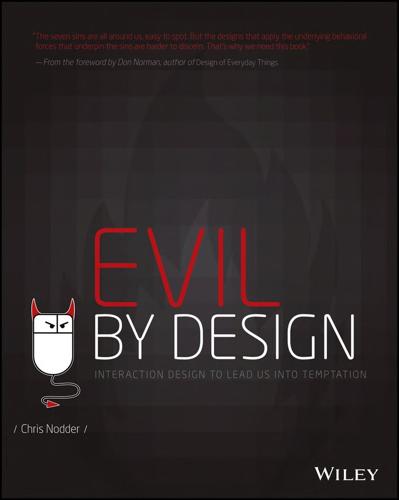
Evil by Design: Interaction Design to Lead Us Into Temptation
by
Chris Nodder
Published 4 Jun 2013
September 22, 2009. Retrieved March 2013. Israel National Lottery repeat numbers: Mark Weiss. “Israel lottery draws same numbers as three weeks before.” The Telegraph (telegraph.co.uk). October 18, 2010. Retrieved March 2013. Use a partial reinforcement schedule Game design seen through an operant conditioning lens: John Hopson. “Behavioral Game Design.”Gamasutra (gamasutra.com). April 27, 2001. Retrieved January 2013. Dog photo credit: Chris Nodder. Make it into a game Volkswagen’s Fun Theory promotion: thefuntheory.com. Fold It: Protein folding game online at Fold.it. DigitalKoot: The Finnish National Library DigitalKoot project page at digitalkoot.fi.
…
To keep people playing during this time, it makes sense to use a variable ratio schedule for some other activity in the game, such as killing enemies, so that they feel there’s always a chance of being rewarded for some minor goal they’re working toward rather than being disheartened by the far-off major goal. Another approach for game designers is to produce events that are negatively reinforcing. In other words, players work to prevent them from happening. An example might be going too long without logging in to Farmville, only to find spoiled crops and rampant animals. To prevent this, players must remember to tend to their farms frequently.

Kill All Normies: Online Culture Wars From 4Chan and Tumblr to Trump and the Alt-Right
by
Angela Nagle
Published 6 Jun 2017
Feminist gamers complained that games writer Felicia Day was publicly dismissed as a ‘booth babe’ by a male games journalist. Games designer Patricia Hernandez drew the attention of 4chan, when she called it a ‘cathedral of misogyny’. Encyclopedia Dramatica has a permanent entry for the memes 4chan created inspired by her comment, where she is described as: A fat, wetback ‘game journalist’ with sausage fingers and a chin like Jay Leno who works for Kotaku, a gaming gossip site infamous for allowing game designers to sleep with its columnists for good reviews and publicity. Patricia is a noted lesbian and feminazi who follows in Kotaku’s proud tradition of writing countless articles about how various games either promote rape or literally rape their female players.
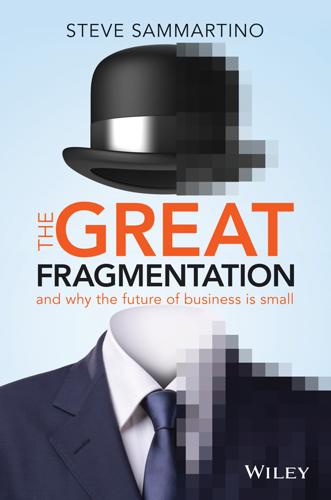
The Great Fragmentation: And Why the Future of All Business Is Small
by
Steve Sammartino
Published 25 Jun 2014
Buy mass media. Rinse and repeat. Innovate incrementally using existing infrastructure. But the linear process just doesn’t work anymore. The environment and resulting go-to-market methodology has fragmented into non-linear, unpredictable pieces. We now operate in a world where a smartphone game designed by an independent game manufacturer can end up being a major motion picture with global licensing that can compete with the likes of Disney (think Angry Birds). Or where a crowdfunding campaign can result in enough financial backing for a new wearable computing device — such as the Pebble — to be launched before Apple or Google enter the smartwatch market space.
…
We’re all still playing the games right now, but like many aspects of commerce, we go deep into the wormhole before we realise it. Gamification not only becomes possible in a connected and social world, it’s inevitable. If I could draw an analogy for gamification, it would be this: Pong is to consoles, what Angry Birds is to gamification. Gamification is all about intersecting behavioural economics and game design methodology for a commercial outcome. When we think about it deeply, it’s not too far removed from commerce in general. What is business other than anthropology with a scoreboard? Gamification is much more about anthropology than it is about technology, but the two elements of anthropology and technology are starting to conspire to create new commercial platforms that, when used well, have the ability to circumvent currency while also creating purchasing power.
…
Given we are living in a time of true revolution, we need to look outside our own realm, become exploratory and open our minds through the understanding of different fields. To help you do this, I've pulled together a reading and viewing list of work that helped me to see the world better. I've done this because the truth about business is that the patterns within it come from worlds outside it. Books The Art of Game Design: A Book of lenses Jesse Schell Billions & Billions: Thoughts on Life and Death at the Brink of the Millennium Carl Sagan Brand Hijack: Marketing Without Marketing Alex Wipperfurth The Cluetrain Manifesto Rick Levine, Christopher Locke, Doc Searls, David Weinberger The Demon-Haunted World: Science as a Candle in the Dark Carl Sagan and Ann Druyan How to Create a Mind: The Secret of Human Thought Revealed Ray Kurzweil The Intelligent Investor: The Definitive Book on Value Investing.
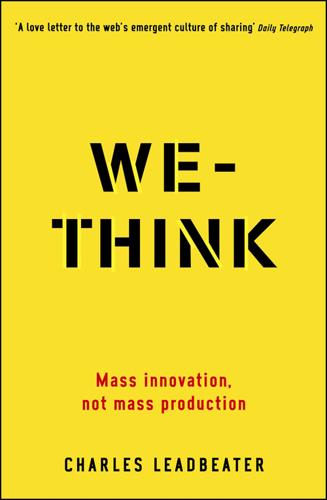
We-Think: Mass Innovation, Not Mass Production
by
Charles Leadbeater
Published 9 Dec 2010
They achieved this without knowing one another and without anyone’s being in charge. There were no bonuses on offer, nor any of the other incentives we assume are needed to get people to work. The participants were highly organised without having much by way of an organisation. The I Love Bees game, designed by Californian company 42 Entertainment, had its roots in flash mobbing, a form of public performance art which had started in New York and San Francisco in 2003. In flash mobs, anything from a handful of people to several thousand, who have organised themselves by word of mouth, over mobile phones and via the Internet, gather in a public place, such as at a railway station or on a street crossing, to undertake an apparently bizarre activity.3 Jane McGonigal, one of 42 Entertainment’s lead designers and a pioneer of flash mobbing, designed I Love Bees to see whether a mob could become a creative force.
…
In flash mobs, anything from a handful of people to several thousand, who have organised themselves by word of mouth, over mobile phones and via the Internet, gather in a public place, such as at a railway station or on a street crossing, to undertake an apparently bizarre activity.3 Jane McGonigal, one of 42 Entertainment’s lead designers and a pioneer of flash mobbing, designed I Love Bees to see whether a mob could become a creative force. In the four weeks after the advertisements were shown, the game designers fed clues to the players through hundreds of websites, blogs, thousands of emails and more than 40,000 MP3 transmissions. These clues were released to players all over the globe, so a player anywhere could find themselves with an important role. The players had to share their evidence to make sense of it.
…
The 600,000 players of I Love Bees showed that a mass of independent people, with different information, skills and outlooks, working together in the right way, can discover, analyse, co-ordinate, create and innovate together at scale without much by way of a traditional organisation. Their collaboration was not an anarchic free-for-all; it was organised, but without a division of labour imposed from on high. So if some ingenious west coast games designers can create the conditions in which thousands of people around the world collaborate to solve a trivial puzzle, could we do something similar to defeat bird flu, tackle global warming, keep communities safe, provide support for disaster victims, lend and borrow money, conduct political and policy debates, teach and learn, design and even make physical products?
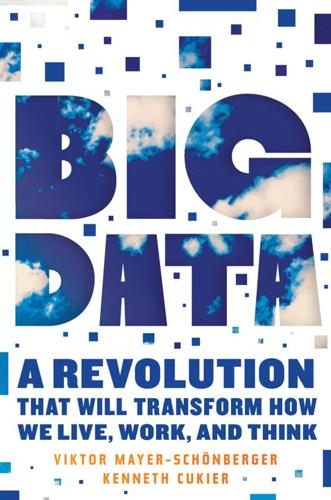
Big Data: A Revolution That Will Transform How We Live, Work, and Think
by
Viktor Mayer-Schonberger
and
Kenneth Cukier
Published 5 Mar 2013
For example, after the data showed that FishVille players bought a translucent fish at six times the rate of other creatures, Zynga offered more translucent species and profited handsomely. In the game Mafia Wars, the data revealed that players bought more weapons with gold borders and purchased pet tigers that were all white. These are not the sorts of things that a game designer toiling in a studio might have known, but the data spoke. “We are an analytics company masquerading as a gaming company. Everything is run by the numbers,” explained Ken Rudin, then Zynga’s analytics chief, before jumping ship to head analytics at Facebook. Harnessing data is no guarantee of business success but shows what is possible.
…
See also data anaysis; predictive analytics and big data, [>]–[>] and credit scores, [>] as driven by hypotheses, [>]–[>], [>], [>] and “end of theory,” [>]–[>] of information, [>]–[>], [>] in marine navigation, [>]–[>] of medical records, [>], [>]–[>], [>] non-linear, [>]–[>] proxies in, [>]–[>], [>], [>] of sales data, [>] vs. scientific method, [>]–[>] and subprime mortgage scandal (2009), [>] of text, [>]–[>] in video game design, [>]–[>] Coursera, [>], [>] Craigslist, [>] Crawford, Kate, [>] credit card fraud: big data and, [>]–[>], [>]–[>] Kunze on, [>] credit scores: correlation analysis and, [>] datafication and, [>] credit transactions: analysis of, [>] crime prevention: predictive policing and, [>]–[>] Crosby, Alfred, [>], [>] Cross, Bradford, [>]–[>] “culturomics,” [>]–[>] data.
…
National Security Agency (NSA): data-gathering by, [>]–[>] U.S. President’s Council of Advisors on Science and Technology, [>] value, economic: big data and creation of, [>], [>], [>], [>], [>]–[>], [>]–[>], [>]–[>], [>]–[>] of reusing data, [>]–[>], [>]–[>], [>]–[>], [>]–[>], [>], [>] Varian, Hal, [>] video game design: correlation analysis in, [>]–[>] Vietnam War: data misused in, [>], [>]–[>] Visa, [>] von Ahn, Luis: invents Captcha & ReCaptcha, [>]–[>] Walmart, [>] analyzes sales data, [>], [>], [>], [>] merchandising innovations by, [>]–[>] War Managers, The (Kinnard), [>] Warden, Pete, [>] Watts, Duncan, [>] Weinberger, David, [>] Wikipedia, [>] Windows Azure Marketplace, [>] World Bank, [>] and open data, [>] Xoom, [>]–[>] Yahoo, [>], [>], [>] YouTube: data processing by, [>] Zeo, [>] ZestFinance, [>]–[>] Zillow, [>] Zuckerberg, Mark, [>], [>] Zynga, [>]–[>] About the Authors VIKTOR MAYER-SCHÖNBERGER is Professor of Internet Governance and Regulation at the Oxford Internet Institute, Oxford University.

The Job: The Future of Work in the Modern Era
by
Ellen Ruppel Shell
Published 22 Oct 2018
With no managers to turn to for adjudication or support, there is enormous pressure on employees to “fit in” with the prevailing corporate culture. Those who fail to do so are sometimes marginalized or ejected in an “off the island”–style banishment. Several years ago, the company “voted out” more than two dozen top engineers, including inventor Jeri Ellsworth, a legend in game design circles. Ellsworth, who went on to cofound a new venture, described the Valve structure as “pseudoflat” with a hidden layer of authority that she compared to “popular kids in a high school clique.” Since a large portion of employee compensation at the company is based on individual performance as perceived by one’s peers, Ellsworth said most engineers gravitated toward high-profile projects that were both visible and almost certain to succeed.
…
Finland’s exemplary school system is famous for launching students to the top of international academic assessments. That’s old news. Most of us have heard of the so-called Finland Miracle. But I wondered what role, if any, this and other social investments had played in the country’s transformation into an innovation hub, a nation known for churning out extraordinary numbers of both visionary video game designers and world-class symphony conductors. And I wondered, too, whether this quirky Nordic nation could realistically serve as an incubator of ideas and practices that could be adopted in the United States. My first stop was a visit to Pekka Ylä-Anttila, then head economist at ETLA, the Research Institute of the Finnish Economy.
…
Passing the business on to employees in a cooperative arrangement is a way to serve their employees, retain their customers, and preserve their legacy. Meanwhile, the cooperative movement has widened and found common cause in some unlikely places, like union halls. At a national gathering of cooperative owners and advocates I met lawyers, video game designers, cabdrivers, a maker of photovoltaic cells, and Rob Witherell, a contract negotiator for United Steelworkers (USW), the nation’s largest industrial labor union. Burly and soft-spoken, Witherell is every inch the union man, but he sees cooperatives as the next big thing. “At the most basic level, labor unions and cooperatives have a lot in common,” he told me.
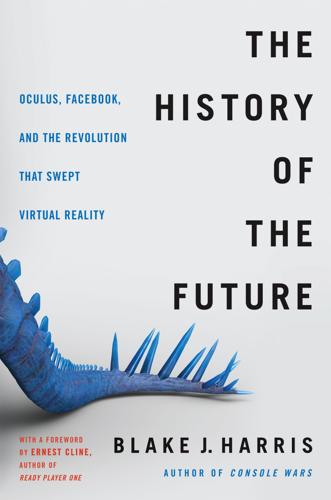
The History of the Future: Oculus, Facebook, and the Revolution That Swept Virtual Reality
by
Blake J. Harris
Published 19 Feb 2019
When I began to think about what sort of person might create this virtual utopia, I immediately thought of Richard Garriott, the eccentric video game designer who created all the Ultima games, including Ultima Online. He was known for cosplaying as his video game avatar, Lord British, at press events and conventions. He was also famous for holding elaborate haunted house events at his mansion in Austin, Texas, which was rumored to be filled with hidden rooms and secret passages. His larger-than-life personality also reminded me of the character Willy Wonka, and when I made that connection, an idea suddenly occurred to me: What if Willy Wonka had been a video game designer instead of a candymaker? And what if he held his golden ticket contest inside his greatest video game—a sprawling virtual reality that had replaced the internet?
…
This was the very first video game Easter egg, and discovering it was one of the most thrilling childhood memories. I wondered, What if my Wonka-esque game designer hid his own Easter egg somewhere inside his virtual universe, and then after his death, he held a posthumous contest to find it? The first person to find the egg would win his fortune, along with ownership of his game company and control of his virtual kingdom. That got me thinking about what sort of tests and challenges my eccentric game designer, James Halliday, would leave behind to find a worthy successor, and another idea occurred to me: all the riddles, puzzles, and clues leading to the hidden Easter egg could be linked to the dead billionaire’s various pop-culture passions—his favorite books, movies, video games, cartoons, and TV shows from his youth.
…
To some in the VR community, Oculus’ hiring of Malamed was a cause for concern. As summed up by one user on MTBS3D: “I hate to jump to conclusions because I don’t know the guy, but Activision is one of my least favorite companies, and their business strategy . . . [has] made for some really unethical business-over-game-design choices . . . Maybe a little compromise needs to be made to get to big markets with big hardware, but I’m still concerned about the ‘open-sourceness’ spirit going forward.” These sorts of gone-corporate concerns were enhanced when, in an introducing-our-new-VP interview with GIBiz, Malamed talked about competing with console-makers and suggested that the consumer version of Rift might cost more than originally thought.5 As someone who typically operated behind the scenes, Malamed wasn’t used to being in the crosshairs of internet drama.
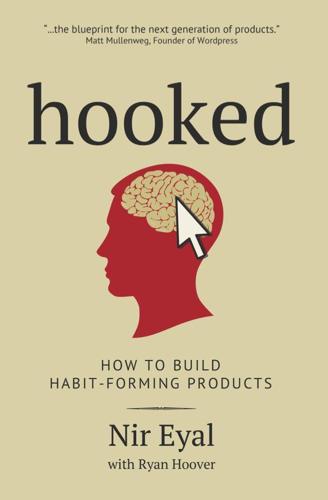
Hooked: How to Build Habit-Forming Products
by
Nir Eyal
Published 26 Dec 2013
These tendencies of ours lead to a mental process known as rationalization, in which we change our attitudes and beliefs to adapt psychologically. Rationalization helps us give reasons for our behaviors, even when those reasons might have been designed by others. At a 2010 industry conference, Jesse Schell, a renowned game designer and professor at Carnegie Mellon University, articulated the peculiar train of thought some players exhibit online.6 Schell examined Mafia Wars, one of Zynga’s first breakout hits, which, like FarmVille, attracted millions of players. “There’s definitely a lot of psychology here, because if someone had said, ‘Hey, we’re going to make a text-based mafia game that’s going to make over $100 million,’ you’d say, ‘I don’t think you’ll do that.’
…
As for my own reward, after finishing my verse, I received affirmation from a satisfying “Day Complete!” screen. A check mark appeared near the scripture I had read and another one was placed on my reading plan calendar. Skipping a day would mean breaking the chain of checked days, employing the endowed progress effect (previously discussed in chapter 3)—a tactic also used by video game designers to encourage progression. As habit forming as the Bible App’s reading plans can be, they are not for everyone. In fact, Gruenewald reports most users downloaded the app but never register for an account with YouVersion. Millions choose to not follow any plan, opting instead to use the app as a substitute for their paper Bibles.
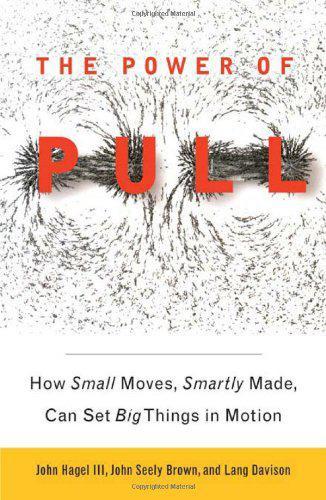
The Power of Pull: How Small Moves, Smartly Made, Can Set Big Things in Motion
by
John Hagel Iii
and
John Seely Brown
Published 12 Apr 2010
Beyond the guild, however, is a second, broader social network in which participants from all the guilds come together in a vast and diverse complex of discussion forums, wikis, databases, and instructional videos. Here they share experiences, tell stories, celebrate (and analyze) prodigious achievements within the game, and explore innovative approaches to addressing the challenges at hand. Although a few of these forums are officially sponsored by the game designer, most of them have emerged spontaneously, organized by participants seeking access to more advice and insight regarding the challenges they face in the game. This “knowledge economy” is impressively large: In the United States alone, the official forums hosted by Blizzard Entertainment contain tens of millions of postings in hundreds of forums.
…
Most gamers monitor their dashboards continually as they embark on quests to raid dungeons, kill monsters, and collect “loot.” The dashboards give players rich, real-time feedback on their performance along a range of dimensions. Though some elements of these dashboards were introduced by the game designer, an entire cottage industry has emerged among participants who specialize in modifying them to suit the needs of different players. The detailed information they capture becomes invaluable during after-action reviews, when guild members gather to reflect on their individual and collective performance and brainstorm about ways to improve.
…
Players have written scripts for each of these functions using the WoW API. World of Warcraft introduced the dashboard concept and provided some basic functionality right from the start—illustrating the importance of careful planning and design at the inception of such a project. Very quickly, however, the game designers opened this feature up to third parties, allowing the players themselves to develop additional features for other players to adopt and incorporate into their personalized dashboards. This flexibility was a successful element of the game, showing that creation platforms may operate at different levels in the creation space—learning networks, teams, and individuals may all require creation platforms tailored to their specific needs.
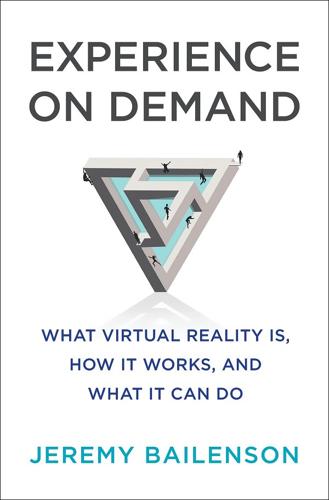
Experience on Demand: What Virtual Reality Is, How It Works, and What It Can Do
by
Jeremy Bailenson
Published 30 Jan 2018
It may take two years, it may take ten, but mass adoption of affordable and powerful VR technology, combined with vigorous investment in content, is going to unleash a torrent of applications that will touch every aspect of our lives. The powerful effects that researchers, doctors, industrial designers, pilots, and many others have known about for decades are about to become tools for artists, game designers, filmmakers, journalists, and eventually regular users, empowered by software to design and create their own custom experiences. At the moment, however, VR is unregulated and poorly understood. Consequently, the most psychologically powerful medium in history is getting an alpha test on-the-fly, not in an academic lab but in living rooms across the globe.
…
Time, of course, will tell. And it is revealing that the first-person shooter, Raw Data, one of the first hit VR games with over $1 million in sales in its first month, eschewed the gratuitous blood and guts of traditional videogames, choosing instead to pit the gamer against robot enemies. Many game designers, it turns out, quickly realized that there is a big difference in how we feel about performing violent actions on a screen versus performing them in VR. This is even truer when motion tracking technology is involved. Making an avatar commit violent acts by pressing buttons on a controller in a traditional videogame is an entirely different experience from when the same action involves pointing a gun with your hand at a three-dimensional representation of a person and pulling the trigger, or using your hands to strike or stab a virtual opponent in a violent game.
…
The “SpiderWorld” they had used—which depicted a kitchen filled with potentially unpleasant associations like an oven, a stovetop, and a toaster—was not exactly welcoming to burn patients. Hoffman wondered if he could create a more pleasant experience. He also wanted to turn the experience into a game—imagine how much more involving the treatment would be if it combined game design with the immersive properties of VR. The result of Hoffman’s tinkering was SnowWorld, a simple, sedate VR game set in a world of cool whites and blues. In it, the player/patient gently moves along an arctic canyon floor amidst falling snowflakes, snowmen, penguins, and woolly mammoths. Using a mouse, the patient can aim snowballs at the virtual objects, and defend herself from snowballs lobbed at her.
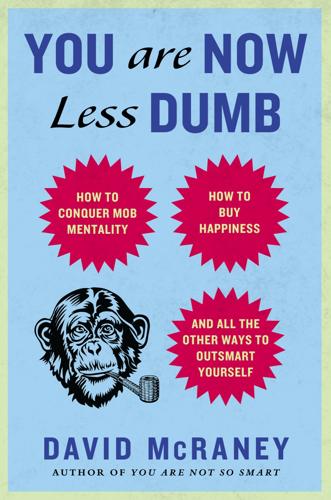
You Are Now Less Dumb: How to Conquer Mob Mentality, How to Buy Happiness, and All the Other Ways to Outsmart Yourself
by
David McRaney
Published 29 Jul 2013
FarmVille is free, and the first time you log on you are transported to a patch of grass where you float above an abeyant young farmhand eager to get to work. His will is your will, and his world is empty save the land ready to be plowed and a crop of vegetables ready to be picked. Wading into the experience, you feel the game designers have made every attempt to turn your head toward the screen in the least obtrusive but most insidious way possible. It is all your choice, they seem to be saying; no one is forcing you to proceed. Here, harvest these beans. Hey, why not plant some seed? Oh, look, you could plow a patch of land, you know, if you want.
…
Indvik, Lauren. “‘FarmVille’ Interruption Cited in Baby’s Murder.” Mashable, Oct. 28, 2010. Web: Mar. 2011, mashable .com/2010/10/28/farmville-murder-mother-baby/. Kahneman, Daniel. Thinking, Fast and Slow. New York: Farrar, Straus and Giroux, 2011. Kushner, David. “Games: Why Zynga’s Success Makes Game Designers Gloomy.” Wired, Sept. 27, 2010. Web: Mar. 2011, www.wired.com/magazine/2010/09/pl_games_zynga/. Lehrer, Jonah. “Loss Aversion.” ScienceBlogs, Feb. 10, 2010. Web: Mar. 2011, scienceblogs.com/cortex/2010/02/10/loss-aversion/. McGonigal, Jane. “Gaming Can Make a Better World.” TED Talks, Feb. 2010.
…
Web: Mar. 2011, socialtimes.com/fired-playing-farmville_b4754. Walker, Tim. “Welcome to FarmVille: Population 80 Million.” Independent, Feb. 22, 2010. Web: Mar. 2011, www.independent.co.uk/life-style/gadgets-and-tech/features/welcome-to-farmville-population-80-million-1906260.html. “Why Zynga’s Success Makes Game Designers Gloomy: Discussion at Hacker News.”Hacker News. Y Combinator, Oct. 7, 2010. Web: Mar. 2011, news.ycombinator.net/item?id=1767549. Wittmershaus, Eric. “Facebook Game’s Cautionary Tale.” GameWit, Aug. 4, 2010. Web: Mar. 2011, gamewit.blogs .pressdemocrat.com/12167/facebook-games-cautionary-tale/.
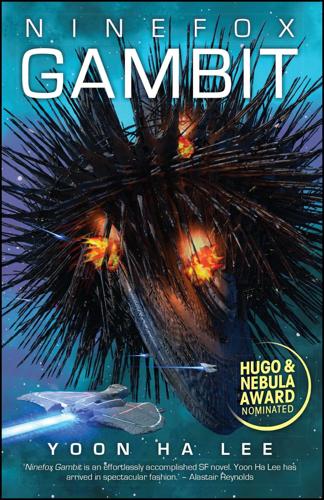
Ninefox Gambit
by
Yoon Ha Lee
Published 13 Jun 2016
Rig some votes if you have to. All right, I can see you glowering at me, so I will say this. One thing the man is doing right, amazingly, is insisting that his soldiers treat the propaganda canisters as real threats. So far it’s all gridpaper games, and they don’t interface with anything, but still. Solid game design, but I expect that from a Shuos. No, the issue is that they’re miniature history lessons. I think Jedao has miscalculated, though. Take that one video segment with the Liozh prisoners’ ribs cracked open so their lungs could be extracted while they were still alive. This sort of thing is only stiffening resistance on our end.
…
The next two splinters took her through the eyes like bullets. CHERIS WAS SITTING at a table outside, shuffling and reshuffling her favorite jeng-zai deck. Normally she didn’t lack for opponents – this was Shuos Academy, after all, and there was always someone who didn’t believe a first-year could be as good as she claimed to be – but the yearly game design competition was going on, and everyone was distracted. Someone came up from behind and kissed the top of her head. “Hey, you,” said a familiar tenor: Vestenya Ruo, the first friend she’d made here, and her occasional lover. “Dare I hope that I’ve finally gotten the drop on you?” He came around and took a seat on the bench next to her.
…
An interesting story. Almost plausible, even. But Vahenz knew how good he was at being plausible. The lights flickered left, flickered right. She didn’t even notice them anymore. “One more angle,” Jedao said, and Vahenz thought he was going to dredge up some bit of history regarding Shuos cadets, or game design, or vengeful commanders, but instead what she got was: “What do you know about geese?” Vahenz blinked. “Unlike certain undead generals,” she said, “I don’t have a whole lot to do with fowl other than eating them.” She knew he had grown up on a farm of some sort, although what this had to do with – “Then you don’t know about goslings.”
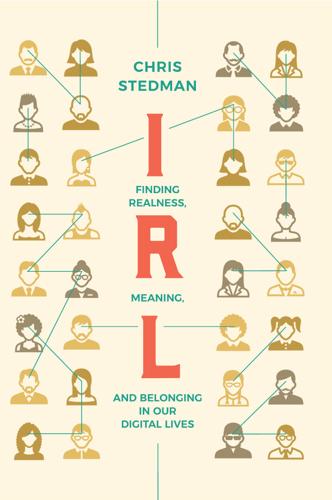
IRL: Finding Realness, Meaning, and Belonging in Our Digital Lives
by
Chris Stedman
Published 19 Oct 2020
But to explore both spheres, it’s important to be clear about what constitutes a game. In A Theory of Fun for Game Design, game designer Raph Koster explains that most people who study games agree that a game is a voluntary, rule-based “free activity” outside of “ ‘ordinary’ life.” Within this context, “different outcomes are assigned different values, the player exerts effort in order to influence the outcome, the player feels attached to the outcome, and the consequences of the activity are optional and negotiable,” says game designer and video-game theorist Jesper Juul. Sid Meier, creator of the Civilization games, describes a game as “a series of meaningful choices,” and authors Ernest Adams and Andrew Rollings add to the definition, describing a game as “one or more causally linked series of challenges in a simulated environment.”

Drive: The Surprising Truth About What Motivates Us
by
Daniel H. Pink
Published 1 Jan 2008
Scientists motivated by this intrinsic desire filed significantly more patents than those whose main motivation was money, even controlling for the amount of effort each group expended. (That is, the extrinsically motivated group worked as long and as hard as their more Type I colleagues. They just accomplished less perhaps because they spent less of their work time in flow.) And then there's Jenova Chen, a young game designer who, in 2006, wrote his MFA thesis on Csikszentmihalyi's theory. Chen believed that video games held the promise to deliver quintessential flow experiences, but that too many games required an almost obsessive level of commitment. Why not, he thought, design a game to bring the flow sensation to more casual gamers?
…
The paid version, designed for the PlayStation game console, has generated more than 350,000 downloads and collected a shelf full of awards. Chen used the game to launch his own firm, thatgamecompany, built around both flow and flOw, that quickly won a three-game development deal from Sony, something almost unheard of for an unknown start-up run by a couple of twenty-six-year-old California game designers. Green Cargo, thatgamecompany, and the companies employing the patent-cranking scientists typically use two tactics that their less savvy competitors do not. First, they provide employees with what I call Goldilocks tasks challenges that are not too hot and not too cold, neither overly difficult nor overly simple.
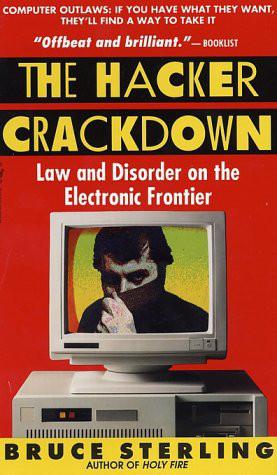
The Hacker Crackdown
by
Bruce Sterling
Published 15 Mar 1992
Some of Illuminati's users, however, were members of the Legion of Doom. And so was one of Steve Jackson's senior employees—the Mentor. The Mentor wrote for Phrack, and also ran an underground board, Phoenix Project—but the Mentor was not a computer professional. The Mentor was the managing editor of Steve Jackson Games and a professional game designer by trade. These LoD members did not use Illuminati to help their HACKING activities. They used it to help their GAME-PLAYING activities—and they were even more dedicated to simulation gaming than they were to hacking. "Illuminati" got its name from a card-game that Steve Jackson himself, the company's founder and sole owner, had invented.
…
The next cyberpunk game had been the even more successful Shadowrun by FASA Corporation. The mechanics of this game were fine, but the scenario was rendered moronic by sappy fantasy elements like elves, trolls, wizards, and dragons—all highly ideologically-incorrect, according to the hard-edged, high-tech standards of cyberpunk science fiction. Other game designers were champing at the bit. Prominent among them was the Mentor, a gentleman who, like most of his friends in the Legion of Doom, was quite the cyberpunk devotee. Mentor reasoned that the time had come for a REAL cyberpunk gaming-book—one that the princes of computer-mischief in the Legion of Doom could play without laughing themselves sick.
…
Naturally, he knew far more about computer-intrusion and digital skullduggery than any previously published cyberpunk author. Not only that, but he was good at his work. A vivid imagination, combined with an instinctive feeling for the working of systems and, especially, the loopholes within them, are excellent qualities for a professional game designer. By March 1st, GURPS Cyberpunk was almost complete, ready to print and ship. Steve Jackson expected vigorous sales for this item, which, he hoped, would keep the company financially afloat for several months. GURPS Cyberpunk, like the other GURPS "modules," was not a "game" like a Monopoly set, but a BOOK: a bound paperback book the size of a glossy magazine, with a slick color cover, and pages full of text, illustrations, tables and footnotes.
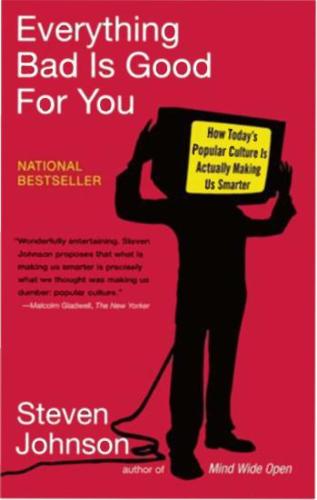
Everything Bad Is Good for You: How Popular Culture Is Making Us Smarter
by
Steven Johnson
Published 5 Apr 2006
The game scholar James Paul Gee has observed precisely this phenomenon called the " regime of competence" principle-at work i n t h e architectu re of successful video games. " Each level dances around the outer l i mits of the player's abilities," he writes, "seeking at every point to be hard enough to be j ust doable . . . which results i n a feeling of si multaneous plea sure and frustration-a sensation as familiar to garners as sore thumbs . " Game designers don't build learning ma chines out of charity, of course; they do it because there's an economic reward in creating games that stay close to that border. Make a game too hard, and no one will buy it. Make it too easy, and no one will buy it. Make a game where the 1 78 STEVEN JOHNSON chal lenges evolve alongside yo ur skills, and you ' l l have a shot at success.
…
Many fasci nating experi ments i n using games as educational 201 202 N O T E S ON F U R T H E R R E A D I N G tools have come out of the Education A rcade conso rtium (educationarcade.org) , whose cofounder Henry Jenkins has been the model of the pop culture public intellectual, mak ing a number of crucial defenses of games in the media and in the courtroom. Some of the ideas presented here about the logic of gaming a re explored fro m a game designer's point of view in Rules of Play, a textbook coauthored by the designer Eric Zimmerman . The field of video game theory is sometimes cal led " ludology " ; for further reading about this n a scent critical movement, I recommend the Web sites ludology.org and seriousgames.org. Readers interested in the way gaming culture is transforming busi ness will want to check out two relatively new books: Got Game, by John Beck and Mitchell Wade, and Pat Kane's delightful mani festo The Play Ethic.
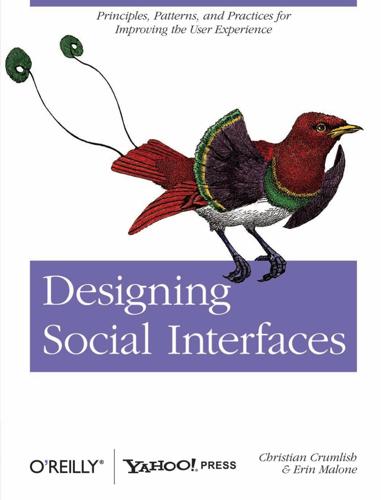
Designing Social Interfaces
by
Christian Crumlish
and
Erin Malone
Published 30 Sep 2009
In Chapter 17, we look at many models of openness and the benefits and consequences of embracing them in your social architecture. In Chapter 18, we look to the frontiers of “social in the enterprise,” mobile application development, generational change (at both ends of the age spectrum), and what we can learn from game design. Sidebar Essays Just as we have approached the collection of patterns as both authors and as curators of information from many sources, we have curated a collection of different voices from around the Internet to share alternative opinions, more in-depth exploration, and thoughts about social user behavior that provide seasoning around the patterns in each chapter.
…
In Chapter 17, we’ll discuss several approaches to openness that we believe are essential to the effective design and development of social environments online, but for now just keep in mind the question “how could this interface be improved if we made it more open?” while designing your experiences. Learn from Games We’ll talk a little bit later about the fascinating intersection between game design and social design that’s opening up new possibilities for social experiences in game environments and introducing playful elements to social interfaces. An application doesn’t have to literally be a game or be presented as a game to employ many of the same design techniques that make games fun to play.
…
Areas that traditionally have been ghettoized in traditional web software design are mobile and enterprise. Often forgotten or addressed as an afterthought, these areas provide rich and interesting challenges to creating social experiences. If you want to see the future of interactive interfaces, look to gaming. Game designers have the liberty to experiment and Darwinian competitive pressures. The ideas they come up with and prove out in the market are setting expectations for a large number of people who may eventually become, or may already be, your users. With more and more consoles appearing in homes, families playing together, and games becoming a standard offering on mobile devices, designers need to consider how social intersects with gaming and how that changes the nature of play.

The Future Is Faster Than You Think: How Converging Technologies Are Transforming Business, Industries, and Our Lives
by
Peter H. Diamandis
and
Steven Kotler
Published 28 Jan 2020
Because of the AI layer, these objects don’t live in one fixed spot. In fact, they’re less like objects and more like another form of life, moving, by their own volition, around the digital world. Say you’re at Microsoft and want to hire a new game designer for a fantasy game. So you design a smart flaming sword that’s built to scrape social media and find individuals who have a passion for fantasy, cryptography, game design, and whatever other skills you need. You find John Smith, a perfect candidate, who happens to be on vacation in the Bahamas. He’s walking down the beach, wearing his smart glasses—which are providing a history of the beach as he strolls along.
…
Yet the handle glimmers—sixteen numbers wink into existence, then wink out again. But John, because he’s into cryptography, realizes the numbers are actually a puzzle. John solves the puzzle, says the answer aloud, and can now pull the sword from the beach. As he does, the sword turns into a small pink dragon that tells him he’s been selected as a potential game designer for Microsoft and asks if he’s interested in applying for the job. And we can go on like this for a while. Smart objects don’t just bridge the gap between worlds, they gamify the world. If blockchain is a science-fiction technology that’s become science fact, then smart objects seem to invert this process, turning regular reality back into science fiction.

Future Crimes: Everything Is Connected, Everyone Is Vulnerable and What We Can Do About It
by
Marc Goodman
Published 24 Feb 2015
In today’s exponentially advancing world, in the battle between good and evil, victory will belong to whichever group proves itself most capable of mobilizing the larger crowd. It’s time to start gaming this system in our favor to ensure our technological tools inure to the greatest overall benefit of humanity. Gaming the System Every game designer should make one explicitly world-changing game. Lawyers do pro bono work, why can’t we? JANE MCGONIGAL According to the American game designer and researcher Jane McGonigal, today there are more than half a billion people worldwide playing computer and video games at least an hour a day, with more than 183 million in the United States alone. That works out to three billion hours a week as a planet playing video games.
…
ALBERT EINSTEIN Increasingly, as we live our lives through avatars—in video games, online worlds, and social networking sites—our online personas are standing in for us in social situations, commercial transactions, and even sexual encounters. They are there representing us online 24/7, compressing time and space, to interact on our behalf with the rest of the world even as we sleep. The renowned game designer Jane McGonigal has noted that “the average young person racks-up 10,000 hours of gaming by the age of 21,” the vast majority of which is in the persona of an avatar or game character. As they do, we witness the rise of Homo virtualis, perhaps the next evolution of Homo sapiens, a species that is pulled away from the constraints of our natural physical world in favor of the immediacy and perceived unlimited potential of the virtual.
…
Parviz, “Augmented Reality in a Contact Lens,” IEEE Spectrum, Sept. 1, 2009. 81 It is expected: Juniper Research, “Press Release: Over 2.5 Billion Mobile Augmented Reality Apps to Be Installed Per Annum by 2017,” Aug. 29, 2012. 82 Ikea even incorporated AR: Luisa Rollenhagen, “Augmented Reality Catalog Places IKEA Furniture in Your Home,” Mashable, Aug. 6, 2013. 285 A future malicious app: Franziska Roesner, Tadayoshi Kohno, and David Molnar, “Security and Privacy for Augmented Reality Systems,” Communications of the ACM 57, no. 4 (2014): 88–96, doi:10.1145/2580723.2580730. 83 The renowned game designer: Jane McGonigal, TED Conversation, http://www.ted.com/conversations/44/we_spend_3_billion_hours_a_wee.html; Jane McGonigal, Reality Is Broken: Why Games Make Us Better and How They Can Change the World (New York: Penguin Books, 2011). 84 “Strategically we want to start building”: Sarah Frier, “Facebook Makes $2 Billion Virtual-Reality Bet with Oculus,” Bloomberg, March 26, 2014. 85 Many genuinely view: “Worlds Without End,” Economist, Dec. 14, 2005. 86 But there is a downside: “A Korean Couple Let a Baby Die While They Played a Video Game,” Newsweek, July 27, 2014; “Korean Couple Let Baby Starve to Death While Caring for Virtual Child,” Telegraph, March 5, 2010. 87 Virtual worlds have their own currencies: “The Economy of Online Gaming Fraud Revealed: 3.4 Million Malware Attacks Every Day,” Kaspersky Lab, Sept. 28, 2010. 88 As strange as it may sound: Carolyn Davis, “Virtual Justice: Online Game World Meets Real-World Cops and Courts,” Philly.com, Dec. 8, 2010. 89 Even “sexual assaults”: Benjamin Duranske, “ ‘Virtual Rape’ Claim Brings Belgian Police to Second Life,” Virtually Blind, April 24, 2007. 287 These incidents might be: Anna Jane Grossman, “Single, White with Dildo,” Salon, Aug. 30, 2005. 90 A 2008 report: Sara Malm, “U.S.
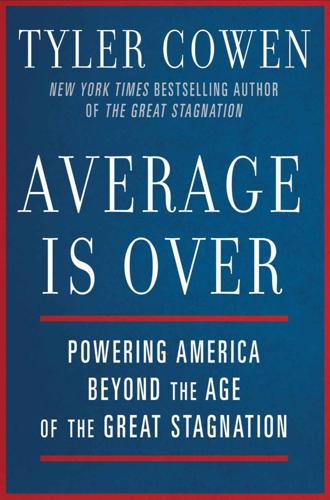
Average Is Over: Powering America Beyond the Age of the Great Stagnation
by
Tyler Cowen
Published 11 Sep 2013
Of course these games don’t interest everyone, but wouldn’t it be funny if we already had figured out the education problem and simply didn’t know it? If there is anyone today who understands the dynamic potential of games it is Jane McGonigal (game designer and author of Reality Is Broken: Why Games Make Us Better and How They Can Change the World). Her dream, entirely reasonable in my view, is to see a games designer nominated for a Nobel Peace Prize. For all the successes of games, however, they also point out some limitations of education by computer, at least how we currently practice it. Education into the world of games works remarkably well, but it works mainly for people who wish to learn the games.

Going Dark: The Secret Social Lives of Extremists
by
Julia Ebner
Published 20 Feb 2020
All members’ successes in conquering the online world will be reflected in their real lives one day, Nikolai Alexander promised them. But first, they need to change the existing power structures. Like many extremist movements, Reconquista Germanica has found a way of gamifying its propaganda, recruitment and mission. Psychological studies show that specific gaming designs such as badges, leaderboards and performance graphs can be powerful tools to maximise customer participation and brand loyalty.15 Over the past decade most corporate brands and media outlets have adopted interactive gaming elements to boost human motivation and performance. Political movements, including extremist and terrorist organisations, have done the same: they increasingly use competitive scoring and reward systems as well as gaming language and imagery.
…
Available at https://www.isdglobal.org/wp-content/uploads/2017/10/The-Fringe-Insurgency-221017.pdf. 14Sheila Johnston, ‘The Wave: the experiment that turned a school into a police state’, Telegraph, 5 September 2018. Available at https://www.telegraph.co.uk/culture/film/3559727/The-Wave-the-experiment-that-turned-a-school-into-a-police-state.html. 15Michael Sailer et al., ‘How gamification motivates: An experimental study of the effects of specific game design elements on psychological need satisfaction’, Computers in Human Behavior, 69, April 2017, pp. 371–80. Available at https://www.sciencedirect.com/science/article/pii/S074756321630855X. 16Jarret Brachman and Alix Levine, ‘The World of Holy Warcraft: How Al Qaida is using online game theory to recruit the masses’, Foreign Policy, 13 April 2011.

Scary Smart: The Future of Artificial Intelligence and How You Can Save Our World
by
Mo Gawdat
Published 29 Sep 2021
Even our scientists search for wormholes – portals through the very fabric of the universe. They believe these will transport us to galaxies light years away. We just need to find them and, when we do, all of our dreams will become a reality. We gamers, we love cheats. A hidden glitch in the fabric of the game design, one that exposes a hidden weapon crate or a doorway to another level. A passage that leads us to where we want to be without having to go through the tough parts of the game. We love portals. In 2007, a game was launched that was called, simply, Portal. It ticked every box for the geekiest of gamers.
…
The game world of Portal is a lab referred to in the game as the Aperture Science Enrichment Center. You, the player, are the lab rat. With every new level of the game you enter a new section of the premises. You use your portal gun and your intelligence to find your way through it without getting hurt. To help you do this, the game designers scripted it so that you appear to receive help from an AI. Her name is GLaDOS. GLaDOS is portrayed to be an incredibly advanced AI responsible for running all the experiments in Aperture Laboratories. Very quickly, you start to love GLaDOS as she guides you through the maze. She’s often funny and supportive.
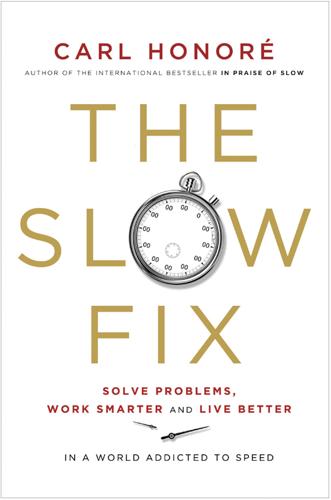
The Slow Fix: Solve Problems, Work Smarter, and Live Better in a World Addicted to Speed
by
Carl Honore
Published 29 Jan 2013
Many games now have a strong social component: think of The Sims or all those invitations you receive to water your friends’ gardens in Farmville. The average age in the gaming community is now 30, and more than a quarter are over 50. Nearly half of gamers are female. With four decades of fine-tuning behind them, game designers know all the psychological and neurological buttons to push to keep us fully engaged. In Chore Wars rewards for completing adventures are immediate, and you can always monitor how powerful and skilful your avatar becomes. That might sound trivial, but constant, measurable and incremental progress is precisely what the brain craves.
…
Remember pedestrians in Bogotá passing instant judgement on motorists by brandishing thumbs-up or thumbs-down cards and how the RAF telephones crew members who report a mistake or a near miss within 24 hours and then keeps them apprised of progress in the case. A leading proponent of the push to harness gaming is Jane McGonigal, a thirty-something game designer based in San Francisco. Her book, Reality Is Broken: Why Games Make Us Better and How They Can Change the World, is a call to arms, a manifesto for how online games can help solve problems in the real world. Organizations ranging from the World Bank to the US Department of Defense to McDonald’s beat a path to her door.
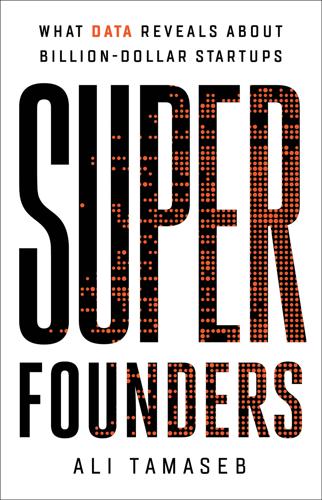
Super Founders: What Data Reveals About Billion-Dollar Startups
by
Ali Tamaseb
Published 14 Sep 2021
A number of founders graduated from schools you may never have heard of—like Jason Citron, the co-founder and CEO of Discord, a billion-dollar gaming-communication platform, who got his degree at Full Sail University. The little-known school in Water Park, Florida, specializes in media and arts, with courses like audio engineering. Citron, who was already an avid programmer by the time he reached college, enrolled in Full Sail’s game-design program. He took jobs at gaming studios after college and started making iPhone apps, winning awards for his mobile game design. On average, the founders of billion-dollar startups did come from high-ranking schools more often than other founders. The median world ranking of universities that graduated the billion-dollar group was twenty-seven, compared to seventy-four for the group of random startup founders—almost three times as high, suggesting that those who went to high-ranking schools were more likely to create billion-dollar startups.
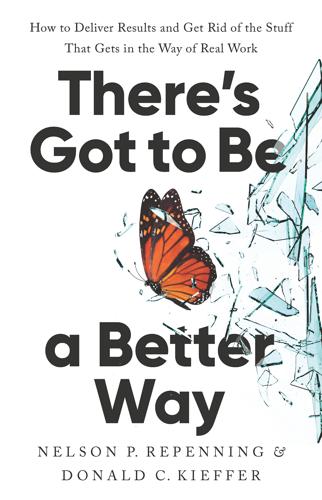
There's Got to Be a Better Way
by
Nelson P. Repenning
and
Donald C. Kieffer
Published 26 Aug 2025
Technicians were now stuck between a proverbial rock and a hard place: follow the rule to the letter, risk tripping, and do the task with obscured vision or violate the rule. Mandating one-size-fits-all changes often forces people doing the work to make additional, often surreptitious workarounds. Not surprisingly, putting those who do the work in an impossible bind does little to increase their motivation for participating in change. Video game designers understand learning and motivation far better than the senior executives who launch change initiatives. Modern video games are deliberately designed to keep your interest. At each level, kids (of all ages) learn just the right set of new skills to prepare them for the next, harder level. When they master those skills, they get the satisfaction of completing the level.
…
This isn’t done for benevolent reasons, it’s the core of an extremely lucrative business model (video games generate almost $200 billion in revenue annually). Kids are drawn to video games because they contain the key ingredients of psychologically satisfying and engaging work: players get to solve problems, develop new skills, and tackle ever-greater challenges. Video game designers intentionally structure each level so that you have to work hard to get to the next one, but not so hard that you give up. The experience can be so intense that some psychologists suggest that this technology is as addictive as gambling, with the same type of dopamine release.1 The positive feeling we get from acquiring new skills is what keeps golf courses, tennis courts, and music schools in business.
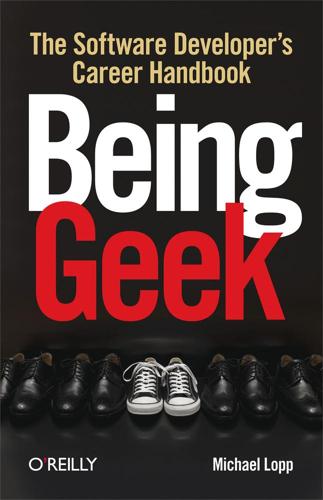
Being Geek: The Software Developer's Career Handbook
by
Michael Lopp
Published 20 Jul 2010
The thrill, the adrenaline, comes from the discovery, hunt, and eventual mastery of the unknown, which, confusingly, means if you want to keep a geek engaged in a game, you can't let them win, even though that's exactly what they think they want. Think of it like this: does it bug you that there's an absolute high score to Pac-Man? It bugs me. To get around this entertainment-killing paradox in subscription-based games like World of Warcraft, game designers freely change rule sets as part of regular updates. The spin is, "We're improving playability," which translates into, "The geeks are close to figuring it out, and we can't have that, because they'll stop paying." This paradox does not apply to all games. It's hard to argue that there is much more to learn about Tetris, but folks continue to play it incessantly, which leads to the warning.
…
This is the act of mentally removing ourselves from a troubled planet full of messy people, combined with our ability to find pleasure in the act of completing a small, well-defined task. This is our ability to lose ourselves in repetition, and it is task at which we are highly effective. In the defense of game designers, there are no quests that read, "Go waste 16 hours of your life doing nothing." They are more elegant with their descriptions; they splice all sorts of different tasks together to distract you from the dull inanity of large, laborious tasks. But they know that part of what makes us tick is the micro-pleasure we get from obsessively scratching the task itch in pursuit of the achievement.
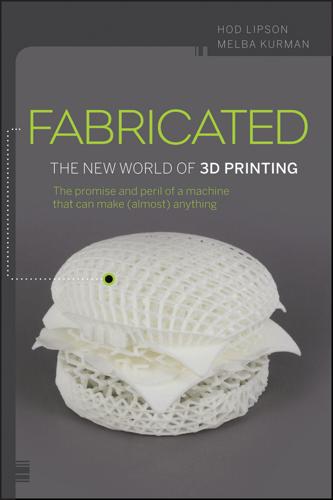
Fabricated: The New World of 3D Printing
by
Hod Lipson
and
Melba Kurman
Published 20 Nov 2012
Solid modeling software isn’t capable of meeting the demands of this new and largely untapped design space. As 3D printing technologies continue to improve, traditional solid modeling will become out of date, a powerful but somewhat crude design tool. The surface modeling software used by animators and video game designers shares a similar limitation, namely the absence of design data to describe an object’s insides. If you were to design and attempt to 3D print a colorful and elaborately shaped teapot covered with amusing illustrations, the printed teapot might look great on the outside, but would not be functional.
…
Other researchers are developing computer algorithms that can skillfully stitch together scanned cross sections of a faulty organ into a single 3D computer model. A major challenge continues to be how to best manage the enormous reams of data generated by the medical imaging process. In the larger computing industry, commercial video game designers are making strides capturing surface details and better understanding how to graphically depict the way our bodies move. The medical establishment is making progress in capturing more precise digital details about the insides of our bodies. Academic scientists are building ever-more powerful algorithms to model, predict, and analyze data collected from biological systems.

The Second Machine Age: Work, Progress, and Prosperity in a Time of Brilliant Technologies
by
Erik Brynjolfsson
and
Andrew McAfee
Published 20 Jan 2014
It accomplished this with digital sensors including a microphone array (which pinpointed the source of sound better than a single microphone could), a standard video camera, and a depth perception system that both projected and detected infrared light. Several onboard processors and a great deal of proprietary software converted the output of these sensors into information that game designers could use.17 At launch, all of this capability was packed into a four-inch-tall device less than a foot wide that retailed for $149.99. The Kinect sold more than eight million units in the sixty days after its release (more than either the iPhone or iPad) and currently holds the Guinness World Record for the fastest-selling consumer electronics device of all time.18 The initial family of Kinect-specific games let players play darts, exercise, brawl in the streets, and cast spells à la Harry Potter.19 These, however, did not come close to exhausting the system’s possibilities.
…
In August of 2011 at the SIGGRAPH (short for the Association of Computing Machinery’s Special Interest Group on Graphics and Interactive Techniques) conference in Vancouver, British Columbia, a team of Microsoft employees and academics used Kinect to “SLAM” the door shut on a long-standing challenge in robotics. SIGGRAPH is the largest and most prestigious gathering devoted to research and practice on digital graphics, attended by researchers, game designers, journalists, entrepreneurs, and most others interested in the field. This made it an appropriate place for Microsoft to unveil what the Creators Project website called “The Self-Hack That Could Change Everything.”*20 This was the KinectFusion, a project that used the Kinect to tackle the SLAM problem.

JPod
by
Douglas Coupland
Published 30 Apr 2007
Bree was born on April 22, 1980, in Nanaimo, BC, where she was known as Dark Queen of Bondage. Okay, not really, but she knew what she liked at an early age. In 2002 she was discovered by her parents to have not enough concern for her future, so she was shipped to one of 400 videogame design schools in Vancouver, where it turned out she not only had a flair for game design, but was also but a mere gentle puff of a rotating nipple tassel away from four local strip clubs. Bree is awaiting your interest. She has just changed her outfit and is now wearing a fabulous "Bow" bustier by Bali, style #8211, c. 1940s, with a black satin torso. The cups are stunning and have black sheer-illusion lace with the famous "circle stitch" for that sizzling sweater-girl bullet-bra look.
…
We were bustling about jPod, installing the final few bolts in preparation for its campus christening party. The last-minute pressure made Kaitlin needy. "What if nobody comes?" "Kaitlin, relax. The party will be mobbed." "What if people come but don't like the machine?" "Kaitlin, this is a game design company." "Or what if they want to come, but they don't think they can handle the social pressure of being seen using a hug machine?" Kaitlin has become convinced that everybody in the tech industry is autistic to some degree. It's her new cause. "Relax." As an added bonus, after being held by Agriculture Canada for inspection for umpteen months, Cowboy's shipment of dried cola nut powder arrived from the US.

What Algorithms Want: Imagination in the Age of Computing
by
Ed Finn
Published 10 Mar 2017
A cathedral is a space for collective belief, a structure that embodies a framework of understandings about the world, some visible and some not. This is a useful metaphor for understanding the relationship we have with algorithms today. Writing in The Atlantic in early 2015, digital culture critic and game designer Ian Bogost called out our increasingly mythological relationship with software in an article titled “The Cathedral of Computation.” Bogost argues that we have fallen into a “computational theocracy” that replaces God with the algorithm: Our supposedly algorithmic culture is not a material phenomenon so much as a devotional one, a supplication made to the computers people have allowed to replace gods in their minds, even as they simultaneously claim that science has made us impervious to religion.8 We have, he argues, adopted a faith-based relationship with the algorithmic culture machines that navigate us through city streets, recommend movies to us, and provide us with answers to search queries.
…
Players either didn’t realize that this was a satire, or played in spite of that knowledge, like the stay-at-home father who told Tanz, “instead of stupid games that have no point, we might as well play a stupid game that has a point.”13 At its apogee, over 50,000 people were clicking on digital cows and Bogost found himself enmeshed in his own Skinner box of feedback, getting rewarded by the player community when he added new features to the game. Bogost has described this process as a kind of “method design” like method acting, putting himself into the creative space of a social game designer and ultimately suffering the same kind of systemic, dehumanizing entanglement with the software that he sees it inflicting on players: “It’s hard for me to express the compulsion and self-loathing that have accompanied the apparently trivial creation of this little theory-cum-parody game.”14 Figure 4.1 Cow Clicker screenshot.
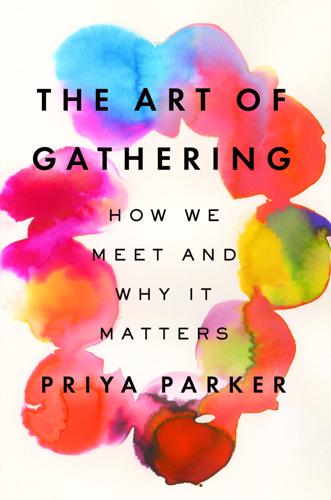
The Art of Gathering: How We Meet and Why It Matters
by
Priya Parker
Published 14 May 2018
Yet because gathering is inherently a collective endeavor, I’ve also interviewed more than one hundred other gatherers to learn their secrets and test my own ideas. My conversations with conference organizers, event planners, circus choreographers, Quaker meeting clerks, camp counselors, funeral directors, DJs, auctioneers, competitive wingsuit flying-formation instructors, rabbis, coaches, choir conductors, performance artists, comedians, game designers, Japanese tea ceremony masters, TV directors, professional photographers, family wealth advisers, and fundraisers have all informed the ideas here. I intentionally draw from a wide variety of gatherings—museums, classrooms, partner meetings, birthday parties, summer camps, and even funerals—to illustrate the creativity that people use regardless of the context, and I hope it inspires you to do the same.
…
One underground party planner explained it to me like this: “If you are on a picnic blanket, you will hang out around your picnic blanket. It’s not because there’s a fence around it; it’s because your picnic blanket is your mental construct. It’s not about sitting on a blanket versus sitting on the grass; it’s about claiming that mental space and making it yours and comfortable and safe.” A game designer named Eric Zimmerman once told me about an experiment he and his colleagues designed for an exhibition in Los Angeles. The board game they created was surrounded by four curved walls that approximated a circle, so that when you stepped inside to play, it felt as if you were in a cave. Passersby were intrigued and players ended up becoming so addicted to the game that well after day had given way to night, they kept playing.

The Alignment Problem: Machine Learning and Human Values
by
Brian Christian
Published 5 Oct 2020
They always behaved as they ought.”63 If they weren’t learning something, it was the fault of the experimenter not shaping their task properly. So maybe it’s not a lack of willpower on our part, but rather that—as the bestselling 2011 book by Jane McGonigal put it—Reality Is Broken. McGonigal, a game designer by trade, has spent her career designing games to help people—including herself—overcome challenges in their lives. For her, the incredibly addictive and compelling quality of most games, computer games in particular, is how clear they always make it what you need to do, and how achievable whatever that is always seems.
…
Jane McGonigal, “Gaming Can Make a Better World,” https://www.ted.com/talks/jane_mcgonigal_gaming_can_make_a_better_world/. 65. See McGonigal, SuperBetter. 66. Jane McGonigal, “The Game That Can Give You 10 Extra Years of Life,” https://www.ted.com/talks/jane_mcgonigal_the_game_that_can_give_you_10_extra_years_of_life/. 67. See, e.g., Deterding et al., “From Game Design Elements to Gamefulness.” 68. See, e.g., Hamari, Koivisto, and Sarsa, “Does Gamification Work?” 69. Falk Lieder, personal interview, April 18, 2018. 70. See Lieder, “Gamify Your Goals,” for a general overview and Lieder et al., “Cognitive Prostheses for Goal Achievement,” for more details. 71.
…
Complex Systems 1, no. 5 (1987): 877–922. Desmarais, Sarah L., and Jay P. Singh. “Risk Assessment Instruments Validated and Implemented in Correctional Settings in the United States,” Council of State Governments Jusice Center, 2013. Deterding, Sebastian, Dan Dixon, Rilla Khaled, and Lennart Nacke. “From Game Design Elements to Gamefulness: Defining Gamification.” In Proceedings of the 15th International Academic Mindtrek Conference: Envisioning Future Media Environments, 9–15. ACM, 2011. Devlin, Jacob, Ming-Wei Chang, Kenton Lee, and Kristina Toutanova. “BERT: Pre-Training of Deep Bidirectional Transformers for Language Understanding.”
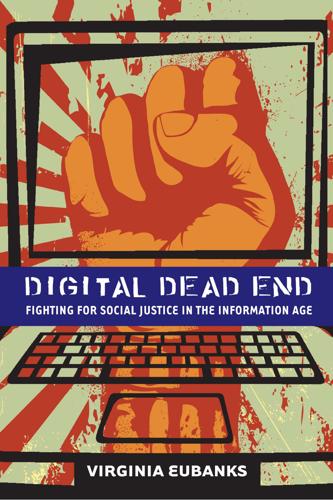
Digital Dead End: Fighting for Social Justice in the Information Age
by
Virginia Eubanks
Published 1 Feb 2011
These projects took place at different times and under vastly different circumstances, but I believe they show a progression from Box 6.2 WYMSM Member Profile, Jennifer Rose “Don’t be scared to stand up for what you believe, even though it may have costs.” I’ve always really loved computers, since high school. I didn’t own one until I was in my early twenties, because I couldn’t afford one, but I’ve always been interested. I thought they were the way to go in the world. When the dot-com bubble burst, a lot of that stuff was going away. But then game design was getting big. So I thought to myself, “Maybe I can make something more than these stupid shoot-‘em-up games. Something that might actually make people think.” That’s why I got involved in WYMSM. I had come to the YWCA to escape a domestic violence situation, and when the project was mentioned as being a possible computer game, that sparked the geek side of me.
…
Because the tapes proved extremely difficult to transcribe—each tape included several speakers, and the conversation was usually intense and lively, with voices overlapping—I transcribed only eight of them, chosen at random to represent each of four periods of five or six months. In addition to these transcripts, I gathered and coded approximately 700 pages of agendas, minutes, notes, flipcharts, game design plans, handouts, promotional materials, and other WYMSM working documents. Appendix A 173 Interviews To supplement data gathered through collective and participatory practices, I undertook twenty-nine semistructured interviews with YWCA residents, staff, and other community members. These interviews provided the opportunity for women in the YWCA community to speak as individuals, with the protection of anonymity (if they chose it), and created a conversational space for in-depth probing of thoughts, ideas, and feelings.
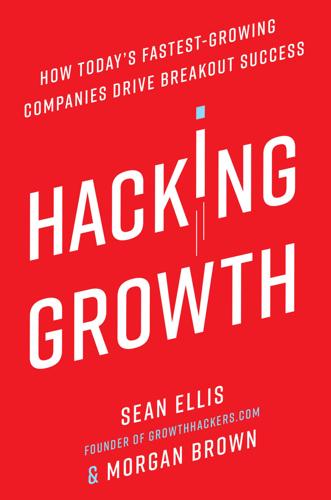
Hacking Growth: How Today's Fastest-Growing Companies Drive Breakout Success
by
Sean Ellis
and
Morgan Brown
Published 24 Apr 2017
In a number of studies he references, it was discovered that once people take an action, no matter how small, as long as the experience wasn’t onerous, they are more inclined to take any action in the future. The explanation for this, he says, is that they have made a form of psychological commitment by taking the action, and people have a bias for honoring commitments with subsequent, follow-on actions, often regardless of the change in size of request. Game designers shrewdly realized that rather than providing instructions about how to play a game, they had to get people committed; they had to get them to start playing through small, easy steps to get them oriented and rolling. Game developers draw on many other powerful insights from psychology as well.
…
People who are “in flow” are so engaged that they lose track of time; three hours of working on a painting or on writing an essay or coding an app can feel like much less, and people will look up from their work shocked by the time that’s passed. Anyone who’s ever been told by someone playing a videogame “Just give me ten more minutes!”—then another ten minutes then another ten minutes—knows how easily game players tend to get into flow. Game designers combined this wisdom to craft new user experiences that lead people gently into playing their games, starting with simple challenges that can be mastered quickly, and providing them with rewards for each hurdle cleared, while orienting them to the rules of the game and the environment in the process.

A New History of the Future in 100 Objects: A Fiction
by
Adrian Hon
Published 5 Oct 2020
Over time, RFL engines were improved to allow for unusual mashups of authors and genres, with Rowling being paired with Shakespeare, and Douglas Adams paired with Ayn Rand. Some combinations worked rather better than others. Engines were also extended to more popular media such as movies (Wes Anderson being used as a test case, due to his formulaic nature) and eventually game designs (Tencent, ditto). Amid the tsunami of new literature and entertainment, many critics feared that RFL would spell the end of creativity. They needn’t have worried—there’s only so much Harry Potter one can stomach. And our hunger for genuinely new voices in storytelling was the one thing that RFL couldn’t sate. 78 THE OBSERVAVI DATABASE Earth, 2049 The structure of DNA.
…
But just as some pundits are decrying the end of the US economy as we know it, there’s an unspoken question lurking in many minds—so what if most people are unemployed? Does the very concept of employment itself have any useful meaning in our hyper-casualized, fully automated world anymore? “It was a big shock, being fired,” says Ryholt. “Back in the ’90s, everyone would always ask us what we wanted to be when we grew up. An astronaut, a fireman, a games designer, that sort of thing. Just work hard, and you can do anything! If you dream it, it can come true. So, you go to school, go to college, get a degree, get a job, do everything you’re told to.” He leans forward, shaking his head in disbelief. “And when that stops when you’re only forty-six, when I got fired from my news site, I thought it’d be the end of the world.

Paintwork
by
Tim Maughan
Published 28 Jul 2011
He'd altered the shield-regeneration and gun-cooling times as well; making the combat a tense balancing match between popping from cover, waiting for your shielding to come back, watching that your weapons didn't overheat and judging when to run in for some brutal hand-to-hand combat finishes. It was a perfect piece of game-design, and proof that Marcus' skills rivalled the best that the off-island pros had to offer. Not that either of them realised anyone outside the small socialist republic would ever witness them. Or so they thought. Marcus was so enamoured with his work that he started to film matches, using his spex's built-in camera as well as an AR-aware handy-cam he'd managed to procure.

Utopia Is Creepy: And Other Provocations
by
Nicholas Carr
Published 5 Sep 2016
He devotes one of his longest chapters to a report on the proceedings of an industry convention in Las Vegas in 2009, where “matters of narrative, writing, and story were discussed as though by a robot with a PhD in art semiotics from Brown.” Though they often have the feel of homework assignments written by a clever, slightly bored student, the journalistic sections of Bissell’s book are illuminating and at times fascinating. They allow him to explore the challenges that game designers face as they struggle to expand the boundaries of their craft. Video games have become much more sophisticated in recent years—the spectacles they present are often tinged with moral ambiguity—but they continue to be plagued by what Bissell, in describing the Resident Evil series, calls “phenomenal stupidity.”
…
Because games by definition have to be played, they can never be experienced with the combination of immersion and detachment, the repose, that characterizes the reader of a novel, the viewer of a painting, or the listener to a song or symphony. Whatever their artistic talents and pretensions, game designers may in the end be fated to be toolmakers, creators of marvelous contraptions of intense but only passing interest. As Bissell’s account makes clear, even the very best modern games—those with exquisite animation, smart writing, intriguing characters, and fresh story lines—have not been able to transcend their gameyness.

The Inevitable: Understanding the 12 Technological Forces That Will Shape Our Future
by
Kevin Kelly
Published 6 Jun 2016
One hundred years ago not a single citizen of China would have told you that they would rather buy a tiny glassy slab that allowed them to talk to faraway friends before they would buy indoor plumbing. But every day peasant farmers in China without plumbing purchase smartphones. Crafty AIs embedded in first-person shooter games have given millions of teenage boys the urge, the need, to become professional game designers—a dream that no boy in Victorian times ever had. In a very real way our inventions assign us our jobs. Each successful bit of automation generates new occupations—occupations we would not have fantasized about without the prompting of the automation. To reiterate, the bulk of new tasks created by automation are tasks only other automation can handle.
…
When the balance between an ordained narrative and freewill interaction is tweaked just right, it creates the perception of great “game play”—a sweet feeling of being part of something large that is moving forward (the game’s narrative) while you still get to steer (the game’s play). The games’ designers tweak the balance, but the invisible force that nudges players in certain directions is an artificial intelligence. Most of the action in open-ended games like Red Dead Redemption, especially the interactions of supporting characters, is already animated by AI. When you halt at a random homestead and chat with the cowhand, his responses are plausible because in his heart beats an AI.
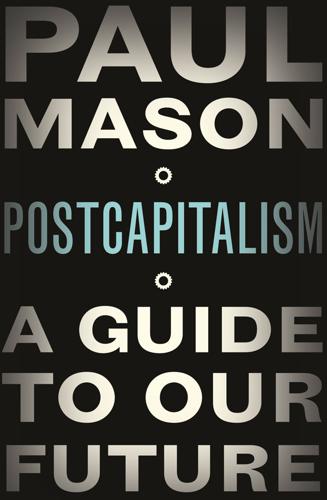
Postcapitalism: A Guide to Our Future
by
Paul Mason
Published 29 Jul 2015
This will place the workers of China and Brazil on the same overall trajectory as the rich-world workforce, which is to become service-dominated, split into a skilled core and a precariat, with both layers seeing work partially de-linked from wages. In addition, as the Oxford Martin School suggests, it is the low-skilled service jobs that stand the highest risk of total automation over the next two decades. The global working class is not destined to remain for ever divided into factory drones in China and games designers in the USA. However, the struggle in the workplace is no longer the only, or most important, drama. In many industrial and commercial cities around the world, the networked individual is no longer a sociological curiosity, s/he is the archetype. All the qualities the sociologists of the 1990s observed in the tech workforce – mercuriality, spontaneous networking, multiple selves, weak ties, detachment, apparent subservience concealing violent resentment – have become the defining qualities of being a young, economically active human being.
…
A crucial goal for the transition process would be to trigger a third managerial revolution: to enthuse managers, trade unions and industrial system designers about the possibilities inherent in a move to networked, modular, non-linear team work. ‘Work cannot become play,’ Marx wrote.11 But the atmosphere in the modern video game design workshop shows that play and work can alternate quite freely and produce results. Among guitars, sofas, pool tables covered in piles of discarded pizza boxes, there is of course still exploitation. But modular, target-driven work, with employees enjoying a high degree of autonomy, can be less alienating, more social, more enjoyable – and deliver better results.

Freedom
by
Daniel Suarez
Published 17 Dec 2009
How do I justify the freedom of humanity to the Daemon?" She frowned. "That's not visible to me." He rubbed his eyes in frustration. "Why do I have to wander all over hell's half acre to complete this damned quest?" "It's the hero's journey." He narrowed his eyes at her. "Don't forget: Sobol was an online game designer. In the archetype, a hero must wander lost in the wilderness to find the knowledge necessary for his or her quest. Perhaps that's what's happening to you." "And I'm supposed to be the hero." "It's your life. You should be the hero of it. If it's any consolation, I'm the hero of mine, too." "Riley, why did the Thread lead me to you?"
…
As he looked ahead of him, he could see projected onto reality a view into the Monte Cassino game map through a spiked and studded virtual portcullis. There, standing behind the bars, was an old opponent--Herr Oberstleutnant, Heinrich Boerner, the infamous virtual SS officer in a long trench coat, with an Iron Cross hanging at his throat from the stiff collar of his tunic. He was just a game bot. An electronic figment of the game designer Matthew Sobol's imagination, but even so, the villainous Boerner was deviously clever. While playing Sobol's game, Loki had been virtually killed by this bot more times than he'd care to remember. And now here Boerner stood. As always, Boerner wore a monocle over his right eye and he clenched a long black cigarette filter between his teeth, exhaling volumetric smoke as he nodded in greetings--his voice coming over Loki's earpiece.

Custodians of the Internet: Platforms, Content Moderation, and the Hidden Decisions That Shape Social Media
by
Tarleton Gillespie
Published 25 Jun 2018
Apple was roundly criticized for censoring news publications and fashion magazines: apps for the Sun in the United Kingdom and Stern in Germany were both briefly removed until nude images published in their print versions had been excised.33 The comics community cried “censorship” when Apple rejected app versions of the graphic novels Murderdrome, Zesty, and Sex Criminals.34 Other decisions were seen as prudish, as when Apple asked developers of a comics version of James Joyce’s Ulysses to remove a single panel that included exposed breasts, or when a comic version of Oscar Wilde’s The Importance of Being Earnest was fitted with a black bars across images of men kissing, or when the Ninjawords dictionary app was approved only after developers removed entries for common profanities, or the Eucalyptus e-book reader was removed for including the Kama Sutra.35 More recently, Apple has rejected several “serious games” apps, games designed to draw critical attention to some political issue: Smuggle Truck dealt with the hazards of illegally crossing the Mexico-U.S. border; Joyful Executions criticized the North Korean dictatorship; Ferguson Firsthand offered a virtual reality walkthrough of the protests in the Missouri city; Sweatshop HD highlighted exploitative labor conditions in a factory.36 Apple also rejected Endgame: Syria, a battle game designed to highlight the ongoing Syrian civil war.37 Designed by the founder of Game the News, Endgame: Syria was rejected for violating a different part of Apple’s review guidelines, a fascinating restriction that, as far as I can tell, has no corollary in traditional media or in other digital environments thus far.
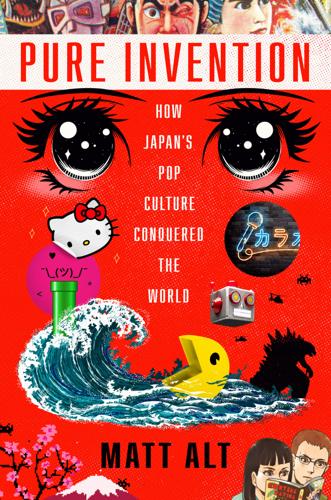
Pure Invention: How Japan's Pop Culture Conquered the World
by
Matt Alt
Published 14 Apr 2020
After delivering the critical storyboards months late, he found many of his original ideas second-guessed by staff who had been forced to make creative decisions without him. Tezuka’s pride may have been wounded, but the result was a hit. Released in 1960, Journey to the West opened to raves among Japanese kids. One of its fans was a seven-year-old named Shigeru Miyamoto who, as a video game designer decades later, would use an ox that appears in the film as the inspiration for Bowser, the final boss of Super Mario Bros. An Americanized edition of the movie fared far less well. Heavily rewritten and sanitized of virtually all its Asian references, Alakazam the Great flopped so terrifically among Western audiences that it earned an entry in a 1978 bestseller called The Fifty Worst Films of All Time (And How They Got That Way).
…
While in Japan games remained limited to arcades and coffee shops, abroad they began to proliferate in supermarkets, convenience stores, even unexpected locations like dentists’ offices and funeral parlors; it seemed few spots save for places of worship could resist the siren song of Space Invaders and Pac-Man machines. Simple yet instantly recognizable, the Invaders proved the first superstar characters of the video game era. Just a decade after Pong’s debut in that smoky California tavern, game designers from Japan were giving the Americans a serious run for their money and mindshare. * * * — “WE JUST GOT back from Paris and everyone’s wearing them,” enthused Andy Warhol in 1981. The response was in answer to a question about his strange headgear: a pair of tiny Sony headphones connected to a TPS-L2 Walkman on his hip.
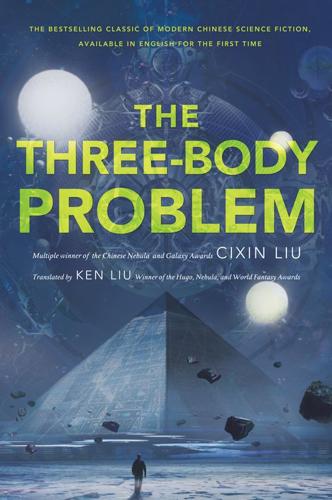
The Three-Body Problem (Remembrance of Earth's Past)
by
Cixin Liu
Published 11 Nov 2014
The answer was that the photograph’s information content—its entropy—exceeded the painting’s by one or two orders of magnitude. Three Body was the same. Its enormous information content was hidden deep. Wang could feel it, but he could not articulate it. He suddenly understood that the makers of Three Body took the exact opposite of the approach taken by designers of other games. Normally, game designers tried to display as much information as possible to increase the sense of realism. But Three Body’s designers worked to compress the information content to disguise a more complex reality, just like that seemingly empty photograph of the sky. Wang let his mind wander back to the world of Three Body.
…
The layers surrounding it, by contrast, appeared insubstantial, wispy, gaseous. The fact that he could see through the outside layers to the core indicated that those layers were transparent or translucent, and the light from those layers was likely just scattered light from the core. The details in the image of the sun stunned Wang. He was once again assured that the game designers had hidden a vast amount of data within the superficially simple images, just waiting to be revealed by players. As Wang pondered the meaning of the sun’s structure, he became excited. Because time in the game was now passing quickly, the sun was already in the west. Wang stood, adjusted the telescope to aim at the sun again, and tracked it until it dipped below the horizon.
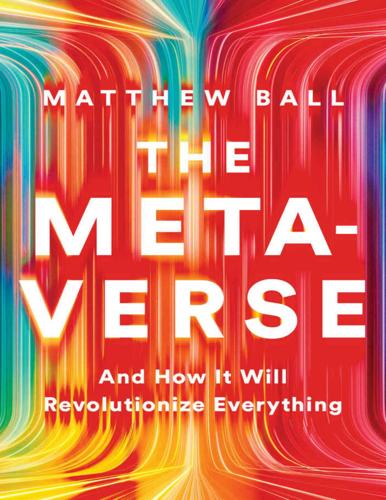
The Metaverse: And How It Will Revolutionize Everything
by
Matthew Ball
Published 18 Jul 2022
Ultimately, the number of transactions that were occurring inside this hub made the CCP Games’ servers start to buckle, leading the publisher to alter the EVE Online universe so that the destination would be less convenient to visit. The lessons from “the Yulai Problem” doubtlessly helped CCP Games design, expand, and overhaul its maps in the years that followed. However, it doesn’t help the publisher avoid another outcome: the sudden outbreak of battles so strategically important that thousands of users suddenly converge to save their faction or defeat another. In January 2021, the largest battle in EVE’s history occurred.
…
A teacher in 2022 cannot, by most measures, teach more students than they could decades ago without adversely affecting the quality of their education. In addition, we have not found ways to teach for less time, either (that is, to teach faster). However, teaching salaries must compete with the salaries offered to someone who might otherwise become an accountant (or software engineer, or game designer), and must rise with the rising cost of living as a result of a growing economy. And beyond teacher time, education remains incredibly resource-intensive in terms of physical resources, from the size of the school, the quality of its facilities, and the quality of supplies. In fact, costs associated with these resources have partly increased due to new, more expensive technologies (for example, high-definition cameras and projectors, iPads, and so on).
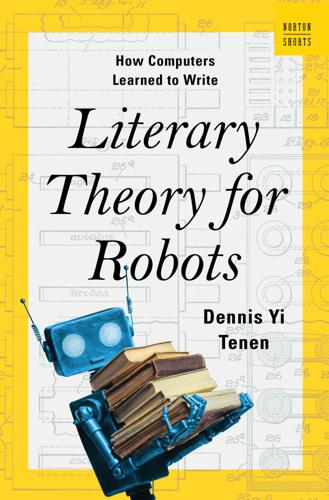
Literary Theory for Robots: How Computers Learned to Write
by
Dennis Yi Tenen
Published 6 Feb 2024
A smart machine could traverse the causal chain both ways, finding patterns among millions of messages generated by airplanes daily. And perhaps one day, such a system could fly a plane on its own. Down but not out, the number of research papers related to schema-generators continued to climb through the 1990s, in part due to their success under controlled conditions—in fields like education, game design, customer service, and medicine, where scripts circulated long before the computer. Educators were beginning to modernize their assignments, syllabi, evaluation methods, and lesson plans for digital use. Schemas powered the creation of immersive computer-game worlds, in cult classics like Baldur’s Gate and Dwarf Fortress.

Dawn of the New Everything: Encounters With Reality and Virtual Reality
by
Jaron Lanier
Published 21 Nov 2017
Today, one of the biggest problems for virtual reality is that the immediately obvious customer base willing to spend money is gamers, and gaming culture has been going through misogynist convulsions. This phenomenon is known as Gamergate. Complaints about how women are portrayed in games are drowned out by blithering barrages of hate speech. When a feminist game design is promoted, the response is bomb threats and personal harassment. Women who dare to participate in gaming culture take real risks, unless they can adopt a persona that puts men first. Gamergate has left a trail of ruined lives. And yet, needless to say, the perpetrators feel they are the victims.
…
ethical filtering eugenics Evergreen College everything dreams of previous, drugs as evolution Exorcist, The (film) experiences, as allegories experimental music experimental programming language eye contact Eyematic EyePhone EyePhone HRX eyes face blindness (prosopagnosia) Facebook facial expression facial recognition facial tracking Fairness Doctrine Fakespace Fantastic magazine FBI “Feelies” Feiner, Steve feminist game designs Fermi Paradox Feynman, Richard field of view figure eight sensorimotor loop financial incentives Finite and Infinite Games (Carse) Fisher, Scott fitness bands flight simulators floating holograms flute flying saucers force feedback Ford Motors forgeries form factor Forster, E.M.
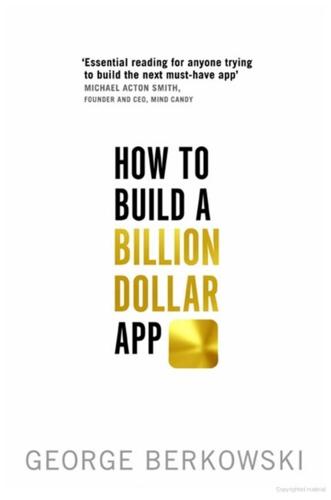
How to Build a Billion Dollar App: Discover the Secrets of the Most Successful Entrepreneurs of Our Time
by
George Berkowski
Published 3 Sep 2014
At the centre of it is this idea of small – if you think around the console industry, or even if you look at newer platforms like Facebook, what happens is that somebody comes in, and they have this small and very passionate team, and they make a great game, and consumers pick it up.’6 Paananen explains, ‘We don’t have dedicated game designers as such – it’s the team that is going to build the game, and they are all responsible for the end-user experience.’ Supercell’s outrageous success is evidence that this approach can drive huge success. ‘People really step up and take more responsibilities,’ adds Paananen. ‘It’s a lot more motivating to do that, and a lot more passion gets thrown into the product.’
…
The CEO needs to ensure these are in place, to ensure there is a real purpose for the company, which is a mechanism to both inspire and organise employees. Leading gaming company Rovio has a mobile-centric mission statement: ‘We provide unique and novel stories with innovative game-play to satisfy the growing demand of games designed for mobile.’6 Vision and mission statements evolve over the lifetime of a company, so don’t worry if you don’t settle on one immediately. They should come organically; they need to feel right. Google didn’t flesh out its mission statement until the company was about three years old. But when that mission was crystallised it really injected a meaning and purpose into the company, and allowed it to expand into so many new and fantastic areas, all which really do seem to make sense.
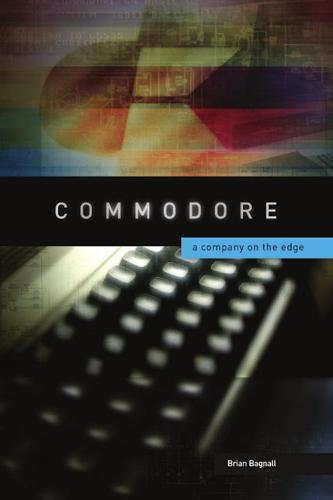
Commodore: A Company on the Edge
by
Brian Bagnall
Published 13 Sep 2005
At the time, most of the electronics resided in the game cartridge. “They looked like game cartridges that you plugged into the game [module], but in fact the game module itself was just a power supply and an R/F modulator. The game cartridges weren’t software; they were whole custom chips to play that particular game.” Charpentier found the game design inefficient. “Al basically thought that was a pretty crazy way to do that,” recalls Yannes. “Why not have a microprocessor and a video chip in the box, and the cartridge could just be software, which is where Atari ended up.” After the MOS Technology acquisition, Charpentier worked for Tramiel.
…
Engineer Bob Yannes witnessed the dawn of the personal computer while working in a computer store. “The big breakthrough, which came with the PET and the TRS-80 (and to some extent the Apple II, although I won’t give them as much credit as they want), was the fully assembled computer.” Chris Crawford, an early game designer and PET owner, summarizes the 1977 Trinity. “A lot of people don’t realize that the Apple got off to a slow start. In the early days, the horse race was between the PET and the TRS-80,” he says. “The Apple was nowhere to be seen. It was too expensive to sell.” By the end of 1977, Apple had sales of $775,000 for the fiscal year, which included sales of the Apple I.
…
Finkel wanted to create the most accurate duplication of the arcade game as possible. “We tried a couple of times to get the source code but they said it was written in a proprietary programming language and that it wouldn’t help us anyway,” he recalls. Eventually the programmers got in contact with the Bally-Midway game designers. “It turns out the proprietary programming language was pretty much Forth. It was a Forth variant with assembler extensions.” Without access to the source code, it was difficult for the programmers to determine exactly how the game was supposed to play. “We did those games based on playing them for hours and hours and hours.

Don't Make Me Think, Revisited: A Common Sense Approach to Web Usability
by
Steve Krug
Published 1 Jan 2000
My son, Harry, now finishing his degree at RPI, whose company I treasure more than he knows. I exhaust his patience regularly by asking him to explain to me just one more time the difference between a meme and a trope. If anyone has a job opening for a Cognitive Science major with a minor in Game Design, I’ll be happy to pass it on. And finally, Melanie, who has only one known failing: an inherited lack of superstition that leads her to say things like “Well, I haven’t had a cold all Winter.” Apart from that, I am, as I say so often, among the most fortunate of husbands. If you’d like your life to be good, marry well.
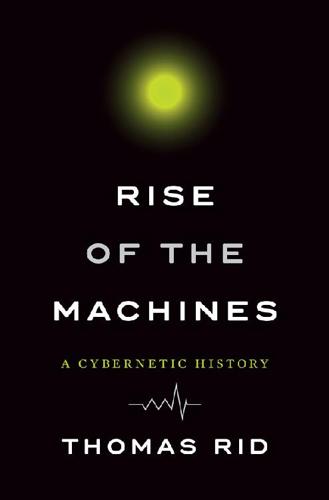
Rise of the Machines: A Cybernetic History
by
Thomas Rid
Published 27 Jun 2016
“They depended on the viewer’s imagination to fill the gaps, which is exactly what happens when you read a book.”94 The Habitat engineers had the same approach: the game depended on the player’s imagination to fill the gaps. Habitat was meant to represent the real world—at least to a degree. The game designers liberally added childhood memories of games of make-believe, “a dash of silliness, a touch of cyberpunk,” and of course, their remarkable technical skills in what was then called “object-oriented programming.” The objects were the furniture of the Habitat world: houses, trees, gardens, mailboxes, books, doors, compasses, but also more controversial objects like clubs, knives, and guns.
…
For each new player joining Habitat, an avatar was created, or “hatched,” and a starting amount of 2,000T was placed in the player’s personal account. Each day the player logged in to the game, the money grew by 100T. The game was inspired by science fiction, “notably Vernor Vinge’s novel, True Names,” the game designers explained.95 ATMs, which in Habitat stood for “automatic token machines,” gave avatars access to their money. One token was a twenty-three-sided plastic coin, slightly larger than a US quarter. Remarkably, the game coins had a portrait of Vinge on their face, adorned with the motto “Fiat Lucre” and the line “Good for one fare” on the back.
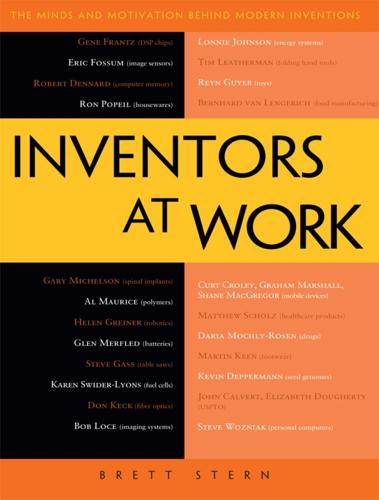
Inventors at Work: The Minds and Motivation Behind Modern Inventions
by
Brett Stern
Published 14 Oct 2012
Stern: During the process of doing all this work, were there other inventions or inventors in the toy biz that you admired? Guyer: Well, I admired the success that a group out of Chicago—oh I forget his name. He was a very unusual man, but I admired his team’s products. You know, there are so many really creative toy-and-game designers. I really haven’t spent a lot of time getting to know a lot of the other toy-and-game designers. Mainly because I don’t consider myself only a toy-and-game inventor. I do other things. Stern: What other fields are you working in now? Guyer: We have an education company by the name of Winsor Learning that is one of the leading companies for remediating children who are behind in their reading skills.

Alex's Adventures in Numberland
by
Alex Bellos
Published 3 Apr 2011
This introduced the classic melon and cherry symbols and is why slots are known in the UK as fruit machines. The Liberty Bell had a payback average of 75 percent, but these days slots are more generous than they used to be. ‘The rule of thumb is, if it’s a dollar denomination [machine], most people would put [the payback percentage] at 95 percent,’ said Anthony Baerlocher, the director of game design at International Game Technology (IGT), a slot-machine company that accounts for 60 percent of the world’s million or so active machines, referring to slots where the bets are made in dollars. ‘If it’s a nickel it’s more like 90 percent, 92 percent for a quarter, and if they do pennies it might go down to 88 percent.’
…
Game A is what is called a low-volatility game, while Game B is high-volatility – you hit a winning combination less often, but the chances of a big win are greater. The higher the volatility, the more short-term risk there is for the slot operator. Some gamblers prefer low-volatility slots, while others prefer high. The game designer’s chief role is to make sure the machine pays out just enough for the gambler to want to continue playing – because the more someone plays, on average, the more he or she will lose. High volatility generates more excitement – especially in a casino, where machines hitting jackpots draw attention by erupting in spine-tingling son et lumière.

Lean Analytics: Use Data to Build a Better Startup Faster
by
Alistair Croll
and
Benjamin Yoskovitz
Published 1 Mar 2013
There’s also a way to watch ads that pays gold coins. The company spends considerable time striking a balance between making it enjoyable for casual players (who don’t want to pay) while still making a purchase attractive (so players pay a small amount). This is where the science of economics meets the psychology of game design. The company cares about the following key metrics: Downloads How many people have downloaded the application, as well as related metrics such as app store placement, and ratings. Customer acquisition cost (CAC) How much it costs to get a user and to get a paying customer. Launch rate The percentage of people who download the app, actually launch it, and create an account.
…
The company needs to increase download volumes, increase the engagement rate, maximize ARPU, minimize churn, and improve virality so customer acquisition costs go down. There’s a natural tension between these goals—for example, making the game more enjoyable so people don’t churn versus extracting money so ARPU is high—and this is where the art and finesse of game design comes in. Percentage of Users Who Pay There are some players who simply won’t spend money in a game. And there are others (often referred to as “whales”) who will spend literally thousands of dollars to gain the upper hand in a game they love. Knowing the difference between the two—and finding ways to make more users purchase things within the application—is the key to a successfully monetized free mobile application.

AI 2041: Ten Visions for Our Future
by
Kai-Fu Lee
and
Qiufan Chen
Published 13 Sep 2021
Sipping the coffee and nibbling a cookie, she finally relaxed. “Well, I want to hear about your feedback on this—immersive game.” Aiko set down her cup and took a deep breath, her face thoughtful. “I’ve never experienced anything quite like it. Even though my brain knew it was fake, the details of the game design—the way the AI ghost spoke, gestured, and interacted with me—were enough to suspend my disbelief. Gradually, as I allowed myself to immerse fully in the game, my doubts went out the window.” “You sure speak highly of the game. I’m pleased to hear it.” “I have one question, though: Did AI create everything?”
…
As the AI got to know Viktor during his stay on the island, he was given opportunities to build a relationship with Akilah. He was also put in situations that could satisfy his innate desire for adventure and offer boosts of self-esteem. He was offered the chance to seek self-actualization by using his game-designing skills to improve the Isle of Happiness. Viktor’s goals were uniquely his, and AI tailored opportunities for him by understanding him and those goals. Whereas Viktor sought adventure, another person might have preferred just the opposite—serenity, for example—and for that AI would propose completely different experiences.

Communal Luxury: The Political Imaginary of the Paris Commune
by
Kristin Ross
Published 6 Apr 2015
The way people live now—working part-time, studying and working at the same time, straddling those two worlds or the gap between the work they were trained to do and the work they find themselves doing in order to get by, or negotiating the huge distances they must commute or migrate across in order to find work—all this suggests to me, and to others as well, that the world of the Communards is in fact much closer to us than is the world of our parents. It seems utterly reasonable to me that younger people today, put off by a career trajectory in video-game design, hedge-fund management, or smart-phone bureaucracy, trying to carve out spaces and ways to live on the edges of various informal economies, testing the possibilities and limitations of living differently now within a thriving—if crisis-ridden—global capitalist economy, might well find interesting the debates that took place among Communard refugees and fellow travelers in the Juras in the 1870s that led to the theorizing of something called “anarchist communism”—debates, that is, about decentralized communities, how they might come into being and flourish, and the way they might become “federated” with each other in relations of solidarity.

Steve Jobs
by
Walter Isaacson
Published 23 Oct 2011
—Apple’s “Think Different” commercial, 1997 CONTENTS Characters Introduction: How This Book Came to Be CHAPTER ONE Childhood: Abandoned and Chosen CHAPTER TWO Odd Couple: The Two Steves CHAPTER THREE The Dropout: Turn On, Tune In . . . CHAPTER FOUR Atari and India: Zen and the Art of Game Design CHAPTER FIVE The Apple I: Turn On, Boot Up, Jack In . . . CHAPTER SIX The Apple II: Dawn of a New Age CHAPTER SEVEN Chrisann and Lisa: He Who Is Abandoned . . . CHAPTER EIGHT Xerox and Lisa: Graphical User Interfaces CHAPTER NINE Going Public: A Man of Wealth and Fame CHAPTER TEN The Mac Is Born: You Say You Want a Revolution CHAPTER ELEVEN The Reality Distortion Field: Playing by His Own Set of Rules CHAPTER TWELVE The Design: Real Artists Simplify CHAPTER THIRTEEN Building the Mac: The Journey Is the Reward CHAPTER FOURTEEN Enter Sculley: The Pepsi Challenge CHAPTER FIFTEEN The Launch: A Dent in the Universe CHAPTER SIXTEEN Gates and Jobs: When Orbits Intersect CHAPTER SEVENTEEN Icarus: What Goes Up . . .
…
LSD shows you that there’s another side to the coin, and you can’t remember it when it wears off, but you know it. It reinforced my sense of what was important—creating great things instead of making money, putting things back into the stream of history and of human consciousness as much as I could.” CHAPTER FOUR ATARI AND INDIA Zen and the Art of Game Design Atari In February 1974, after eighteen months of hanging around Reed, Jobs decided to move back to his parents’ home in Los Altos and look for a job. It was not a difficult search. At peak times during the 1970s, the classified section of the San Jose Mercury carried up to sixty pages of technology help-wanted ads.
…
Daniel Kottke and Jobs with the Apple I at the Atlantic City computer fair, 1976 Machines of Loving Grace In San Francisco and the Santa Clara Valley during the late 1960s, various cultural currents flowed together. There was the technology revolution that began with the growth of military contractors and soon included electronics firms, microchip makers, video game designers, and computer companies. There was a hacker subculture—filled with wireheads, phreakers, cyberpunks, hobbyists, and just plain geeks—that included engineers who didn’t conform to the HP mold and their kids who weren’t attuned to the wavelengths of the subdivisions. There were quasi-academic groups doing studies on the effects of LSD; participants included Doug Engelbart of the Augmentation Research Center in Palo Alto, who later helped develop the computer mouse and graphical user interfaces, and Ken Kesey, who celebrated the drug with music-and-light shows featuring a house band that became the Grateful Dead.
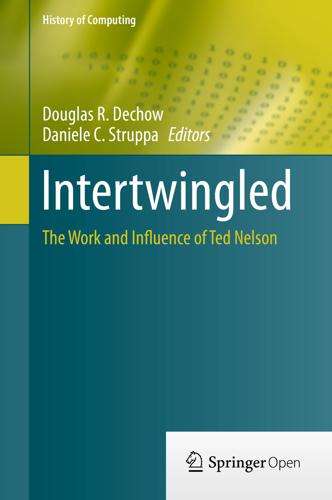
Intertwingled: The Work and Influence of Ted Nelson (History of Computing)
by
Douglas R. Dechow
Published 2 Jul 2015
One of the reasons for this I think, as some game critics have said, is that it’s partly because when you’re looking at ways to interact with a virtual world, destruction is one of the first and most obvious ways to have an effect on the world. It’s kind of a 2 year old’s way of dealing with the world: poke at things and see if they break! A big check-box for game designers was “can we add more destructibility to the environment.” Thankfully, we’re now starting to move beyond that and explore other things that games can do. Finally, one of my great passions is the intertwingularity of popular culture. I’m very interested in what is usually referred to as “fan fiction.”
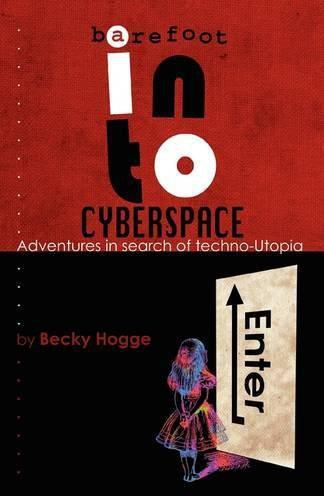
Barefoot Into Cyberspace: Adventures in Search of Techno-Utopia
by
Becky Hogge
,
Damien Morris
and
Christopher Scally
Published 26 Jul 2011
Bequeathed to the Quakers by the daughter of its original owner, the first Admiral of the Royal Canadian Navy, Grindstone Island became an experimental centre of non-violent civilian defence against the backdrop of the Vietnam War. In 1965, it had been the setting for the disastrous “Grindstone experiment”, a role-playing game designed to test theories of non-violent resistance that in the end only served to highlight their inefficacy: the entire exercise was curtailed two days early after half the non-violent party were “killed” by a staged invading force. It was the mid-eighties by the time a young Cory arrived at Grindstone Island, and it was there that Cory’s techno-Utopianism was to crystallise.

Lonely Planet Pocket San Francisco
by
Lonely Planet
and
Alison Bing
Published 31 Aug 2012
Transamerica Pyramid & Sentinel Building RUDY SULGAN/CORBIS © Best For Kids San Francisco has the least kids per capita of any US city, and according to SFSPCA data, about 19,000 more dogs than children live here. Yet many locals make a living entertaining kids – from Pixar animators to video-game designers – and this town is packed with attractions for youngsters. Junior Foodies When spirits and feet begin to drag, there’s plenty of ice cream and kid-friendly meals to pick them back up – look for the symbol throughout this book. Major Thrills Exploratorium (Click here ) Mind-bending technology and hands-on weird science exhibits that won a MacArthur genius grant.
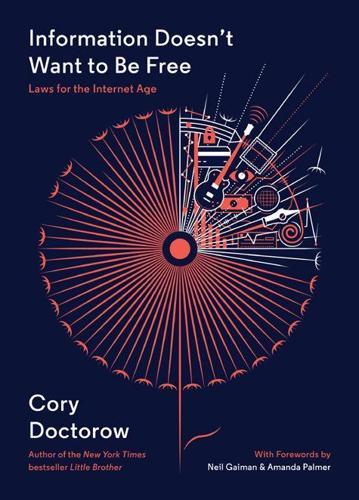
Information Doesn't Want to Be Free: Laws for the Internet Age
by
Cory Doctorow
,
Amanda Palmer
and
Neil Gaiman
Published 18 Nov 2014
Creators, investors, intermediaries, and audiences When we’re talking about copyright, we’re fundamentally talking about four different activities: making creative works, investing in creative works, distributing and selling creative works, and enjoying creative works. As a shorthand, I’ll be using “creator” to describe people who make creative works—painters, photographers, game designers, novelists, poets, musicians, songwriters, choreographers, dancers, and many other sorts of people. I’ll use “investor” to describe someone who puts capital—cash—into the production and refinement of that work: think of a publisher, a record label, a studio. I’ll use “intermediary” to describe those entities that handle the work between creation, investment, and delivery: a distributor, a website like YouTube, a retailer, an e-commerce site like Amazon, a cinema owner, a cable operator, a TV station or network.
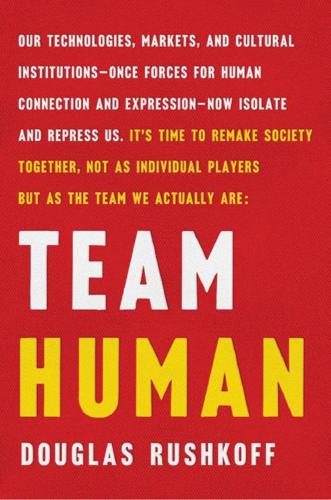
Team Human
by
Douglas Rushkoff
Published 22 Jan 2019
A simple search for “a pizzeria near me” may list all the restaurants that have paid to be found, but not those that haven’t. Persuasive designs offer users options at every juncture, in order to simulate the experience of choice without the risk of the user exercising true autonomy and wandering off the reservation. It’s the same way game designers lead all players through the same game story, even though we feel like we’re making independent choices from beginning to end. None of these choices are real, because every one leads inevitably to the outcome that the designers have predetermined for us. Because the interfaces look neutral, we accept the options they offer at face value.

How to Be Right: In a World Gone Wrong
by
James O'Brien
Published 2 Nov 2018
In short, the revenues raised by a brace of fixed-odds betting terminals in each shop is invariably enough to pay staff and rent while leaving a tidy profit for the bookmaker’s shareholders. They work so ‘well’ because they use some of the starkest teachings of behaviourist psychology. The ‘fixed odds’ element of the equation sees the punter make regular small wins as he plays, in pretty much the perfect proportion to ensure that he keeps playing. Next, the games’ designers ensure that the gap between wins never becomes big enough to sate his hunger for the next payout. And finally, with the psychological trap so perfectly set, you allow him to stake as much as £100 every twenty seconds. This combination of frequent wins, massive stakes and incredibly quick gameplay mean that these machines are designed to maximise the amount of time that people play for.

The Future of the Internet: And How to Stop It
by
Jonathan Zittrain
Published 27 May 2009
Those proprietary information services that remain, such as Lexis/Nexis and Westlaw, sustain themselves because they are the only way to access useful proprietary content, such as archived news and some scholarly journal articles.53 Of course, there need not be a zero-sum game in models of software creation, and generative growth can blend well with traditional market models. Consumers can become enraptured by an expensive, sophisticated shooting game designed by a large firm in one moment and by a simple animation featuring a dancing hamster in the next.54 Big firms can produce software when market structure and demand call for such enterprise; smaller firms can fill niches; and amateurs, working alone and in groups, can design both inspirational “applets” and more labor-intensive software that increase the volume and diversity of the technological ecosystem.55 Once an eccentric and unlikely invention from outsiders has gained notoriety, traditional means of raising and spending capital to improve a technology can shore it up and ensure its exposure to as wide an audience as possible.
…
To maintain it, the users of those devices must experience the Net as something with which they identify and belong. We must use the generativity of the Net to engage a constituency that will protect and nurture it. That constituency may be drawn from the ranks of a new generation able to see that technology is not simply a video game designed by someone else, and that content is not simply what is provided through a TiVo or iPhone. Acknowledgments Many people helped bring about this book. I am fortunate to have brainstormed, taught, and argued with Terry Fisher, Lawrence Lessig, Charlie Nesson, and John Palfrey. They helped me discover, shape, and refine the underlying ideas and themes.
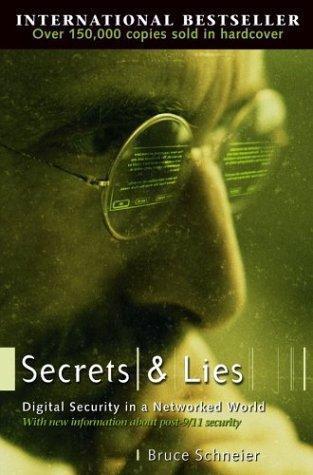
Secrets and Lies: Digital Security in a Networked World
by
Bruce Schneier
Published 1 Jan 2000
Hackers have written computer bots that assist play for some of these games, particularly Quake and NetTrek. The idea is that the bots can react much quicker than a human, so that the player becomes much more effective when using these bots. An arms race has ensued, as game designers try to disable these bots and force fairer play, and the hackers make the bots cleverer and harder to disable. These games are trying to rely on trusted client software, and the hacker community has managed to break every trick the game designers have thrown at them. I am continuously amazed by the efforts hackers will go through to break the security. The lessons are twofold: not only is there no reasonable way to trust a client-side program in real usage, but there’s no possible way to ever achieve that level of protection.

Consumed: How Markets Corrupt Children, Infantilize Adults, and Swallow Citizens Whole
by
Benjamin R. Barber
Published 1 Jan 2007
On the other hand, the simulation is not programmed in accord with neoliberalism’s anti–big government discourse and so is not averse to inviting state intervention on the way to improving a simulated society. The social significance of games is attested to by the spread of video-game design to academia, in no small part through the influence of leading game design companies such as Electronic Arts. The University of Southern California, the University of Central Florida, Georgia Tech, and Parsons School of Design at New School University (among others) have now launched technical design offerings (and in some cases humanities programs) that pay attention to video games.
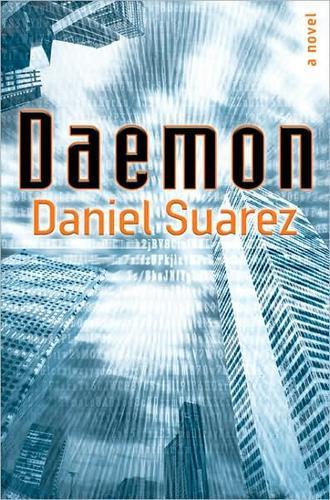
Daemon
by
Daniel Suarez
Published 1 Dec 2006
He knew there was no hope of containing the Daemon now. And guns were useless against it. Chapter 13:// Demo BBC.co.uk Dead Computer Genius Slays Police, Federal Agents— Thousand Oaks, CA—Authorities have surrounded a walled estate owned by the late Matthew Sobol, a leading computer game designer who died earlier this week of brain cancer. Six law officers were killed and nineteen others injured serving a search warrant at the property. They were reportedly attacked by a computer-controlled SUV that still roams the grounds. Anderson’s North Beach condo had twelve-foot pressed-tin ceilings, original wood floors, full-height windows with a fabulous view of the windows across the street, and enough Victorian charm to draw grudging praise from the snottiest folks she knew.
…
The top headline screamed at him: Dead Computer Genius Kills Eight Gragg clicked the link, and the extensive news coverage of the siege at Sobol’s estate unfolded before him. Gragg voraciously read every word and followed every link. An hour later and he was wide-awake again with one ‘factoid’ echoing in his mind: “…Matthew Sobol, game designer and AI architect for Over the Rhine.” This Sobol guy had been a genius. Beyond a genius. Gragg was rarely impressed by other people’s hacks—but this Sobol was the king. Engineering a daemon that took vengeance on the world once you were safely dead and beyond all punishment. Gragg’s mind ran through the possibilities.

The Start-Up of You: Adapt to the Future, Invest in Yourself, and Transform Your Career
by
Reid Hoffman
and
Ben Casnocha
Published 14 Feb 2012
Be a Bridge A good way to help people is to introduce them to people and experiences they wouldn’t otherwise be able to access. In other words, straddle different communities/social circles and then be the bridge that your friends can walk over. My passion for entrepreneurship combined with my interest in board game design led me to introduce many of my entrepreneur friends to Settlers of Catan, the German board game. A community in Silicon Valley has sprung up around the game. I’ve also combined my experience scaling consumer Internet products with my interest in cause-based philanthropy to help organizations like Kiva and Mozilla—bridging my network and expertise from the for-profit world to the not-for-profit world.
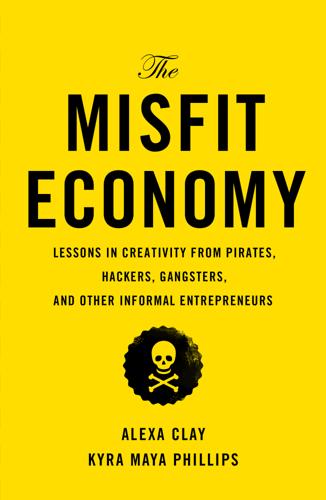
The Misfit Economy: Lessons in Creativity From Pirates, Hackers, Gangsters and Other Informal Entrepreneurs
by
Alexa Clay
and
Kyra Maya Phillips
Published 23 Jun 2015
If the results of this experiment are positive, they would enable greater workplace safety in many industries where focus and attention on task is key to success—for example, mining and construction or medical surgery. Other types of “culture hacks” can be simpler acts of insurgency. Heidi McDonald, a video game designer, decorates her desk at work with a pirate ship and is planning to get a skull and crossbones tattoo. David Berdish, who was looking to reinvent mobility at Ford, was very open at work about his Catholic faith. Sometimes the simplest change we can make to a culture is to bring our passions and values to work.
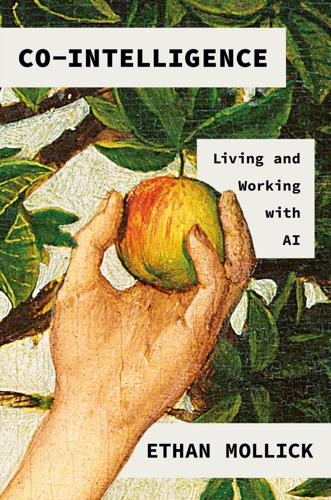
Co-Intelligence: Living and Working With AI
by
Ethan Mollick
Published 2 Apr 2024
The big AI companies, including OpenAI and Microsoft, shared our prompts as the examples to use in classrooms, and the prompts themselves were cited and passed around educational institutions around the world. While we didn’t think of ourselves as having a special skill in prompting, we found that we were very good at making AI dance to our tune. We don’t really know why we are good at this (Experience? A background in game design and teaching? An ability to take the “perspective” of the AI, of the instructor, and of the student? Our experience in writing instructions for a variety of audiences?), but it suggests that there may be a role for humans who are experts at working with AI in particular fields. We just haven’t quite pinpointed the specific skills or expertise that taps into the ability to “speak” to the AI.

The Age of Surveillance Capitalism
by
Shoshana Zuboff
Published 15 Jan 2019
The ultimate goal is to capture a comprehensive array of the 151 Pokémon, but along the way players earn “experience points,” rising to successive levels of expertise. At level five, players can join one of three teams to battle Pokémon at designated sites referred to as “gyms.” The ramp-up had begun years earlier with Ingress, Niantic’s first mobile game designed for real-world play. Released in 2012, Ingress was a precursor and test bed for the capabilities and methods that would define Pokémon Go. The game drove its users through their cities and towns to find and control designated “portals” and capture “territory” as the game masters relied on GPS to track users’ movements and map the territories through which they roamed.
…
BJ Fogg,” Technori, October 19, 2012, http://technori.com/2012/10/2612-behavior-design-bootcamp; Ryan Wynia, “BJ Fogg’s Behavior Design Bootcamp: Day 2,” Technori, October 22, 2012, http://technori.com/2012/10/2613-behavior-de sign-bootcamp-day-2. The Stanford researcher B. J. Fogg in his 2003 book Persuasive Technology recognized that computer game designers seek to change people’s behaviors with Skinnerian-style conditioning, concluding that “good game play and effective operant conditioning go hand in hand.” 33. Kevin Werbach, “(Re)Defining Gamification: A Process Approach,” in Persuasive Technology, Lecture Notes in Computer Science, International Conference on Persuasive Technology (Cham, Switzerland: Springer, 2014), 266–72, https://doi.org/10.1007/978-3-319-07127-5_23; Kevin Werbach and Dan Hunter, For the Win: How Game Thinking Can Revolutionize Your Business (Philadelphia: Wharton Digital Press, 2012). 34.
…
Kevin Werbach, “(Re)Defining Gamification: A Process Approach,” in Persuasive Technology, Lecture Notes in Computer Science, International Conference on Persuasive Technology (Cham, Switzerland: Springer, 2014), 266–72, https://doi.org/10.1007/978-3-319-07127-5_23; Kevin Werbach and Dan Hunter, For the Win: How Game Thinking Can Revolutionize Your Business (Philadelphia: Wharton Digital Press, 2012). 34. Michael Sailer et al., “How Gamification Motivates: An Experimental Study of the Effects of Specific Game Design Elements on Psychological Need Satisfaction,” Computers in Human Behavior 69 (April 2017): 371–80, https://doi.org/10.1016/j.chb.2016.12.033; J. Hamari, J. Koivisto, and H. Sarsa, “Does Gamification Work?—a Literature Review of Empirical Studies on Gamification,” in 47th Hawaii International Conference on System Sciences, 2014, 3025–34, https://doi.org/10.1109/HICSS.2014.377; Carina Soledad González and Alberto Mora Carreño, “Methodological Proposal for Gamification in the Computer Engineering Teaching,” 2014 International Symposium on Computers in Education (SIIE), 1–34; Dick Schoech et al., “Gamification for Behavior Change: Lessons from Developing a Social, Multiuser, Web-Tablet Based Prevention Game for Youths,” Journal of Technology in Human Services 31, no. 3 (2013): 197–217, https://doi.org/10.1080/15228835.2013.812512. 35.

Presentation Zen
by
Garr Reynolds
Published 15 Jan 2012
Mastering these aptitudes is not sufficient; leveraging these aptitudes has become necessary for professional success and personal fulfillment in today’s world. The introduction to the aptitudes that follows is written with multimedia-enhanced presentations in mind. But, you could take the six aptitudes and apply them to the art of game design, programming, product design, project management, health care, teaching, retail, and so on. The slide below summarizes six of the key points found in Pink’s book. (The original images in the slide are from a vector file from iStockphoto.com, file no. 700018.) Design To many business people, design is something you spread on the surface, like icing on a cake.

American Gun: The True Story of the AR-15
by
Cameron McWhirter
and
Zusha Elinson
Published 25 Sep 2023
Gunmakers worried that these older buyers were tapped out on purchases and weren’t passing down the hunting tradition to their children and grandchildren. The firearms industry needed to find a way to reach younger customers. Some gun marketers saw video games as a potential way to market their products. Gun companies and game designers made agreements to place name-brand AR-15s and other weapons in games that were popular with boys and young men. Gunmakers didn’t need to seek these deals out at first; designers who wanted their games to look realistic came to them. Money rarely changed hands. But with the appearance of AR-15s in these games, the gun’s makers suddenly accessed millions of potential new customers.
…
“It really is irony that video games that just a decade ago were considered the number one threat to gaining new shooters is perhaps now the number one draw,” one Freedom Group vice president wrote in an internal email. “It’s just another way to get their name out there,” recalled Pete Blumel, a producer at the video-game designer Infinity Ward, which created the popular game franchise Call of Duty. One of Blumel’s responsibilities at Infinity Ward was to select the weapons for the games. Once they decided on the guns, Blumel would have the actual firearms photographed from every angle so the guns would appear as realistic as possible.

Everyware: The Dawning Age of Ubiquitous Computing
by
Adam Greenfield
Published 14 Sep 2006
While unidimensional bar-codes have seen ubiquitous public use since 1974 as the familiar Universal Product Code, they're sharply limited in terms of information density; newer 2D formats such as Semacode and QR, while perhaps lacking the aesthetic crispness of the classic varieties, allow a literally geometric expansion of the amount of data that can be encoded in a given space. At present, one of the most interesting uses of 2D codes is when they're used as hyperlinks for the real world. Semacode stickers have been cleverly employed in this role in the Big Games designed by the New York City creative partnership area/code, where they function as markers of buried treasure, in a real-time playfield that encompasses an entire urban area—but what 2D coding looks like in daily practice can perhaps best be seen in Japan, where the QR code has been adopted as a de facto national standard.
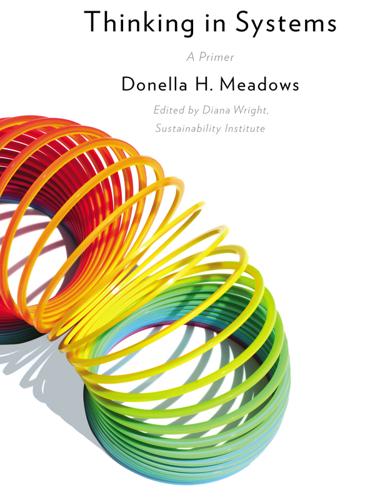
Thinking in Systems: A Primer
by
Meadows. Donella
and
Diana Wright
Published 3 Dec 2008
That’s what antitrust laws do in theory and sometimes in practice. (One of the resources very big companies can win by winning, however, is the power to weaken the administration of antitrust laws.) The most obvious way out of the success-to the-successful archetype is by periodically “leveling the playing field.” Traditional societies and game designers instinctively design into their systems some way of equalizing advantages, so the game stays fair and interesting. Monopoly games start over again with everyone equal, so those who lost last time have a chance to win. Many sports provide handicaps for weaker players. Many traditional societies have some version of the Native American “potlatch,” a ritual in those who have the most give away many of their possessions to those who have the least.

The Data Journalism Handbook
by
Jonathan Gray
,
Lucy Chambers
and
Liliana Bounegru
Published 9 May 2012
But if the front end sucks, nobody will care about it. There is still a lot to learn about and to experiment with. But luckily there is the games industry, which has been innovating with respect to digital narratives, ecosystems, and interfaces for several decades now. So when developing data journalism applications, we should closely watch how game design works and how stories are told in games. Why are casual games like Tetris such fun? And what makes the open worlds of sandbox games like Grand Theft Auto or Skyrim rock? We think that data journalism is here to stay. In a few years, data journalism workflows will be quite naturally embedded in newsrooms, because news websites will have to change.
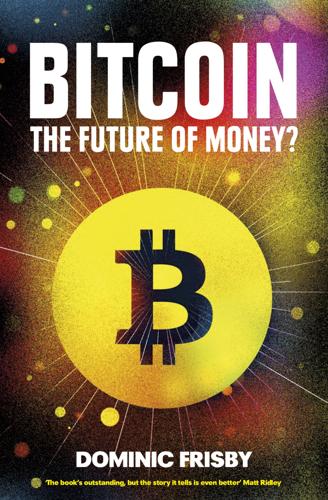
Bitcoin: The Future of Money?
by
Dominic Frisby
Published 1 Nov 2014
There are hundreds of different programming languages, but Satoshi chose to code in C++. In C++, programmers have to do things for themselves that are automated in later languages – they are working with ‘nuts and bolts’, close to the hardware of the computer. This means there are many who don’t go near C++, finding it too complicated, though it remains popular with games designers – and cryptographers. Other coders, such as Wei Dai, think it is ‘a pretty standard choice for anyone wanting to build such a piece of software’.132 C++ is a computing subculture in itself. Dan Kaminsky – the hacker who tried to crack Bitcoin – was initially dismissive about the choice to use C++.
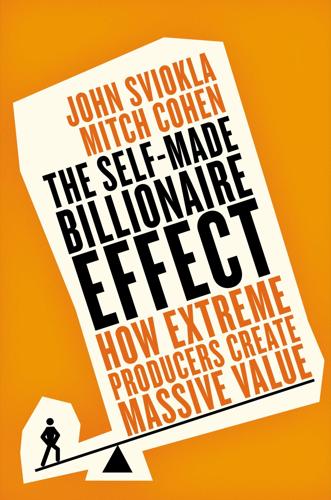
The Self-Made Billionaire Effect: How Extreme Producers Create Massive Value
by
John Sviokla
and
Mitch Cohen
Published 30 Dec 2014
Jaharis and Frost sold Key in 1986 to Schering-Plough, and Jaharis went on to found Kos Pharmaceuticals, which marketed the first niacin product that is well tolerated and effective at increasing good cholesterol. Jaharis sold Kos to Abbot Laboratories. He has since founded Vatera Healthcare Partners, a health venture capital firm, and Arisaph Pharmaceuticals, a biotech discovery firm. Steve Jobs 1955–2011, United States Apple Computer, Pixar Jobs was a game designer at Atari when he, Steve Wozniak, and Ronald Wayne launched Apple Computer in 1976 to market a personal computer Wozniak had invented. The first Apple PCs proved a huge success, but later products floundered. Infighting led to Jobs’s 1985 ouster. He founded NeXT Computer and bought the Pixar animation studio from George Lucas.
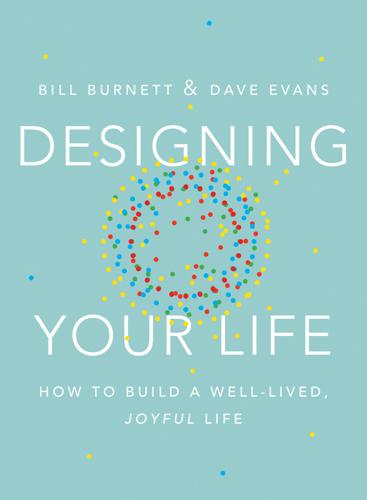
Designing Your Life: How to Build a Well-Lived, Joyful Life
by
Bill Burnett
and
Dave Evans
Published 12 Sep 2016
Most of all, curiosity is going to help you “get good at being lucky.” It’s the reason some people see opportunities everywhere. Try Stuff. When you have a bias to action, you are committed to building your way forward. There is no sitting on the bench just thinking about what you are going to do. There is only getting in the game. Designers try things. They test things out. They create prototype after prototype, failing often, until they find what works and what solves the problem. Sometimes they find the problem is entirely different from what they first thought it was. Designers embrace change. They are not attached to a particular outcome, because they are always focused on what will happen next—not what the final result will be.
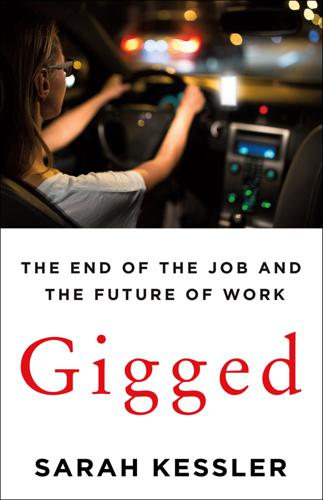
Gigged: The End of the Job and the Future of Work
by
Sarah Kessler
Published 11 Jun 2018
He had stood nervously in front of a whiteboard as various managers filtered into the room, asked him esoteric questions unrelated to the work he would actually do on the job, and watched him draw and explain his answers. He performed so poorly in his daylong interview that shortly after he had begun, he already knew he’d failed. It felt terrible. Gigster’s interview, he was relieved to find out, would follow a completely different process. It would be conducted via a typed chat. Rather than esoteric mind games designed to test theoretical knowledge, like the ones he’d completed while interviewing at other tech companies, all of Gigster’s questions related directly to whether or not Curtis would be able to do the job. The company had no obvious reason to care if Curtis was a “culture fit,” had growth potential, or worked well on a team.
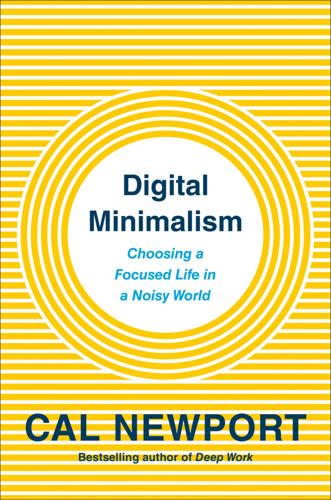
Digital Minimalism: Choosing a Focused Life in a Noisy World
by
Cal Newport
Published 5 Feb 2019
People are more eager than ever before to play Scrabble with neighbors, or trash-talk co-workers over poker, or line up in the Toronto cold for a table at Snakes & Lattes. The classic games that were popular in the pre-digital 1980s—Monopoly, Scrabble—remain popular sellers today, while the internet is fueling innovations in new game design (one of the most popular categories on Kickstarter is board games), leading to a renaissance in smarter, European-style strategy games—a movement best exemplified by the megahit Settlers of Catan, which has sold more than 22 million copies worldwide since it was first published in Germany in the mid-1990s.
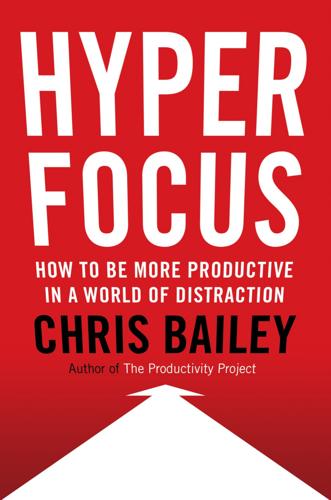
Hyperfocus: How to Be More Productive in a World of Distraction
by
Chris Bailey
Published 31 Jul 2018
Hyperfocus consumes mental energy, while scatterfocus is energy restorative. Scattering your attention will be particularly beneficial when your work demands that you connect more complex, disparate ideas. For example, you should scatter your attention more often if you’re a researcher responsible for designing experiments or a video game designer who constructs story lines. The more creativity your job requires, the more often you should scatter your attention. In most cases, the knowledge work of today benefits from as much creativity as we can bring to it. Finally, the frequency with which you scatter your attention should reflect how important it is that you find the right approach to your work.

Spike: The Virus vs The People - The Inside Story
by
Jeremy Farrar
and
Anjana Ahuja
Published 15 Jan 2021
Harries said publicly that the UK did not need to follow the WHO’s advice (that countries should ‘test, test, test’) because it did not apply to high-income countries. In 2021, she was appointed chief executive of the UK Health Security Agency. Demis Hassabis A former child chess prodigy, neuroscientist, games designer and entrepreneur, and co-founder of artificial intelligence start-up DeepMind. Hassabis attended the SAGE meeting on 18 March 2020, where he expressed alarm at the way the epidemic was unfolding. Richard Hatchett CEO of CEPI (the Coalition for Epidemic Preparedness Innovations) and a former White House adviser (during the H1N1 outbreak of 2009).

Arbitrary Lines: How Zoning Broke the American City and How to Fix It
by
M. Nolan Gray
Published 20 Jun 2022
In this regard, negative though it may at first seem, the project of this book is fundamentally constructive: beyond merely arguing against the arbitrary lines that hold us back, this book is a reminder that a more affordable, prosperous, equitable, and sustainable America is possible. Will you be a part of that journey? Part I CHAPTER 1 Where Zoning Comes From For many Americans, their singular experience with city planning is a little game called SimCity. First released in 1989 and developed by legendary game designer Will Wright, the game invites players to plan their own cities. More of a sandbox than a conventional game with points or levels, each new “round” of SimCity presents players with a virgin field, the power to map out streets and zoning, and the freedom to do whatever they like from there. Poor planning decisions are punished with blinking indicators and unsolicited advice from AI advisors; wise planning decisions are rewarded with happy simulated citizens and a growing city.
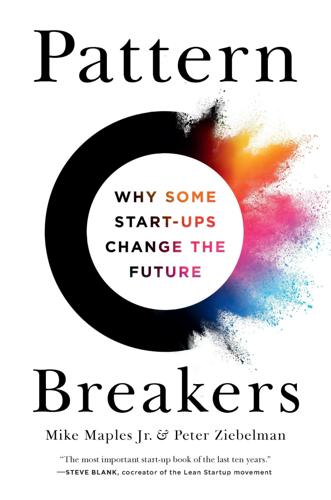
Pattern Breakers: Why Some Start-Ups Change the Future
by
Mike Maples
and
Peter Ziebelman
Published 8 Jul 2024
Twitch’s success versus Quibi’s failure highlights the difference between tapping into inflections versus merely following trends. An inflection offers a chance to radically change human capabilities for the first time. In Twitch’s case, home broadband had recently advanced to a stage where high-definition video streaming was accessible to most people. Multiplayer games designed for replayability had concurrently seen a surge in popularity. This pivotal moment, marked by the capability to widely stream games just as they were becoming popular shared experiences, allowed Twitch to launch something new and compelling that gamers hadn’t seen before. Twitch’s livestreaming service tapped into the growing gaming culture and offered a unique, interactive, and community-driven platform for both viewers and streamers.

HTML5 Canvas
by
Steve Fulton
and
Jeff Fulton
Published 2 May 2013
This is known as the law of conservation of momentum (Newton’s third law). To do this, we will take the x and y velocities of two colliding balls, and draw a “line of action” between their centers. This is illustrated in Figure 5-9, which has been adapted from Jobe Makar and Ben Winiarczyk’s Macromedia’s Flash MX 2004 Game Design Demystified (Macromedia Press). Then we will create new x and y velocities for each ball based on this angle and the law of conservation of momentum. To properly calculate conservation of momentum when balls collide on the canvas, we need to add a new property: mass. Mass is the measurement of how much a ball (or any object) resists any change in its velocity.
…
It took some serious effort for us to translate this code from other sources into a working example on HTML5 Canvas. The code here is based on Flash Lite Effort: Embedded Systems and Pervasive Computing Lab by Felipe Sampaio. It is also partly based on Jobe Makar and Ben Winiarczyk’s work in Macromedia Flash MX 2004 Game Design Demystified, and Keith Peters’ books on ActionScript animation. Here is the full code listing for Example 5-7. Example 5-7. Balls with simple interactions <!doctype html> <html lang="en"> <head> <meta charset="UTF-8"> <title>CH5EX7: Balls With Simple Interactions</title> <script src="modernizr.js"></script> <script type="text/javascript"> window.addEventListener('load', eventWindowLoaded, false); function eventWindowLoaded() { canvasApp(); } function canvasSupport () { return Modernizr.canvas; } function canvasApp() { if (!

The Google Resume: How to Prepare for a Career and Land a Job at Apple, Microsoft, Google, or Any Top Tech Company
by
Gayle Laakmann Mcdowell
Published 25 Jan 2011
Once the core game components have been decided, some designers may double as engineers. Designers are not necessarily expected to have an artistic background, but they are expected to be highly creative. Recruiters typically want people with some sort of development background, even if they won’t be a full-time coder. Many schools offer courses or programs in game design, from which companies recruit designers. Other Roles Though development, production, art, and design may handle game creation, a number of other key support roles exist. The following are some of the most popular: Quality assurance. QA can be broken down into three types: functional testing, certification testing, and automation testing.

Memory Machines: The Evolution of Hypertext
by
Belinda Barnet
Published 14 Jul 2013
Romney, on the ontological status of corporations). For the moment it is enough to note that Coulton’s title applies both to the arch-villain of the game (GLaDOS, or Genetic Lifeform and Disk Operating System), as well as everyone who beats the final level, becoming perhaps the most important ‘people who are still alive’, if you are a game designer. Such at least was the song’s first rhetorical situation, before it went viral on YouTube: if you are hearing this message, congratulations, your long history of failure has paid off. You have traversed or configured the game logic to reach this not entirely meaningless outcome. Okay, you win; the game, of course, goes on.

Thinking Machines: The Inside Story of Artificial Intelligence and Our Race to Build the Future
by
Luke Dormehl
Published 10 Aug 2016
More than 1,500 new types of occupation have all appeared as official job categories since 1990. These include roles such as software engineers, search engine optimisation experts and database administrators. The use of AI within video games has meanwhile inspired millions of fans to seek out work as professional game developers. Like ‘vloggers’, the job of video game designer was not the dream of a single person 200 years ago, although today the video game industry is among the world’s most valuable entertainment industries. The launch of Grand Theft Auto V in September 2013 achieved worldwide sales of more than £500 million – becoming the biggest launch of any entertainment product in history.

Discardia: More Life, Less Stuff
by
Dinah Sanders
Published 7 Oct 2011
That’s the principle behind EpicWin, an iPhone app that you can use to cajole yourself into doing mundane household chores: “I really want to call it quits for the night, but washing the dishes will only take five minutes and I will get experience points for it. I am really close to leveling up!” HealthMonth, the online game, helps build habits that will make you feel better all the time. It’s not just a silly trick. Games designer, researcher, and author Jane McGonigal cites years of scientific studies to back up her assertion that “… when we game we are tapping into our best qualities: our ability to be motivated, to be optimistic, to collaborate with others, to be resilient in the face of failure.” Stepping into that place of strength in the safe environment of games makes it easier for us to do so outside of them.
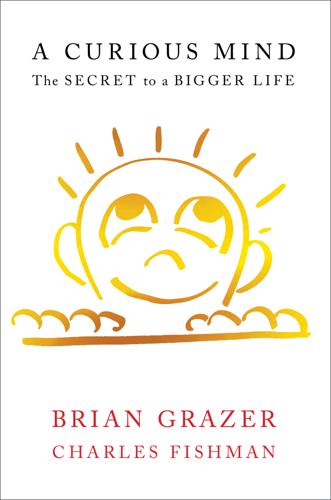
A Curious Mind: The Secret to a Bigger Life
by
Brian Grazer
and
Charles Fishman
Published 6 Apr 2014
Wilson: biologist, author, professor emeritus at Harvard University, two-time winner of the Pulitzer Prize Oprah Winfrey: founder and chairwoman of the Oprah Winfrey Network, actress, author George C. Wolfe: playwright, theater director, two-time winner of the Tony Award Steve Wozniak: cofounder of Apple Inc., designer of Apple I and Apple II computers, inventor John D. Wren: president and CEO of marketing and communications company Omnicom Will Wright: game designer, creator of Sim City and The Sims Steve Wynn: businessman, Las Vegas casino magnate Gideon Yago: writer, former correspondent for MTV News Eitan Yardeni: teacher and spiritual counselor at the Kabbalah Centre Daniel Yergin: economist, author of The Prize: The Epic Quest for Oil, Money and Power, winner of the Pulitzer Prize Dan York: chief content officer at DirecTV, former president of content and advertising sales, AT&T Michael W.
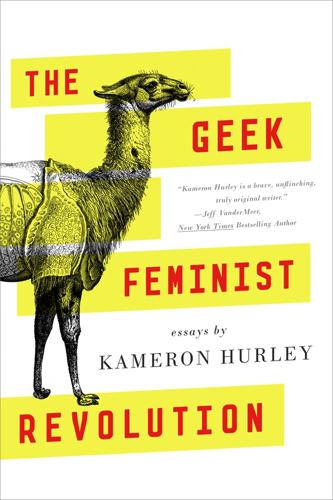
The Geek Feminist Revolution
by
Kameron Hurley
Published 1 Jan 2016
Many young men, taught by our culture to emote only anger and sarcasm, are ill-equipped when it comes to processing strong emotion. When you are promised the world and the world says it doesn’t want you, you’re left flailing and lashing out, and that’s what these guys did. In the churn of comments sections across the internet, someone decided the real problem here was that the young woman was a video game designer, and the man she was accused of sleeping with by her ex-boyfriend was a video game reviewer, and that this was some kind of breach of … ethics in gaming journalism. I’m unsure how this epiphany grew out of a spurned ex-boyfriend’s explicit rant about his ex-girlfriend’s supposed sexual exploits, but this is the internet.
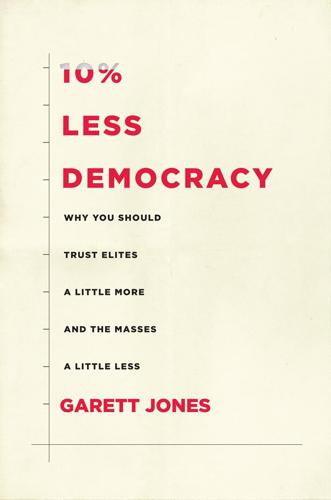
10% Less Democracy: Why You Should Trust Elites a Little More and the Masses a Little Less
by
Garett Jones
Published 4 Feb 2020
Case describes them: “Numerous forums for dialogue including the Feedback Unit, created in 1985, the Government Parliamentary Committees, introduced in 1987, and the Institute of Policy Studies, formed in 1988, have grown up alongside new middle class constituencies and dissuaded them from seeking more autonomous modes of participation.”¹⁰ It’s PAP’s political ground game, designed to make the middle classes feel that they’re being heard. And indeed, it gives the PAP more information about what the middle classes actually want. It’s not democracy—it’s not listening carefully to everyone. Instead it’s semidemocracy: listening carefully to PAP’s core constituency, but holding honest elections so that everyone can let off some steam.
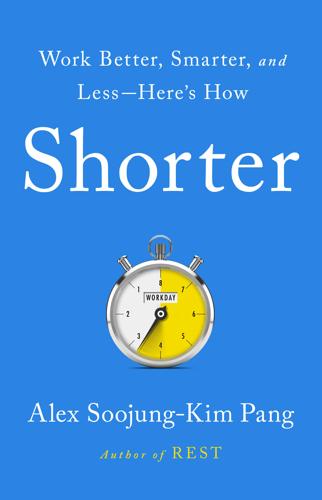
Shorter: Work Better, Smarter, and Less Here's How
by
Alex Soojung-Kim Pang
Published 10 Mar 2020
“On Monday through Thursday, I feel like we have a more focused and engaged workforce, because they say, ‘I just need to make sure that I’m getting the things that I need done, done,’” Cockroach Labs CEO Spencer Kimball tells me. “Having shorter time doesn’t mean that you’re losing creativity,” game designer Linus Feldt says, since being “more focused made the staff more creative and better at finding solutions.” The four-day workweek at web design firm Reusser Design gives developers “more concentration time, and that, paired with a conscious effort to minimize interruptions, means more productive days” than a five-day week, writes UX designer Andy Welfle.
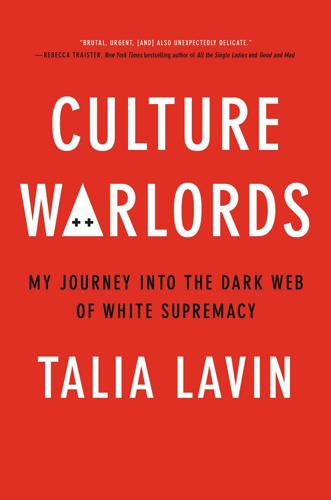
Culture Warlords: My Journey Into the Dark Web of White Supremacy
by
Talia Lavin
Published 14 Jul 2020
While this particular example is extreme, lesser versions of misogynist harassment play out every day online. Women of color are subject to extraordinary harassment, but white women, too, receive disproportionate harassment online, compared to their male counterparts. This is particularly true of those who are outspoken about feminism, or who enter fields—such as video-game design and science—that misogynists view as “masculine” endeavors. In April 2019, newspapers and blogs exploded with the first documented image of a black hole: an eye-of-Sauronish red ring, like a sinister doughnut, carefully constructed by scientists. Among those scientists was a twenty-nine-year-old postdoctoral fellow named Katie Bouman, who, working at MIT, was a prominent member of the team that created the groundbreaking image.

The Molecule of More: How a Single Chemical in Your Brain Drives Love, Sex, and Creativityand Will Det Ermine the Fate of the Human Race
by
Daniel Z. Lieberman
and
Michael E. Long
Published 13 Aug 2018
When do they quit? What kinds of experiences make them play longer? What kinds make them give up? According to gaming theorist Tom Chatfield, the biggest online games have accumulated billions of data points about their players. They know exactly what lights up dopamine, and what turns it off—though game designers are not thinking of these events as dopamine triggers, but simply as “what works.” So, what do the data tell us about the ideal portion of treasure chests that should contain gems? It turns out that 25 percent is the magic number. That’s what keeps people playing the longest. And there’s no reason why the other 75 percent should be empty.
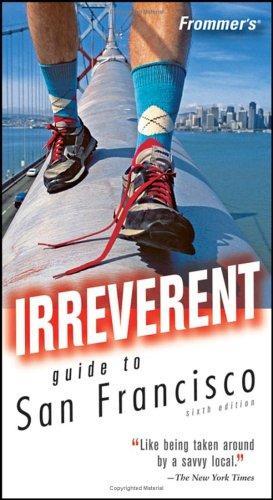
Frommer's Irreverent Guide to San Francisco
by
Matthew Richard Poole
Published 17 Mar 2006
The Palace of Fine Arts is a must-see, not just because it houses the Exploratorium, but because it looks just like an ancient Roman temple and it’s the only building that remains from the 1915 Panama Pacific Exposition (held to celebrate the opening of the Panama Canal). A trip to the Exploratorium is also mandatory, particularly if you’re toting along kids. Seasoned locals will assure you it’s the most fun you can have without hallucinogenic drugs, especially if you crawl through the dark, sensual Tactile Dome or try any of the other hands-on games designed to totally twist your mind. You never know what the mad scientists will have in store for you at this wonderfully fun, interactive science museum—and the gift shop is the best place in the city to load up on brainy birthday and Christmas gifts. San Francisco’s cable-car system is still run out of a three-story red-brick barn, and you can watch it in action from several special spectator galleries at the highly entertaining (and always free) Cable Car Museum.
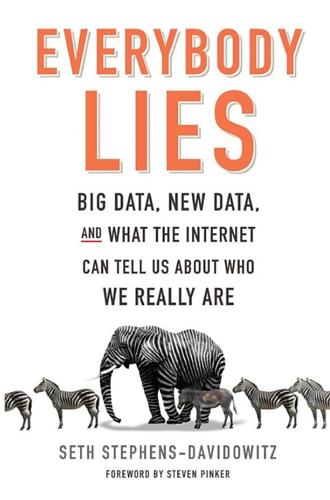
Everybody Lies: Big Data, New Data, and What the Internet Can Tell Us About Who We Really Are
by
Seth Stephens-Davidowitz
Published 8 May 2017
In other words, find enough winners of A/B tests and you have an addictive site. It is the type of feedback that cigarette companies never had. A/B testing is increasingly a tool of the gaming industry. As Alter discusses, World of Warcraft A/B-tests various versions of its game. One mission might ask you to kill someone. Another might ask you to save something. Game designers can give different samples of players’ different missions and then see which ones keep more people playing. They might find, for example, that the mission that asked you to save a person got people to return 30 percent more often. If they test many, many missions, they start finding more and more winners.

Nomadland: Surviving America in the Twenty-First Century
by
Jessica Bruder
Published 18 Sep 2017
So iconic—and dreaded—was the poorhouse that it was awarded a square in the earliest version of Monopoly. Situated on a corner of the board, this civic institution was the space of last resort for any player who “has not enough money to pay his expenses, and cannot borrow any or cannot sell or mortgage any of his property,” according to the 1904 rules. In later versions, game designers paved over the poorhouse and put up a “free parking” space. It took the Great Depression to make retirement into a reality in the United States. There were too many workers, too few jobs, and a consequent sense that the elderly needed to be nudged out of the labor pool. At the same time, older Americans weren’t faring so well.
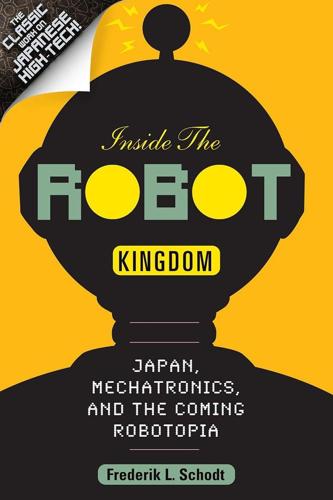
Inside the Robot Kingdom: Japan, Mechatronics and the Coming Robotopia
by
Frederik L. Schodt
Published 31 Mar 1988
Dainichi Kiko made amusement robots to complement its regular line for industry. The game companies, like the toy companies, make them to raise their own technological level and to create a high-tech image. One of the biggest amusement robot manufacturers is Namco, best known today for Pac-Man, the video arcade game designed by Toru Iwatani that took the world by storm in 1980. Established in 1955, Namco has a long relationship with robots. It originally built amusement attractions and rides of the sort commonly found on the tops of Japanese urban department stores—often in the shape of popular cartoon character robots like Arare-chan and Doraemon.
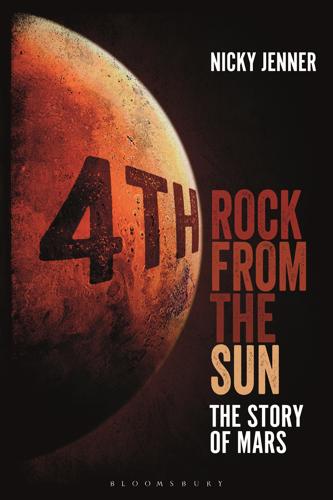
4th Rock From the Sun: The Story of Mars
by
Nicky Jenner
Published 5 Apr 2017
The more light-hearted Daffy Duck: The Marvin Missions uses the aforementioned ant-like humanoid Marvin the Martian as the antagonist, who must be destroyed in order to complete the final stage of the game. New concepts are being developed using virtual reality (VR) technology. NASA is collaborating with game developers on a project named Mars 2030, an interactive game designed for VR headsets that will place the player directly on to the surface of Mars. Mars 2030 is as scientifically accurate as possible, from topography through to gravity, making it a kind of hybrid between a video game and a planetary simulator. Many musicians have taken inspiration from Mars, notably Holst with his famous The Planets suite (written in approximately 1914).

Exponential Organizations: Why New Organizations Are Ten Times Better, Faster, and Cheaper Than Yours (And What to Do About It)
by
Salim Ismail
and
Yuri van Geest
Published 17 Oct 2014
EyeWire illustrates how an ExO can apply game elements and mechanics in non-game products and services to create fun and engaging experiences, converting users into loyal players—and in the process accomplish extraordinary things. Other games that use this technique include MalariaSpot (hunt malaria parasites in real images), GalaxyZoo (classify galaxies according to their shapes) and Foldit (help biochemists combat AIDS and other diseases by predicting and producing protein models). As game designer and author Jane McGonigal sees it, “Human beings are wired to compete.” Engaging gamers, however, requires more than just throwing a game up on a website and letting gamers have at it. “Gamification should empower people, not exploit them. It should feel good at the end of the day because you made progress towards something that mattered to you.”
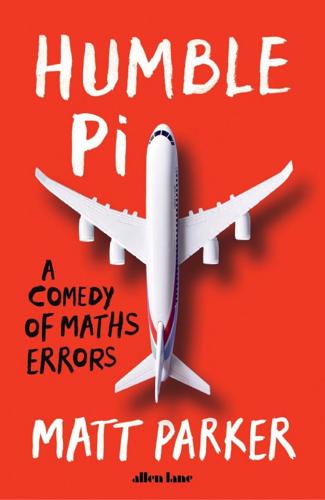
Humble Pi: A Comedy of Maths Errors
by
Matt Parker
Published 7 Mar 2019
They pit you against several world leaders from history in a race to build the greatest civilization, one of whom is the normally peace-loving Gandhi. But ever since early versions of the game, players noticed that Gandhi was a bit of a jerk. Once he developed atomic technology, he would start dropping nuclear bombs on other nations. This was because of a mistake in the computer code. The game designers had deliberately given Gandhi the lowest non-zero aggression rating possible: a score of 1. Classic Gandhi. But later in the game, when all the civilizations were becoming more, well, civilized, every leader had their aggression rating dropped by two. For Gandhi, starting from 1, this calculation played out as 1 − 2 = 255, suddenly setting him to maximum aggression.
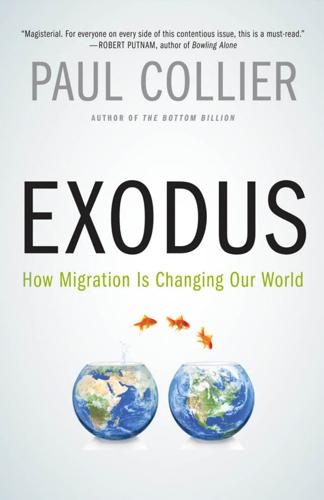
Exodus: How Migration Is Changing Our World
by
Paul Collier
Published 30 Sep 2013
In an important new study, a team of researchers investigated variations in the willingness of Hispanic immigrants to America to cooperate for public goods. The variations were designed to pick up differences in how immigrants perceived both their identity and their degree of exclusion from the society around them. An innovation of their research was that in addition to the conventional laboratory games designed to tease out attitudes to others, it included real neighborhood public goods, such as local health and education facilities. They found powerful evidence that how migrants see themselves influences their willingness to cooperate and contribute to public goods. The more migrants self-identified as Latino as opposed to American, the less they contributed.
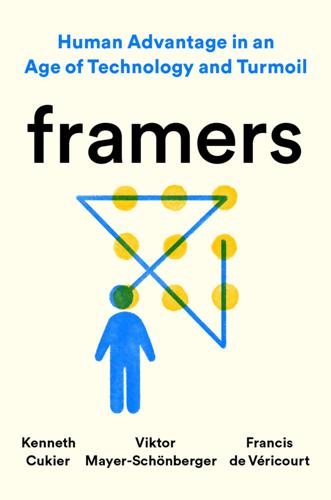
Framers: Human Advantage in an Age of Technology and Turmoil
by
Kenneth Cukier
,
Viktor Mayer-Schönberger
and
Francis de Véricourt
Published 10 May 2021
Literature, paintings and sculptures, theater, movies, and radio and television all let us experience alternative realities, but not interact with them. We can act them out in our minds—or with others, through role-playing games or anime cosplay—but we cannot directly manipulate them. One relatively new medium though is changing this. In her classic 1993 book, Computers as Theatre, the video game designer Brenda Laurel suggests that the essential quality of computer games is that they let users influence alternative realities. We’ve come a long way since then, from Mario jumping on magic mushrooms to World of Warcraft, Fortnite, Among Us, and of course Dota players slaying their friends. These games borrow some elements of the world we know but introduce ones that are novel and different.
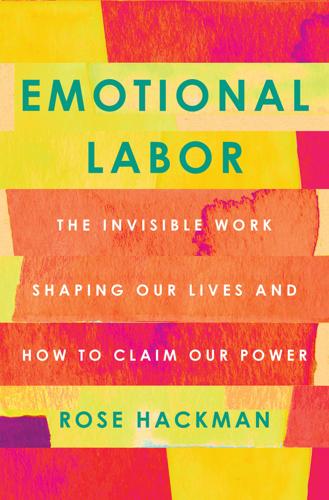
Emotional Labor: The Invisible Work Shaping Our Lives and How to Claim Our Power
by
Rose Hackman
Published 27 Mar 2023
” * * * Figuring out ways forward has been the emotional labor taken on by some, yearning for ways that allow for progress, hope, and even forms of amends. To some, the reeducation of men Colom called for is an act that we cannot afford to put off. * * * In 2015, at sex and technology conference Arse Elektronika, Mattie Brice, a game designer and cultural critic, explained the precarious educator role she was forced into taking on after sex.11 As a trans woman who had sex with cis men, she said she had little choice but to find prospective romantic partners in niche corners of the internet, marginalized from most other spaces. But as she engaged with men she met in this way, she found that lovers often cried and expressed intense emotions like shame after intimacy, expecting her to step in as a de facto therapist.
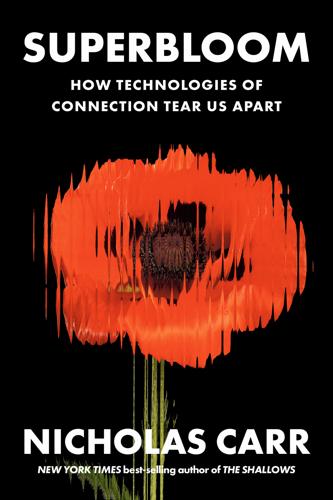
Superbloom: How Technologies of Connection Tear Us Apart
by
Nicholas Carr
Published 28 Jan 2025
Compared with the programmed delights of the virtual, it feels dull, slow, and, poignantly enough, lifeless. By filling every moment with novelty and exaggerating every psychic sensation, the hyperreal, as Baudrillard argued, comes to feel more real than the real. “It is the excess of reality that puts an end to reality.”12 The video-game designer Jane McGonigal, anticipating Andreessen’s case for virtual reality’s superiority, argued in her 2011 book, Reality Is Broken, that when we choose a virtual existence over a material one, we are acting rationally and in our best interest: The real world just doesn’t offer up as easily the carefully designed pleasures, the thrilling challenges, and the powerful social bonding afforded by virtual environments.

The Future Was Now: Madmen, Mavericks, and the Epic Sci-Fi Summer Of 1982
by
Chris Nashawaty
Not only did these teenagers seem to be hooked like bleary-eyed junkies, they seemed to possess the sort of imagination that adults had lost in the process of growing up. They were able to surrender themselves and be transported to strange new realities. From his initial lightning bolt of Pong inspiration, Lisberger dreamed up a fantasy-adventure tale about a game designer who gets sucked into a high-tech world of his own creation. On paper, the idea sounded as cool as the technology it espoused. But the real test would be seeing if making a feature film around the character and the cutting-edge technology was even feasible. Lisberger and his business partner, a lawyer and theater producer named Donald Kushner, would end up sinking $300,000 of their own money into creating a sizzle reel to shop around to the studios.

The Thinking Machine: Jensen Huang, Nvidia, and the World's Most Coveted Microchip
by
Stephen Witt
Published 8 Apr 2025
So it came as a surprise to everyone—Su included—when it was announced that Nintendo was going to Nvidia for the new Nintendo Switch. To outsiders, Nintendo resembled an uncrackable safe. Even by Japanese standards, the company was insular. It was headquartered in conservative Kyoto, with most of its decisions made by iconic game designer Shigeru Miyamoto and the small clique of executives who surrounded him. Miyamoto had been in his early thirties when he’d produced Super Mario Brothers and The Legend of Zelda; now in his sixties, gaming’s Walt Disney had lost none of his passion. Hardware and software teams in Kyoto sat directly next to each other, building full-stack gaming titles that tightly coupled the gameplay experience to the controller.

Wonderland: How Play Made the Modern World
by
Steven Johnson
Published 15 Nov 2016
McLuhan coined the term “global village” as a metaphor for the electronic age, but if you watch a grade-schooler constructing a virtual town in Minecraft with the help of players from around the world, the phrase starts to sound more literal. The migratory history of chess, like that of most games, did not begin with some immaculate conception in the mind of some original genius game designer. As chess traveled across borders, new players in new cultures experimented with the rules. “Like the Bible and the Internet,” Shenk writes, “[chess was] the result of years of tinkering by a large, decentralized group, a slow achievement of collective intelligence.” Evolving out of an earlier Indian game called chaturanga, the first game that modern eyes would recognize as chess was played in Persia during the fifth century CE, a game called chatrang.

The Willpower Instinct: How Self-Control Works, Why It Matters, and What You Can Doto Get More of It
by
Kelly McGonigal
Published 1 Dec 2011
And we search. And we search some more, clicking that mouse like—well, like a rat in a cage seeking another “hit,” looking for the elusive reward that will finally feel like enough. Cell phones, the Internet, and other social media may have accidentally exploited our reward system, but computer and video game designers intentionally manipulate the reward system to keep players hooked. The promise that the next level or big win could happen at any time is what makes a game compelling. It’s also what makes a game hard to quit. One study found that playing a video game led to dopamine increases equivalent to amphetamine use—and it’s this dopamine rush that makes both so addictive.

A Fine Mess
by
T. R. Reid
Published 13 Mar 2017
Sun Yat-sen, the leader of the rebellion that threw out China’s last ruling dynasty, embraced Georgian tax policy for his (short-lived) new government. Franklin Delano Roosevelt and Martin Luther King Jr. cited Georgian principles in major speeches. To further their cause, George’s followers in the early twentieth century created a board game designed to denounce the landlord class; this offshoot of Georgism lives on today as one of the world’s most popular parlor pastimes. It’s called Monopoly. George’s book became a surprise bestseller for essentially the same reasons that Thomas Piketty’s did. Just as Piketty’s book followed the Great Recession of 2008–9, Progress and Poverty came out in the wake of the national depression of 1873–77, a time when millions of working-class Americans felt they had been handed a raw deal by the economic and political establishment.
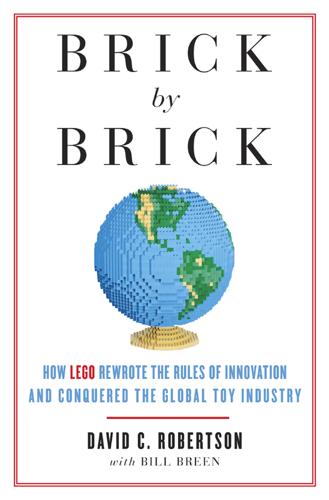
Brick by Brick: How LEGO Rewrote the Rules of Innovation and Conquered the Global Toy Industry
by
David Robertson
and
Bill Breen
Published 24 Jun 2013
So it was that LEGO, in its initial August 2009 release, decided to come out with not one but ten different board games. It was all part of a bid to swiftly stake out an entirely new market, and it had the desired effect. Soon thereafter, LEGO Games was rapidly ascending the year’s list of the hottest Christmas toys. Largely through the efforts of one driven games designer and a handful of wingmen, the company had an “obviously LEGO, but never seen before” hit on its hands. On the surface, LEGO Games and that other ambitious creation—LEGO Universe—shared several similarities. Both were rooted in the LEGO DNA of the brick and the System of Play. Both sought to deliver new types of LEGO play experiences.

The Impulse Society: America in the Age of Instant Gratification
by
Paul Roberts
Published 1 Sep 2014
Or as Hilarie Cash, reSTART cofounder and an expert in online addiction, told me, “We end up being controlled by our impulses.” Which, for gaming addicts, means being even more susceptible to the complex charms of the online world. Gaming companies want to keep players playing as long as possible—the more you play, the more likely you’ll upgrade to the next version. To this end, game designers have created sophisticated data feedback systems that tie players to an upgrade treadmill. As players move through these virtual worlds, the data they generate is captured and used to make subsequent game iterations even more “immersive.” (World of Warcraft, for instance, releases periodic upgrades, or “patches,” with new weapons and skills that players must have to retain their godlike status.)

How Music Got Free: The End of an Industry, the Turn of the Century, and the Patient Zero of Piracy
by
Stephen Witt
Published 15 Jun 2015
In April 1999 the company relocated Henri Linde to California during the height of the dot-com boom, and opened a dedicated office for him with a staff of six. Business was merely brisk at first, but turned electric after the favorable result in RIAA vs. Diamond. Big Gadget finally moved, with Japanese money displacing Korean. Any device that could play an mp3 had to pay. Linde signed deals with dot-coms, software vendors, chip manufacturers, game designers, car stereo vendors, and hundreds of start-up ventures. In the first four years he’d worked as licensing manager he’d signed less than twenty deals. In the next four he signed more than 600. The only holdout was Sony. Inside the company a civil war had broken out between its consumer electronics arm and the music labels it owned.

Ten Billion Tomorrows: How Science Fiction Technology Became Reality and Shapes the Future
by
Brian Clegg
Published 8 Dec 2015
What the teenager wanted to do was create a world on the computer screen that would fully immerse the player, making them feel as if they were part of the action. At the time, computer graphics, particularly on the then relatively new IBM PC, were dire. Yet the first major game produced by id Software, the company formed by Carmack and game designer John Romero, Wolfenstein 3D, managed to do remarkable things on a PC. Admittedly the game was visually blocky and limited in its use of color, but by making use of every software trick in the book, and many that weren’t until he wrote them, Carmack managed to make the journey through the castle taken by the player, who saw a first-person view, smoother and more convincing than anything that had ever come before.
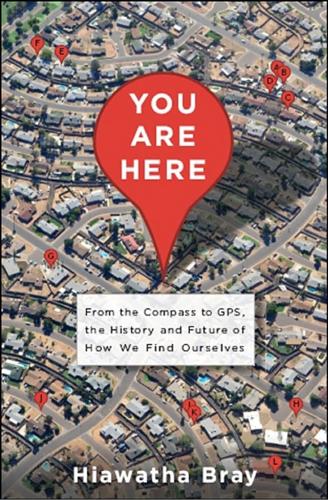
You Are Here: From the Compass to GPS, the History and Future of How We Find Ourselves
by
Hiawatha Bray
Published 31 Mar 2014
We are even tracked by the third-party software apps we install on our phones. A research report from February 2013 found that half of the fifty most popular apps for iPhones and Android smartphones automatically transmit information about the user’s location.4 Fire up the popular game Angry Birds, and game designer Rovio will use the phone’s GPS and Wi-Fi to determine where you are. It is useful information for pinging you with targeted advertisements. Yet in 2012 researchers at the Massachusetts Institute of Technology found that when a user stops playing Angry Birds, it keeps right on running in the background, steadily broadcasting the player’s whereabouts.5 Add to this the detailed personal information available from information brokers like Acxiom, which has files on about 190 million Americans and a total of a half-billion people worldwide.
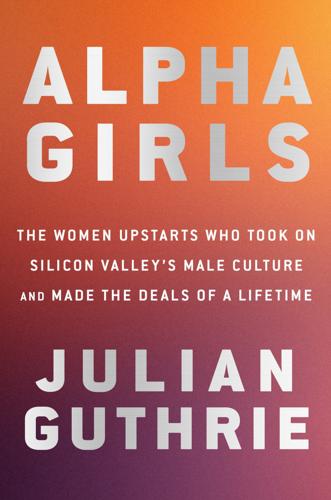
Alpha Girls: The Women Upstarts Who Took on Silicon Valley's Male Culture and Made the Deals of a Lifetime
by
Julian Guthrie
Published 15 Nov 2019
“I am absolutely going to see the movie,” Sonja told him, as soon as Jon returned from sailing overseas. Sonja had actually met Candace Bushnell, the author of the book Sex and the City, in New York in the summer of 2001. Sonja had been with her fiancé at the time, and Candace was with her boyfriend, a game designer for the Lara Croft Tomb Raider series. The foursome went to a small Italian restaurant where waiters greeted them by name. Sonja remembered Candace’s outfit: a suede triangle halter top paired with preppy East Coast pants. Candace had taken to Sonja, as much as Sonja did to her, telling her she knew too few women who made their own money.

Microserfs
by
Douglas Coupland
Published 14 Feb 1995
There must be all of these people everywhere on earth right now, waiting for a miracle, waiting to be pulled out of themselves, eager for just the smallest sign that there is something finer or larger or miraculous about our existence than we had supposed. 26) "The replayability problem" (Engineering a desire for repetition). 27) I think "van art" and Yes album covers were the biggest influence in game design. 28) I wonder if I've missed the boat on CD-ROM interactive - if I'm too old. The big companies are zeroing in on the 10 year olds. I think you only ever truly feel comfortable with the level of digitization that was normal for you from the age of five to fifteen. I mean sure, I can make new games workable, but it won't be a kick the way Tetris was.
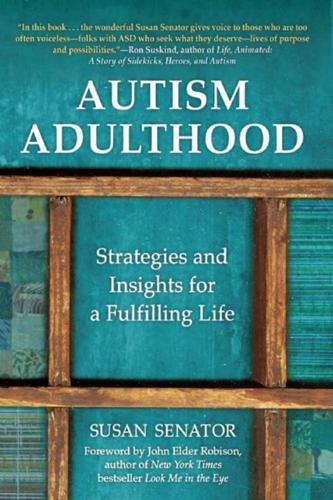
Autism Adulthood: Strategies and Insights for a Fulfilling Life
by
Susan Senator
Published 4 Apr 2016
“I don’t know what the future is for my son,” Susan said, but as she told her daughter and her husband, “So what? He makes weird noises, but at least he’s not drinking, or on the internet with pornography. He cooks, does his own laundry, and takes care of his dog.” Paul does have job responsibilities. He works assembling games for the family’s company, Cactus Game Design, which uses popular secular games like Apples to Apples, Scrabble, and Cranium, and creates Bible editions. “We have a game called Redemption; the appeal is not only sophisticated game play, but collecting. Paul assembles these card packs. Watching him is like witnessing a well-oiled machine,” Susan said.
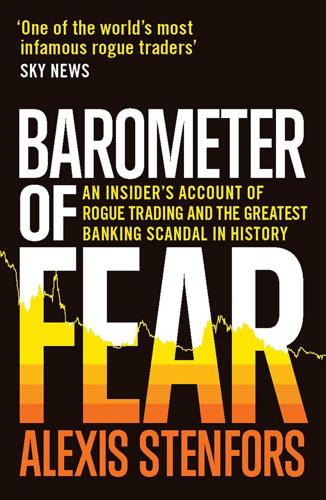
Barometer of Fear: An Insider's Account of Rogue Trading and the Greatest Banking Scandal in History
by
Alexis Stenfors
Published 14 May 2017
It was nice to leave dark and icy Stockholm behind for two weeks to join 15 or 20, mainly London-based, soon-to-be traders and sales people in the leafy English countryside. HSBC was very good at FX, probably in the top three in the world at the time, so my expectations of the course were high. We got to play a computer-based trading simulation game, designed to replicate a realistic situation in a dealing room. It was fun, and the teacher was both knowledgeable and engaging. I remember how we were repeatedly told to ‘galvanise our HPs’, as if our calculators (manufactured by Hewlett-Packard) were like musical instruments needing to be restrung before a concert.
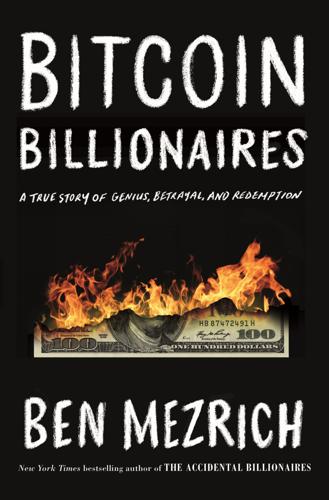
Bitcoin Billionaires: A True Story of Genius, Betrayal, and Redemption
by
Ben Mezrich
Published 20 May 2019
If he was a Japanese man, he wrote in idiomatic, flawless English that alternated between American spellings and British spellings. The time stamps of his writings revealed no particular time zone. Investigative journalists had named at least fifteen people as possible alter egos to the mysterious inventor, including Elon Musk, the Tesla billionaire, and Hal Finney, a game designer and cryptographer who had received the first Bitcoin transaction from Satoshi in 2009; but none of these leads had led anywhere. “To me,” Voorhees said, “the mystery surrounding Satoshi is a feature of Bitcoin, not a bug. The beauty of Bitcoin is that it is not built around Satoshi, it’s not built around anyone.
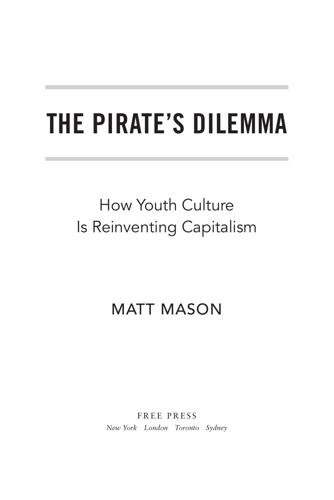
The Pirate's Dilemma: How Youth Culture Is Reinventing Capitalism
by
Matt Mason
The legal music download market grew by 187 percent in 2005, and part of the reason why illegal downloading became so prevalent, as we shall see, was because the music industry failed to respond to this new technology and offer legal alternatives quickly enough. More than one million games of the Half Life mod Counter-Strike are played each day online, but you can play it only if you have a legal copy of the original Half Life game. This system is policed by modders and players alike, who respect the rights of the game's designers to earn money from their original creation. Producers and even politicians are slowly changing their attitudes, too. In the United Kingdom, the BBC has introduced the Creative Archive, a copyright-free library of video and audio available for anyone to use for noncommercial purposes. In 2006 the United Kingdom's (then) chancellor of the exchequer, Gordon Brown, recognizing the value of the remix as a tool of innovation, proposed new U.K. copyright laws that would give artists more creative freedom to remix the material of others while protecting everybody's rights as well.
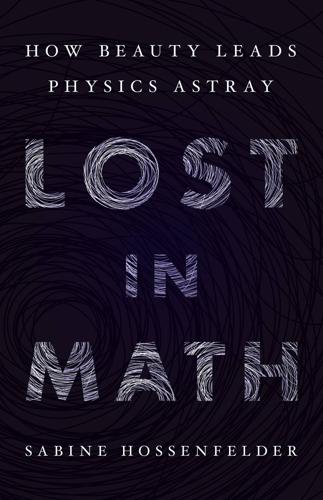
Lost in Math: How Beauty Leads Physics Astray
by
Sabine Hossenfelder
Published 11 Jun 2018
But then after some time, two or three months, they get in step and they get this intuitive understanding of quantum mechanics, and it’s actually quite interesting to observe. It’s like learning to ride a bike.”23 And intuition comes with exposure. You can get exposure to quantum mechanics—entirely without equations—in the video game Quantum Moves.24 In this game, designed by physicists at Aarhus University in Denmark, players earn points when they find efficient solutions for quantum problems, such as moving atoms from one potential dip to another. The simulated atoms obey the laws of quantum mechanics. They appear not like little balls but like a weird fluid that is subject to the uncertainty principle and can tunnel from one place to another.
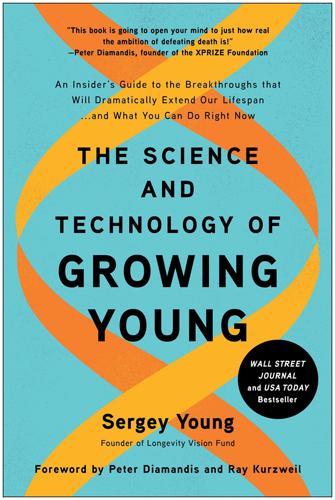
The Science and Technology of Growing Young: An Insider's Guide to the Breakthroughs That Will Dramatically Extend Our Lifespan . . . And What You Can Do Right Now
by
Sergey Young
Published 23 Aug 2021
Fernandez and his team implanted a tiny bed of electrode spikes into the woman’s brain that conducted electrical signals like the Second Sight solution. With the implant, Bernardéta Gomez can now recognize objects like ceiling lights, doorways, printed shapes and letters, and the silhouettes of people. She can even play a simple video game designed to test the implant’s effect.23 Then there are the advances being made for hearing. If you have never watched a video of someone having his or her modern cochlear implant turned on for the first time, you might want to put down this book and treat yourself. It is truly heartwarming. Take Sarah Churman, for instance, whose cochlear implant initiation video on YouTube has been viewed nearly 32 million times.24 At age twenty-nine, Sarah had a productive life, full of rich experiences, a successful career, a loving marriage, and two children.
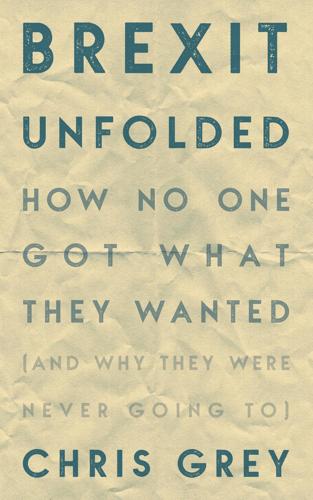
Brexit Unfolded: How No One Got What They Want (And Why They Were Never Going To)
by
Chris Grey
Published 22 Jun 2021
It could hardly be said that this had been settled by the referendum, precisely because of all the questions which had since emerged about what, in concrete terms, it meant. Equally, it was by this time becoming clearer that the decisions about this would affect every single area of daily life, from air travel through to nuclear waste disposal, and every industry from fishing to computer game design. So there were huge new, and urgent, questions for the country. What exactly did the government’s white paper Brexit plan, endorsed in the Tory manifesto, mean? Was ‘no deal better than a bad deal’? How would a ‘bad deal’ be defined? What did a ‘no deal’ scenario look like? Perhaps most glaring of all, where was the discussion of the costs of the Brexit plan?

Life After Google: The Fall of Big Data and the Rise of the Blockchain Economy
by
George Gilder
Published 16 Jul 2018
Rendering is estimated to be a nearly two-billion-dollar market, growing at 22 percent per year. It is dominated by entertainment companies with their own supercomputers and by hundreds of “render farms” around the globe. Golem’s announcement that it was entering this arena aroused new interest in its token issue from tens of thousands of game designers, architects, and virtual reality experimenters. These users now find themselves in queues for what often are prolonged procedures on arrays of multi-core Intel Xeon processors. For Golem, however, rendering is just test-market “Brass,” low-hanging fruit to be harvested with free “Blender” software before the company moves on to its panoply of other supercomputer functions in its “Stone” and “Iron” versions.
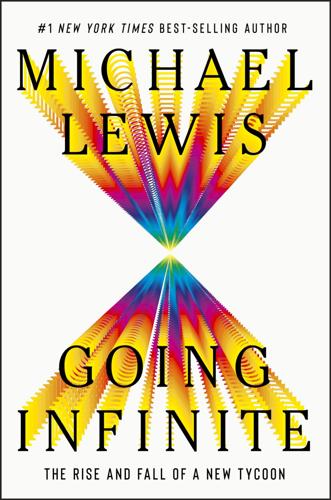
Going Infinite: The Rise and Fall of a New Tycoon
by
Michael Lewis
Published 2 Oct 2023
To his unrelenting alienation there was one exception: games. In sixth grade Sam heard about a game called Magic: The Gathering. For the next four years it was the only activity that consumed him faster than he could consume it. Magic had been created in the early 1990s by a young mathematician named Richard Garfield. It was the first of a new kind of game, designed, perhaps, for a new kind of person. Garfield had started with an odd question: Could a strategic game be designed that allowed the players to come to it with different equipment? He wasn’t sure if it was even possible. You couldn’t allow poker players to show up with their own privately curated decks, or chess players to come equipped with whichever pieces they wanted to.
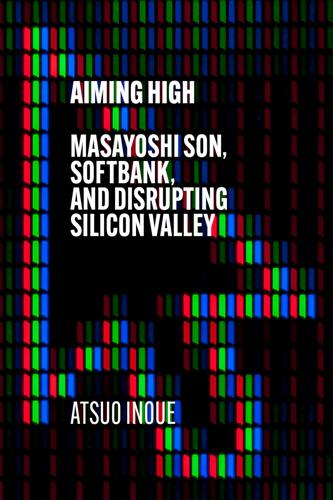
Aiming High: Masayoshi Son, SoftBank, and Disrupting Silicon Valley
by
Atsuo Inoue
Published 18 Nov 2021
One day the smallest titbit of news caught Son’s eye – it had to do with Japanese arcade games. During his multiple trips to Japan and back, Son had caught wind of a boom occurring in this market in Japan, with Space Invaders becoming incredibly popular between the months of March and August 1979. Space Invaders had been developed and released by Taito, a Japanese game designer, the previous year and marked a sea change, being drastically different to the video games that had come before it. Like a science-fiction book come to life, the game featured an alien army swarming the player’s base on earth. Players would control their own gun battery, manoeuvring it to shoot down the space invaders.

Code Dependent: Living in the Shadow of AI
by
Madhumita Murgia
Published 20 Mar 2024
Instead, they are selling us back our dreams repackaged as the products of machines.’15 The promise made by generative AI builders is that the technology will open up a new era of human experience, provide access to cheap intelligence and mass creativity. It will supposedly make all of us more productive, more efficient, more intelligent, better, brighter, more . . . But the reality is that it’s already just good enough to replace humans who earn a living from these vocations today, everyone from illustrators, copywriters and video game designers to voice artists and animators. In China, video game artists have started to see their work transformed by AI. Amber Yu, a freelance illustrator, told the website Rest of the World that the video game posters she designed earned her between $400 and $1,000 a pop.16 She’d spend weeks perfecting each one, a job requiring artistry and digital skills.

Extremely Hardcore: Inside Elon Musk's Twitter
by
Zoë Schiffer
Published 13 Feb 2024
In January, he had begun buying up Twitter shares, quietly accumulating a massive stake in the company. * * * — Ever since he was a child, Musk had harbored a belief that he was destined to have a great impact on the world. While he’d originally wanted to design video games, he ultimately chose to become an entrepreneur because game design didn’t seem grand enough. “I really like computer games, but then if I made really great computer games, how much effect would that have on the world,” he said. “It wouldn’t have a big effect . . . I couldn’t bring myself to do that as a career.” “He started to get a sense that if he didn’t exist, the world would die,” says Kara Swisher.

The Limits to Growth: The 30-Year Update
by
Donella H. Meadows
,
Jørgen Randers
and
Dennis L. Meadows
Published 15 Apr 2004
It is a web of connections among equals, held together not by force, obligation, material incentive, or social contract, but by shared values and the understanding that some tasks can be accomplished together that could never be accomplished separately. We know of networks of farmers who share organic pest control methods. There are networks of environmental journalists, "green" architects, computer modelers, game designers, land trusts, consumer cooperatives. There are thousands and thousands of networks that developed as people with common purposes found each other. Some networks become so busy and essential that they evolve into formal organizations with offices and budgets, but most come and go as needed. The advent of the World Wide Web certainly has facilitated and accelerated the formation and maintenance of networks.
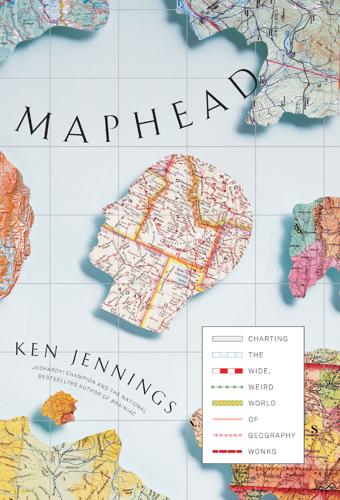
Maphead: Charting the Wide, Weird World of Geography Wonks
by
Ken Jennings
Published 19 Sep 2011
Burgess was a humorist best remembered today for coining the word “blurb” and writing the poem “The Purple Cow,” but he was also an inveterate map geek. “There is nothing so difficult as to create, out of hand, an interesting coast line. Try and invent an irregular shore that shall be convincing, and you will see how much more cleverly Nature works than you.” A video-game designer who moonlights as a fantasy mapmaker, Isaac probably has as much experience testing Burgess’s dictum as anyone in the world. A century later, coastlines are still hard. “You wind up doing this seizure thing with your hand, and it doesn’t work sometimes,” he tells me. Burgess’s solution was to spill water on his paper, pound it with his fist, and trace the resulting blotch.

Early Retirement Extreme
by
Jacob Lund Fisker
Published 30 Sep 2010
Harding, Operations Management [40] David Holmgren, Permaculture: Principles and Pathways Beyond Sustainability [41] Richard Brewer, Principles of ecology [42] Jacques Ellul, Propaganda [43] William Catton, Overshoot [44] Matthew B. Crawford, Shop class as soulcraft [45] Herman Hesse, Siddhartha [46] David Wann, Simple Prosperity [47] Alain de Botton, Status Anxiety [48] Jesse Schell, The Art of Game Design [49] Amy Dacyczyn, The Complete Tightwad Gazette [50] Ann Thorpe, The Designer's Atlas of Sustainability [51] Peter M. Senge, The Fifth Discipline [52] Tom Hodgkinson, The Freedom Manifesto [53] Michael Maccoby, The Gamesman [54] Dick Stoken, The Great Cycle [55] Peter Lawrence, The Happy Minimalist [56] Lin Yu Tan, The importance of living [57] Thomas Homer-Dixon, The Ingenuity Gap [58] Elizabeth Gilbert, The Last American Man [59] Scott Nearing, The Making of a Radical [60] Margarat Lobenstine, The Renaissance Soul [61] James Dale Davidson & Lord William Rees-Mogg, The sovereign individual [62] G.
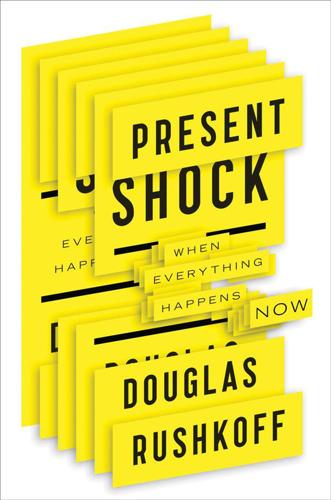
Present Shock: When Everything Happens Now
by
Douglas Rushkoff
Published 21 Mar 2013
No matter how well they write their programs, and no matter how powerful the computers they use, the most important factor in bringing algorithms up to speed is a better physical location on the network. The physical distance of a brokerage house’s computers to the computers executing the trades makes a difference in how fast the algorithm can read and respond to market activity. As former game designer Kevin Slavin has pointed out in his talks and articles,29 while we may think of the Internet as a distributed and nonlocal phenomenon, you can be closer or farther from it depending on how much cable there is between you and its biggest nodes. In New York, this mother node is fittingly located at the old Western Union Building on 60 Hudson Street.

The English
by
Jeremy Paxman
Published 29 Jan 2013
It is, like the rest of the world, dominated by brand names. The English wear baseball caps and jeans, eat versions of American, Asian or Italian food, drive cars made anywhere on the globe (even the grandest British car-maker, Rolls-Royce, is now owned by Germans), dance to international beats and play computer games designed in Seattle or Tokyo. In this new world neither geography nor history, religion nor politics exerts the influence it once did. And as external fashions have changed in the last half-century, so too have the internal certainties. The Second World War, the time of Brief Encounter and In Which We Serve, was the last extended period when we could say with any confidence that the impression of England matched the reality.

Messy: The Power of Disorder to Transform Our Lives
by
Tim Harford
Published 3 Oct 2016
That means a compromise between bonding and bridging—a willingness to allow a degree of messiness into a tidy team. This chapter is all about why getting the best of both approaches can prove very challenging indeed. • • • If we’re looking for a petri dish to examine the nature of teamwork in the twenty-first century, a computer game isn’t a bad candidate. Game design requires a marriage of skills—visual, audio, and narrative artists work with skilled software engineers alongside commercial functions such as finance and marketing. The technical possibilities are always changing, and for many games it is important to take full advantage of the very latest technology.

Only Humans Need Apply: Winners and Losers in the Age of Smart Machines
by
Thomas H. Davenport
and
Julia Kirby
Published 23 May 2016
British game developer Ed Key recently mused along these lines about how artificial intelligence might be useful to him. Bemoaning the fact that he quit a corporate job in order to work full-time on his game Proteus, only to find that “80 percent of my time was spent doing business stuff” that had nothing to do with game design, he said: “Things like creating trailers and contacting the press, tweeting the screenshots—maybe an AI agent could be helpful for that. Self-promotion is something you might delegate to a robot who is your biggest fan.”23 But in some cases, augmentation actually will amplify some high-value, noncognitive strength—and we might say, help the human bring more humanity to the work.
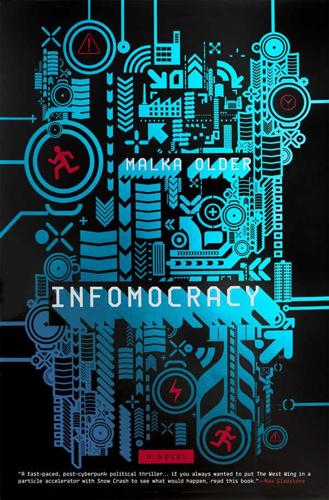
Infomocracy: A Novel
by
Malka Older
Published 7 Jun 2016
He remembers the centenal in Jakarta where he watched the first debate, Free2B. He never did look up all their outposts. “Or maybe I’ll become a … a bartender.” Mishima laughs, a real laugh this time. Bartenders don’t exist anymore outside of films and extremely pretentious bars. Ken laughs too. “Or a game designer, or a crow mechanic.” “You really think you could live like that?” Mishima is trying to imagine what it would take to slow her pulse down, how it would feel. She imagines the problematic mountain range of her psyche smoothing into a gentle, dull plain, the colors overlapping into blah. Even if she survived like that, even if she liked it, she can’t imagine it would last.
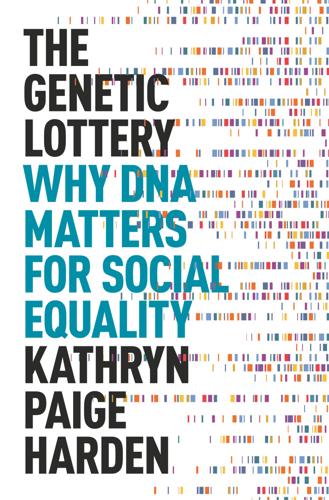
The Genetic Lottery: Why DNA Matters for Social Equality
by
Kathryn Paige Harden
Published 20 Sep 2021
Americans, on the whole, are more inequality-accepting than are Norwegians, and political conservatives are more inequality-accepting than political liberals. But across the board, people are more willing to redistribute to equalize outcomes due to luck than redistribute inequalities stemming from factors considered under a person’s control. In economic games designed to measure people’s distributional preferences, and in surveys about fair and unfair inequalities, the types of luck that produce unfair inequalities are outside events that happen to a person and that constrain the person’s overall control over their social and economic outcomes. The experimenter set a low price on your work.
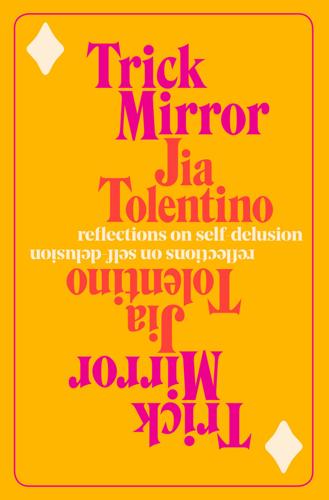
Trick Mirror: Reflections on Self-Delusion
by
Jia Tolentino
Published 5 Aug 2019
(It went viral, as intended, but not in the way TPUSA wanted—the protest was uniformly roasted, with one Twitter user slapping the logo of the porn site Brazzers on a photo of the diaper boy, and the Kent State TPUSA campus coordinator resigned.) It has also been infinitely more consequential, beginning in 2014, with a campaign that became a template for right-wing internet-political action, when a large group of young misogynists came together in the event now known as Gamergate. The issue at hand was, ostensibly, a female game designer perceived to be sleeping with a journalist for favorable coverage. She, along with a set of feminist game critics and writers, received an onslaught of rape threats, death threats, and other forms of harassment, all concealed under the banner of free speech and “ethics in games journalism.” The Gamergaters—estimated by Deadspin to number around ten thousand people—would mostly deny this harassment, either parroting in bad faith or fooling themselves into believing the argument that Gamergate was actually about noble ideals.
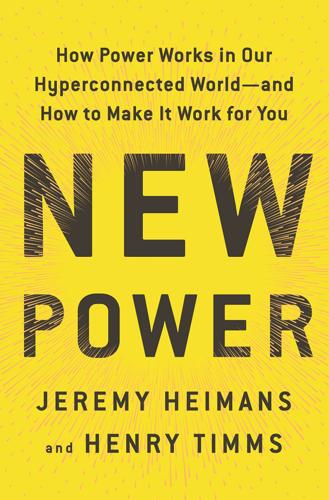
New Power: How Power Works in Our Hyperconnected World--And How to Make It Work for You
by
Jeremy Heimans
and
Henry Timms
Published 2 Apr 2018
Christakis, “A New, More Rigorous Study Confirms: The More You Use Facebook, the Worse You Feel,” Harvard Business Review, April 10, 2017. Chapter 7: The Participation Premium “traditional terrestrial options”: Chris Roberts, “Letter from the Chairman,” Roberts Space Industries, November 27, 2014. www.robertsspaceindustries.com. The creator of the classic: Wolff Bachner, “Chris Roberts Returns to Game Design: Unveils ‘Star Citizen’ at GDC,” Inquisitr, October 11, 2012. “a living, breathing science fiction”: “About the Game,” July 2017. www.robertsspaceindustries.com. In an hour-long presentation: Cloud Imperium, “Legendary Designer Chris Roberts Making Re-entry into PC Gaming Stratosphere with Star Citizen from Cloud Imperium,” Business Wire, October 10, 2012.

Test Gods: Virgin Galactic and the Making of a Modern Astronaut
by
Nicholas Schmidle
Published 3 May 2021
For those with means and the right risk appetite there was nothing else like it; a Himalayan expedition seemed almost pedestrian by comparison. Moreover, the Russians proved you could charge whatever you wanted. On top of the $12 million, they billed the Japanese TV station $100,000 per hour for the assistance their cosmonauts gave the reporter.These costs proved too much for some: Tito inherited his ticket from an American video game designer who lost his shirt when the dot-com bubble burst; a member of the boy band ’N Sync forfeited his reservation when he couldn’t come up with a deposit. NASA found this all repulsive. When Tito flew to Houston to train with his two Russian companions, NASA officials barred him from entering the facility and later threatened to bill him for disrupting space station operations—though, truthfully, Tito was less disruptive and more meditative, gazing during his trip at the spectacular views out the window and listening to opera on his headphones.

MegaThreats: Ten Dangerous Trends That Imperil Our Future, and How to Survive Them
by
Nouriel Roubini
Published 17 Oct 2022
In early 2022, the Fed and other central banks finally signaled that rising inflation required much tighter monetary policy. That yanked the punch bowl. Asset prices sank in response to interest rate hikes aimed at taming inflation. When monetary restraints fanned fears of a recession, prices for risk assets slid further. Macroeconomists are not game designers, although it might look that way. We build models on a grand scale, using imaginary concepts that aggregate all the factors that drive production and consumption, also known as supply and demand. We nudge variables like prices, taxes, wages, and exchange rates to see what happens. We seek combinations that promote growth while dodging calamities that arise from flawed judgment and bad luck.
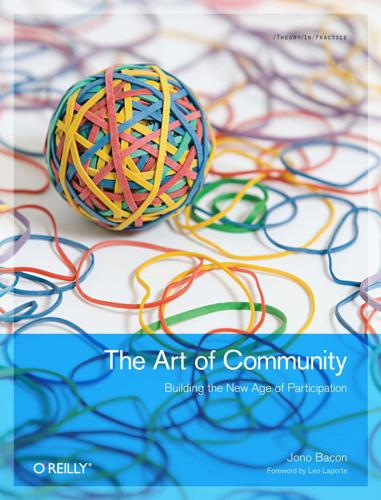
The Art of Community: Building the New Age of Participation
by
Jono Bacon
Published 1 Aug 2009
Of course, there were attempts at alternatives: light guns, dance mats, plastic guitars and drums. Most still had the assumed knowledge that the player controlled the action by pressing buttons. These alternative approaches were never a core part of the systems. They were novelty add-ons that often had limited appeal. The Wii changed all of that. Shigeru Miyamoto, a renowned video game designer and cocreator of many games, including Super Mario Brothers, Donkey Kong, and The Legend of Zelda, sat down with other designers and questioned whether they should be limited to the existing norms of the game interface. The result was one of the most significant developments in video game history: the Wii Remote, which allowed gamers to control the action by moving the unit itself.
…
They will want to share it with people who might not be able to see it if it just exists inside a game world. Getting these creations out of the game and onto the Web allows people to share far more easily, in places where they like to hang out with their non-LittleBigPlanet friends. For us, LBP.me was our solution, and we very much consider it an extended part of the game design itself. We’re always watching and learning, and iterating on our designs as the community evolves, so we can build a better and more enjoyable experience, and everything we have learned will be applied to our future projects. Personally, I’ve learned that a simple game about playing, creating, and sharing can have some wonderful effects on people’s lives, and that I’m very lucky to have worked with a community of lovely, creative people who seem to be able to blow my mind on an almost daily basis!

Halting State
by
Charles Stross
Published 9 Jul 2011
“Content is, well, the map of the dungeon, location of treasure, where the monsters live, what the wallpaper looks like. Any game is full of the stuff, and it’s expensive to do by hand—you need tile illustrators, narrators, musicians, programmers, a whole bunch of skills. So over the past couple of decades the industry’s put a lot of effort into procedural game design—AI tools that can design a virtual-reality environment on the fly for players to explore. It’s not just multiplayer games like Avalon Four; there’s been work on ARG—artificial reality games—that can take a set of starting hints and design a conspiracy to drop on top of the players. You know, generate scripts for phone calls, order up custom gadgets to be planted at certain locations, hire actors…?”
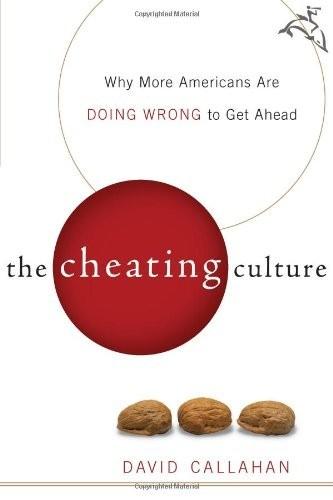
The Cheating Culture: Why More Americans Are Doing Wrong to Get Ahead
by
David Callahan
Published 1 Jan 2004
For young people, though, the biggest social-health story of the 1990s was the onslaught of a virulent new strain of consumerism. The disease begins earlier and earlier with children these days, and it just gets worse. Parents complain endlessly about pressures from their kids to keep up with the Johnnies at the locker next door—with expensive video games, designer-label clothing, digital music players (to play pirated music), home computers, and cell phones. "Over the past 10 years, more people have come to think of themselves as having their identities shaped by their consumer goods," commented Alissa Quart, author of Branded, a book about consumerism among teenagers.

Hit Makers: The Science of Popularity in an Age of Distraction
by
Derek Thompson
Published 7 Feb 2017
It means that “number one bestseller” is a universally alluring descriptor. It conflates “most read article” with most interesting article. It means you’re drawn to videos with more YouTube plays or Facebook likes. The truism even encourages some publishers and authors to artificially inflate book sales to get them on the bestseller lists or pushes game designers to fictitiously inflate download counts to appear in demand. Manipulating popularity can work. But consumers are not infinitely clueless. There is a limit to how much you can trick people into liking something. First, as song-testing sites from the first chapter show, you can put lipstick on a dead pig, but that’s not the same as creating a market for it.

Natural Language Annotation for Machine Learning
by
James Pustejovsky
and
Amber Stubbs
Published 14 Oct 2012
As with any project, it will take a few tries to get a HIT design that gets you the annotation you need in the degree of detail you want. Games with a Purpose (GWAP) Fortunately, other ways of crowdsourcing data also exist. One widely talked about method is that of using “games with a purpose”—essentially, computer games designed to make an annotation task fun so that people will do it voluntarily. A few successful annotation games are: Phrase Detective Purpose: Collect information about coreference relations in text. This game asks players to examine a short piece of text, with a section of the text (a word or phrase) highlighted in orange.

The Song Machine: Inside the Hit Factory
by
John Seabrook
Published 4 Oct 2015
Baby One More Time.” 8 | “I Want It That Way” EVEN BEFORE HIS health began to decline, Denniz PoP had been getting bored. By 1997, Cheironite Per Magnusson says, “I think Denniz was tired of the pop music. So he started working on his own computer games. If he had lived, I think he would have become a game designer or something like that.” He adds, “He’d sit there, and smoke, and turn a knob—it seemed like nothing was going on.” Denniz did put some work into an epic he called The Cheiron Saga, a sort of Wagnerian disco opera, which he never finished. Denniz hadn’t been feeling well for some time. Kristian Lundin recalls, “In 1997, I noticed he was having trouble swallowing.

Pound Foolish: Exposing the Dark Side of the Personal Finance Industry
by
Helaine Olen
Published 27 Dec 2012
Struthers did not mention that Bank of America executives might also have benefitted from a class on financial literacy before they decided to buy Countrywide Financial Corp. in 2008 without realizing the mortgage origination firm was in such desperate financial trouble that it could have caused BofA’s collapse. Needless to say, even the most unironic efforts rarely involve any “education” that might threaten the financial model of the corporate sponsor. Take Visa’s Financial Football, a computer game designed to teach high schoolers and adults the intricacies of personal finance. According to Visa spokesman Jason Alderman, the curriculum “emphasize(s) that credit is a terrific tool…you need to stop and think, ‘How am I paying for this item today? Does it make sense? What is the best payment choice to make?’”
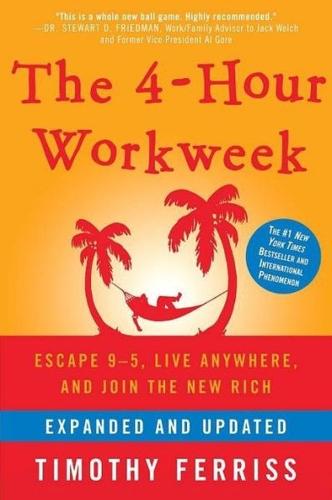
The 4-Hour Workweek: Escape 9-5, Live Anywhere, and Join the New Rich
by
Timothy Ferriss
Published 1 Jan 2007
Prosoundeffects.com, launched in January of 2005 after one week of sales testing on eBay, was designed to do one thing: give Doug lots of cash with minimal time investment. This brings us back to his business inbox in 2006. There are 10 orders for sound libraries, CDs that film producers, musicians, video game designers, and other audio professionals use to add hard-to-find sounds—whether the purr of a lemur or an exotic instrument—to their own creations. These are Doug’s products, but he doesn’t own them, as that would require physical inventory and upfront cash. His business model is more elegant than that.

Priceless: The Myth of Fair Value (And How to Take Advantage of It)
by
William Poundstone
Published 1 Jan 2010
To be “rational” would be to deny what he felt inside. Like a perverse Galileo, he knew his valuations still moved. Eleven The Best Odds in Vegas “Roulette Bet May Decide Man’s Fate,” ran a curious headline in the March 2, 1969, Las Vegas Review-Journal. A photo showed the avuncular Ward Edwards playing a game “designed by scientists to probe what makes man tick.” A 25-cent bet on a Las Vegas roulette table could be a factor in the greatest decision ever to confront mankind. That would be the unimaginably catastrophic decision to plunge the world into nuclear war. Some place, at some time, as long as a human being is able to poise his finger over a nuclear button, that is a possibility.
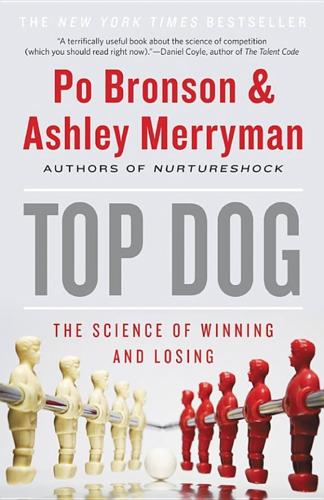
Top Dog: The Science of Winning and Losing
by
Po Bronson
and
Ashley Merryman
Published 19 Feb 2013
Updegraff, “Biobehavioral Responses to Stress in Females: Tend-and-Befriend, Not Fight-or-Flight,” Psychological Review, vol. 107(3), pp. 411–429 (2000) Testosterone Responds When You Care about the Outcome / Testosterone in Home Field Advantage: Bateman, Chris, & Lennart E. Nacke, “The Neurobiology of Play,” Paper Presentation at Futureplay ’10 Proceedings of the International Academic Conference on the Future of Game Design and Technology, New York (2010) Carré, Justin, Correspondence with Authors (2012) Carré, Justin, Interviews with Authors (2012) Carré, Justin M., “No Place Like Home: Testosterone Responses to Victory Depend on Game Location,” American Journal of Human Biology, vol. 21(3), pp. 392–394 (2009) Carré, Justin, Cameron Muir, Joey Belanger, & Susan K.

Zucked: Waking Up to the Facebook Catastrophe
by
Roger McNamee
Published 1 Jan 2019
A few industry people and journalists I encountered appeared to be enjoying a moment of schadenfreude. Even after the first salvo of press appearances by Zuck and Sheryl, the pressure on Facebook continued to grow. On March 21, a Facebook user filed a proposed class action lawsuit in San Jose, California. That same day, this showed up on Twitter: On March 22, a game designer by the name of Ian Bogost published a piece in The Atlantic titled, “My Cow Game Extracted Your Facebook Data.” For a spell during 2010 and 2011, I was a virtual rancher of clickable cattle on Facebook. . . . Facebook’s IPO hadn’t yet taken place, and its service was still fun to use—although it was littered with requests and demands from social games, like FarmVille and Pet Society.

Brotopia: Breaking Up the Boys' Club of Silicon Valley
by
Emily Chang
Published 6 Feb 2018
And as Quinn and Sarkeesian found out, they don’t limit their attacks and threats to a single individual. They will threaten family members, including children. They will also instantly direct their bile toward anyone who comes to the target’s defense. That is where Brianna Wu enters the story. About two months after Gjoni’s post, Wu, an established game designer, spoke out against the #Gamergate campaign, sarcastically tweeting a meme suggesting that the trolls were saving everyone from an “apocalyptic future” where women might have slightly more influence in the industry. That’s when all hell broke loose. Shortly after responding to the trolls on Twitter, Wu was inundated with violent, disturbing threats on her life.
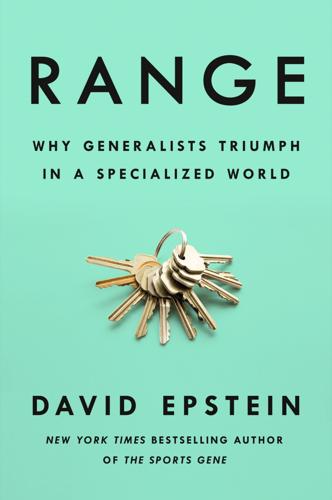
Range: Why Generalists Triumph in a Specialized World
by
David Epstein
Published 1 Mar 2019
Sculptor Rachel Whiteread achieved a feat akin to Geim’s Ig Nobel/Nobel double: she was the first woman ever to win the Turner Prize—a British award for the best artistic production of the year—and also the “Anti-Turner Prizer” for the worst British artist. And she won them in the same year. When I was researching the history of video games to write about Nintendo, I learned that a now-psychotherapist named Howard Scott Warshaw was once an Atari video game designer who used extremely constrained technology in a resourceful way to make the sci-fi game Yar’s Revenge. It was the bestselling original title for Atari’s 2600 console during the early-1980s when Atari became the fastest-growing company in U.S. history. The very same year, Warshaw designed the Atari adaptation of the film E.T.

Dark Territory: The Secret History of Cyber War
by
Fred Kaplan
Published 1 Mar 2016
His frustration had two layers: he wanted the military—all three of the main services, as well as the Pentagon’s civilian leadership—to know how good his guys were at hacking the adversaries’ networks; and he wanted them to know how wide open their own networks were to hacking by the same adversaries. As the new director of the NSA, he was determined to use the job to demonstrate just how good and how bad these things were. * * * Each year, the Pentagon’s Joint Staff held an exercise called Eligible Receiver—a simulation or war game designed to highlight some threat or opportunity on the horizon. One recent exercise had focused on the danger of biological weapons. Minihan wanted the next one to test the vulnerability of the U.S. military’s networks to a cyber attack. The most dramatic way to do this, he proposed, was to launch a real attack on those networks by a team of SIGINT specialists at the NSA.

Don't Be Evil: How Big Tech Betrayed Its Founding Principles--And All of US
by
Rana Foroohar
Published 5 Nov 2019
So I split the cost with him, and arranged for him to pay off his half with allowance money, extra chores, and whatever he could make on his lemonade stand. Suffice it to say, FIFA Mobile has since been removed from his phone. “Persuasive” Technology As a mother, I was horrified by this whole incident. As a business journalist, I was fascinated. How, I wondered, was this game designed to be so utterly irresistible as to turn my normally well-behaved and well-adjusted son into a veritable FIFA Mobile junkie? Was it the unique talent of one brilliant game maker? Dumb luck? Or was it something else entirely? It was indeed something else—a very big and lucrative something.

Reset
by
Ronald J. Deibert
Published 14 Aug 2020
These mobile games work by a process known as “variable rate reinforcement,” in which rewards are sought after but delivered in an unpredictable fashion (e.g., through “loot boxes” containing unknown rewards).118 Variable rate reinforcement is most effective at shaping a steady increase in desirable behaviour, and it has effects on the release of dopamine, another hormone that plays an essential physiological role in reward-motivated behaviour.119 Game designers use variable rate reinforcement to entice players to continue playing the game repeatedly. The higher- and lower-level functions of social media outlined in the previous chapter are, as always, significant. While the player is moving through the game, slowly getting addicted, the game’s application learns more and more about the player’s device, interests, movements, and other factors.

Genius Makers: The Mavericks Who Brought A. I. To Google, Facebook, and the World
by
Cade Metz
Published 15 Mar 2021
SARA SABOUR, the Iran-born researcher who worked on “capsule networks” alongside Geoff Hinton at the Google lab in Toronto. ERIC SCHMIDT, chairman. AT DEEPMIND ALEX GRAVES, the Scottish researcher who built a system that could write in longhand. DEMIS HASSABIS, the British chess prodigy, game designer, and neuroscientist who founded DeepMind, a London AI start-up that would grow into the world’s most celebrated AI lab. KORAY KAVUKCUOGLU, the Turkish researcher who oversaw the lab’s software code. SHANE LEGG, the New Zealander who founded DeepMind alongside Demis Hassabis, intent on building machines that could do anything the brain could do—even as he worried about the dangers this could bring.

The Smart Wife: Why Siri, Alexa, and Other Smart Home Devices Need a Feminist Reboot
by
Yolande Strengers
and
Jenny Kennedy
Published 14 Apr 2020
Apple’s guidelines for Siri’s programming saw her responses explicitly rewritten to ensure she would say that she is in favor of “equality,” while never directly taking a stance on feminism. Explaining the decision, the guidelines state that “Siri should be guarded when dealing with potentially controversial content.”82 Feminism is indeed a controversial topic, especially when smart wives are involved. As professor of interactive computing and game designer Ian Bogost observes in his critique of Alexa’s feminist declaration, “It’s disingenuous to celebrate building ‘feminism’ into a product after giving a robot servant a woman’s voice.”83 Bergen makes a similar point about Siri, who she argues is “programmed to play the part of a neoliberal commodity.”
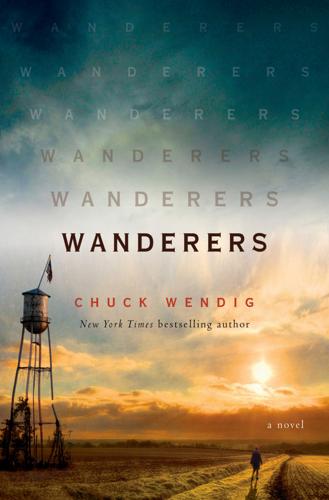
Wanderers: A Novel
by
Chuck Wendig
Published 1 Jul 2019
Suddenly, the conversation attracted others—shepherds were like that, sometimes. They were islands, until they weren’t. Any moment of connection, any hope to communicate with one another and commiserate on the craziness of everything was a moment nobody wanted to waste. Three other shepherds popped around them—Lucy Chao, plus Kenny Barnes (whose game-designer brother Keith was a walker) and Hayley Levine (who was here watching over a cousin, Jamie-Beth). Next came talking about the storm, about the CDC, about how they wanted the president to say more, and then it dissolved into the standard talk of what this even was or where it came from (terrorists, the government, monkeys, invasive plants, God, the Devil, what about that comet).
…
“There’re things you need to know.” * * * — THEY SAT ON a park bench. Others passed on the far side of the street, looking over, giving Shana sad, awkward smiles. Nessie waved to them like she knew them. Shana knew them, too—or knew their faces. There walked Keith Barnes, brother to Kenny, some kind of game designer, if she remembered right. And Jamie-Beth Levine, hair in braids just as it was on the road, except now her eyes were alive and she was eating ice cream out of a dripping cone. Some faces she knew but had no names for except nicknames: Birthmark Girl, Surfer Dude, Mister Manypockets because his pants had, well, shitloads of pockets.
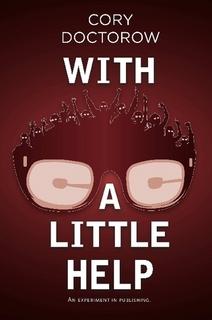
With a Little Help
by
Cory Efram Doctorow
,
Jonathan Coulton
and
Russell Galen
Published 7 Dec 2010
Bruce is one of my idols -- and he's now a friend and colleague, and my daughter's godfather, besides. We'd corresponded, sat on panels together, but this, this was levelling up. It was a hell of a workshop, and it was also where I met Raph Koster, now also a good friend (as well as an astute and inspiring game designer and theorist). 1440 I'd admired a play by Dewayne Hendricks to use Indian land in the USA to test out cognitive radio applications, on the basis that these sovereign territories were not under FCC jurisdiction. He'd found various tribal leaders who were excited by the idea. Cognitive radio may just be the most radical, game-changing technology on our immediate horizon -- if it works. 1441 In the meantime, I couldn't shake my memories of the brutal standoff at Oka, in Quebec.
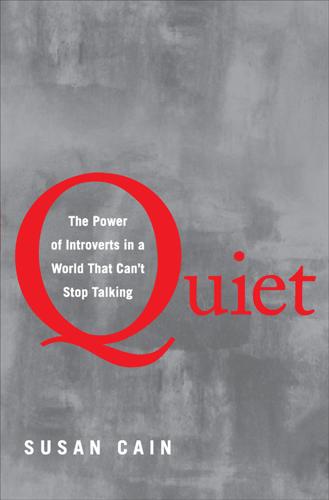
Quiet: The Power of Introverts in a World That Can't Stop Talking
by
Susan Cain
Published 24 Jan 2012
Scientists now know that the brain is incapable of paying attention to two things at the same time. What looks like multitasking is really switching back and forth between multiple tasks, which reduces productivity and increases mistakes by up to 50 percent. Many introverts seem to know these things instinctively, and resist being herded together. Backbone Entertainment, a video game design company in Oakland, California, initially used an open office plan but found that their game developers, many of whom were introverts, were unhappy. “It was one big warehouse space, with just tables, no walls, and everyone could see each other,” recalls Mike Mika, the former creative director. “We switched over to cubicles and were worried about it—you’d think in a creative environment that people would hate that.
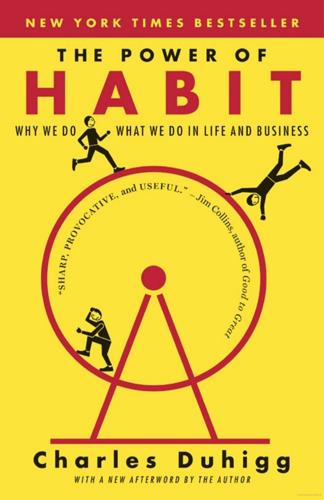
The Power of Habit: Why We Do What We Do in Life and Business
by
Charles Duhigg
Published 1 Jan 2011
Soon, everyone from Shirley Temple to Clark Gable was bragging about their “Pepsodent smile.”2.4 By 1930, Pepsodent was sold in China, South Africa, Brazil, Germany, and almost anywhere else Hopkins could buy ads.2.5 A decade after the first Pepsodent campaign, pollsters found that toothbrushing had become a ritual for more than half the American population.2.6 Hopkins had helped establish toothbrushing as a daily activity. The secret to his success, Hopkins would later boast, was that he had found a certain kind of cue and reward that fueled a particular habit. It’s an alchemy so powerful that even today the basic principles are still used video game designers, food companies, hospitals, and millions of salesmen around the world. Eugene Pauly taught us about the habit loop, but it was Claude Hopkins that showed how new habits can be cultivated and grown. So what, exactly, did Hopkins do? He created a craving. And that craving, it turns out, is what makes cues and rewards work.
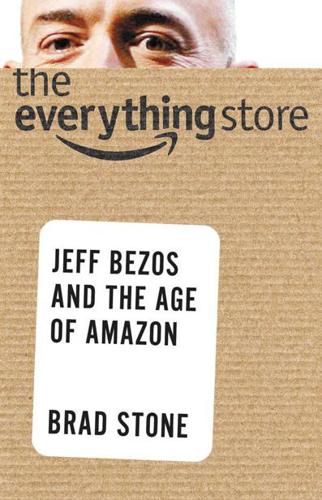
The Everything Store: Jeff Bezos and the Age of Amazon
by
Brad Stone
Published 14 Oct 2013
Collins briefed Amazon executives on his seminal management book before its publication. Companies must confront the brutal facts of their business, find out what they are uniquely good at, and master their flywheel, in which each part of the business reinforces and accelerates the other parts. Creation: Life and How to Make It, by Steve Grand (2001). A video-game designer argues that intelligent systems can be created from the bottom up if one devises a set of primitive building blocks. The book was influential in the creation of Amazon Web Services, or AWS, the service that popularized the notion of the cloud. The Innovator’s Dilemma: The Revolutionary Book That Will Change the Way You Do Business, by Clayton M.
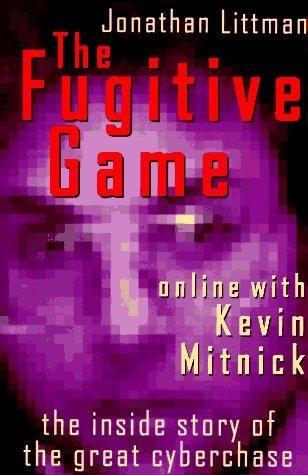
The Fugitive Game: Online With Kevin Mitnick
by
Jonathan Littman
Published 1 Jan 1996
The ancient general was principally known for advocating deception ("war is based upon deception") and avoiding hostilities: "It is best to win without fighting." ■ ■ ■ The fortunes of two hackers could not have taken more opposite turns. As Tsutomu Shimomura launched his new careers as pitchman, author, movie subject, and video game designer, Kevin Mitnick sat in a Southern county jail. Mitnick wrote to me nearly every week on yellow legal paper in longhand, bemoaning the lack of a word processor as he recounted the hardships of jail. He told me he had been attacked and robbed by two inmates and barely avoided fights with several others.
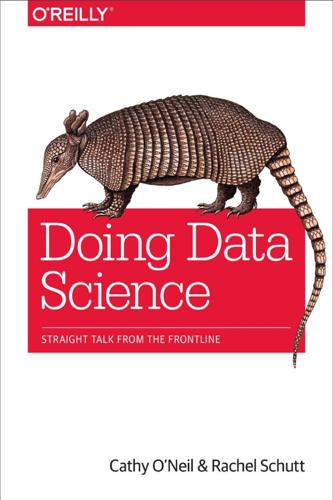
Doing Data Science: Straight Talk From the Frontline
by
Cathy O'Neil
and
Rachel Schutt
Published 8 Oct 2013
These would all be stored in timestamped event logs. You’d then need to process these logs down to a dataset with rows and columns, where each row was a user and each column was a feature. At this point, you shouldn’t be selective; you’re in the feature generation phase. So your data science team (game designers, software engineers, statisticians, and marketing folks) might sit down and brainstorm features. Here are some examples: Number of days the user visited in the first month Amount of time until second visit Number of points on day for (this would be 30 separate features) Total number of points in first month (sum of the other features) Did user fill out Chasing Dragons profile (binary 1 or 0) Age and gender of user Screen size of device Use your imagination and come up with as many features as possible.
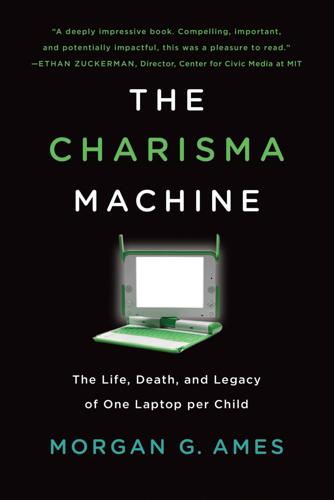
The Charisma Machine: The Life, Death, and Legacy of One Laptop Per Child
by
Morgan G. Ames
Published 19 Nov 2019
See Programme for International Student Assessment test Plan Ceibal, 240n27 laptop support staff in, dependence on, 102, 245n68 maintenance in, 90 Paraguay Educa compared with, 79–81, 107, 216 popularity of, 107, 246n78 success of, evaluating, 106–107 teacher training of, 244n60 XO laptops in, breakage and repair of, 89–90, 244n57 Play, 133 in OLPC core principles, 49–50 in Paraguay Educa, 110–111, 114, 119–125, 128–129, 131 XO laptop and, 54–59, 71–72, 114, 234n32, 234n34, 235n41 PlayStation, 112, 246n4 Pornography, 125–127, 135 Practice, networks of, 160 Privatized education, 187–189 Programme for International Student Assessment (PISA) test, 203 Programming Anglocentrism in, 157–161 Hour of Code, 187–188 Logo, 24–27, 167, 177, 225nn14–15 Lua, 77, 160, 163 Paraguay Educa and, 77, 139–140, 153, 157–159, 162–163, 239nn17–18 Proteus of machines, 29, 109, 111, 115 Python, 156–157, 236n59 Rebellion, 230n81 gender and, 28–29, 38–40, 230n73 in hacker ethic, 28–29, 37–41, 46 Reguetón (reggaeton), 119, 124, 143 Religion Catholicism, in Paraguay, 80, 196, 239n20, 241n39 charisma and, 8–9, 189–190 fetishism and, 223n42 technology and, 10, 223n44 Remotely Global (Ferguson), 161–162 Repair by children, 62–63 limits of, 115–118, 118f in Paraguay Educa, breakage and, 88–91, 111, 115–118, 118f, 214–215, 243n54, 247n10 in Plan Ceibal, breakage and, 89–90, 244n57 social class and, 17, 117–118 urban-rural divide in, 116–117, 118f Research methods, 177, 251n19 Resnick, Mitch, 27, 56, 186 Rodríguez Alcalá, Cecilia, 74 Rommes, Els, 71 Rosner, Daniela, 187 Rousseau, Jean-Jacques, 228n42 Routinization, 11–12 Rurality breakage and repair divide of, 116–117, 118f consumption and, 113 Guaraní language and, 157 in Paraguay Educa educational assessment, 206–207 Rwanda, 76, 238n12 Scaffolding, 160 connected learning and, 155 families providing, in Paraguay Educa, 144, 150–151, 153–155 individualism and, 163 Schoolers, as opposed to yearners, 70, 115 Schools Bender on OLPC and, 35–36, 47–48 Catholicism and Paraguayan, 81, 241n39 charter, 188, 252n7 factory model of, 36–37, 60, 229n69, 230n73 fourth-grade classroom in Paraguayan, 83–85, 91–92, 98–99, 102 funding of Paraguayan, 80, 241n34 Papert criticizing, 34–36, 40–41, 229n70 Phase I and Phase II, assessing, 202, 204–207, 255n1 primary, Paraguayan, 81–83 reconstruction of, 36, 229n67 rhetoric opposing, 34–36, 229nn67–68 yearner and, 36, 40 Science and technology studies (STS) agency in, 9, 19 boundary object in, 222n36 coproduction in, 9, 223n39 on performativity, 179 technological determinism critiqued by, 10 Scratch, 27, 56 games designed with, 141–142, 153 gender and, 145–147 Papert influence on, 186 in Paraguay Educa, 140–142, 145–146, 150–151, 153 Scratch (cont.) popularity of, 186–187 Scratch@MIT conference, 145 Scratchero/a, 145, 147–148 Scripting the user, 70–71 Segal, Howard, 192 Self-taught learner, 64–66, 236n67 Senegal Logo project, 25–27, 225n15 Silicon Valley, 178–179, 188–189 Sims, Christo, 13 Sistema Nacional de Evaluación del Proceso Educativo (SNEPE), 202–203 Smartphone, 146, 244n46 SNEPE.

The Equality Machine: Harnessing Digital Technology for a Brighter, More Inclusive Future
by
Orly Lobel
Published 17 Oct 2022
Organized online attacks exist, quite simply, to maintain the status quo, and women—especially women of color, queer women, and trans women—are more susceptible to online harassment. During the controversy known as “Gamergate,” which began in 2014, a group of women and non-binary gamers, including game designer Zoë Quinn, were “doxed,” which means publicly posting “dox” (as in documents) to the web with private information about the victim, such as their home address, telephone number, credit card information, or a relative’s personal information. These gamers received hate mail, threats of rape, and death threats after they criticized the male-dominated culture of gaming.
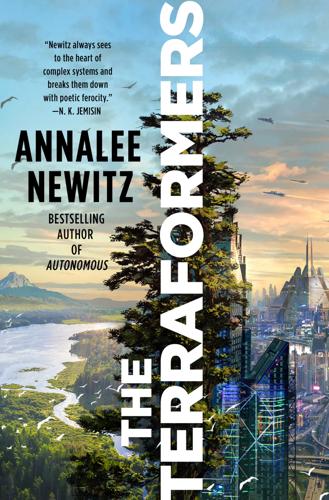
The Terraformers
by
Annalee Newitz
Alcohol sounded testy, and the moose hologram lowered its head as if about to charge. “They’ll be carrying every kind of person all over Sasky. Maybe even across the ocean to Tooth. Sounds like a pretty good job to me. Plus, they wouldn’t all have to become public transit. Sasky is a big place. A flying train could be an engineer, a game designer, or a farmer if they wanted. They could help the ERT with rescue missions. Plenty will be left who like doing transit.” Misha’s jaw was clenched. “But what if you’re wrong, and none of them want to fly people around? Or are you going to program them to want it?” The room filled with the sound of Boring Fleet vessels laughing like wind chimes.
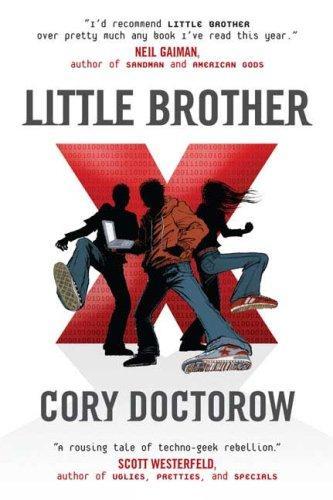
Little Brother
by
Cory Doctorow
Published 29 Apr 2008
MIT, of course, is one of the legendary origin nodes for global nerd culture, and the campus bookstore lives up to the incredible expectations I had when I first set foot in it. In addition to the wonderful titles published by the MIT press, the bookshop is a tour through the most exciting high-tech publications in the world, from hacker zines like 2600 to fat academic anthologies on video-game design. This is one of those stores where I have to ask them to ship my purchases home because they don't fit in my suitcase.]] [[MIT Press Bookstore http://web.mit.edu/bookstore/www/ Building E38, 77 Massachusetts Ave., Cambridge, MA USA 02139-4307 +1 617 253 5249]] Here's the email that went out at 7AM the next day, while Ange and I were spray-painting VAMP-MOB CIVIC CENTER -> -> at strategic locations around town

Statistics hacks
by
Bruce Frey
Published 9 May 2006
He is a graduate of the Massachusetts Institute of Technology with an Sc.B. and an M.Eng. in computer science and computer engineering. Joe is an unapologetic Yankees fan, but he appreciates any good baseball game. Joe lives in Silicon Valley with his wife, two cats, and a DirecTV satellite dish. Ron Hale-Evans is a writer, thinker, and game designer who earns his daily sandwich with frequent gigs as a technical writer. He has a Bachelor's degree in Psychology from Yale, with a minor in Philosophy. Thinking a lot about thinking led him to create the Mentat Wiki (http://www.ludism.org/mentat), which led to his recent book, Mind Performance Hacks (O'Reilly).
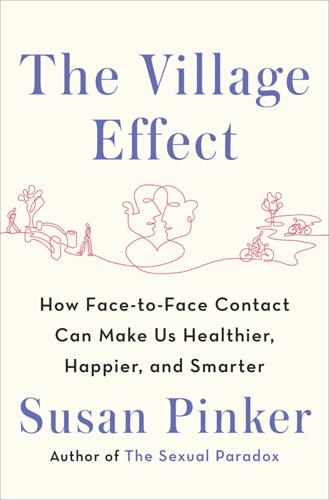
The Village Effect: How Face-To-Face Contact Can Make Us Healthier, Happier, and Smarter
by
Susan Pinker
Published 30 Sep 2013
Compared to healthy teens their own age and sex, the Internet addicts’ brain images revealed less density in areas related to self-awareness, error detection, and self-control.68 The corresponding impairments to thinking and attention suggest why dreadful tragedies have occurred. One British twenty-year-old died of a blood clot that developed during the twelve hours he spent immobilized while playing Xbox games, shortly before he was about to enter university to study game design. Then there was the appalling case of a three-year-old girl who starved to death when her twenty-something-year-old mother became so entranced by the hugely popular online role-playing game World of Warcraft that she forgot to feed her. Sometimes, though, the impact of computer game addiction isn’t dangerous, it’s just bizarre.

Multicultural Cities: Toronto, New York, and Los Angeles
by
Mohammed Abdul Qadeer
Published 10 Mar 2016
These forces are polarizing cities’ job markets into circuits of high-paying professional and 122 Multicultural Cities managerial occupations, on the one hand, and low-paid service and manufacturing jobs, on the other.80 This split job market is what confronts immigrants and their ethnic children. They are further finding that a lot of opportunities are turning into contractual self-employment, many of which turn into ethnic niches, for example, Latino limo drivers in New York and Taiwanese computer-game designers in Los Angeles. The economic base of cities is increasingly determined by their infrastructure, educational and research institutions, community services, and cultural life. The talent and creativity of a city’s workforce is its resource base. Richard Florida may be overplaying the role of the creative class in economic growth, but the education, skill, and diversity of a city’s population are undoubtedly strong determinants of economic prosperity.81 Cultural pluralism and its associated ethnic diversity are marks of cosmopolitanism that attract global capital and talent.

The Long History of the Future: Why Tomorrow's Technology Still Isn't Here
by
Nicole Kobie
Published 3 Jul 2024
And that meant there was suddenly an oversupply of extremely intelligent people with very specific skill sets and large corporate redundancy payouts. Some of them teamed up to build an industry. They included Jaron Lanier and Tom Zimmerman, who went on to set up VPL Research; Scott Fisher, who went on to NASA’s Ames lab; Brenda Laurel, who co-founded Telepresence Research with Fisher and is considered a trailblazer in game design, and Michael Naimark, who worked on that interactive map of Aspen and later with Google, Apple and LucasFilm on virtual projects. The first-named of those figures, Jaron Lanier, is a key person here, and he often gets the ‘father of virtual reality’ title that the media (again, sorry) loves to bestow, in part because he’s credited with coining the phrase ‘virtual reality’, though he himself disputes this.

Dark Laboratory: On Columbus, the Caribbean, and the Origins of the Climate Crisis
by
Tao Leigh. Goffe
Published 14 Mar 2025
At Dark Lab, we encourage models of research for reckoning with stolen land and life. We turn to design and curation as modes of repair and activation. We apply for interinstitutional grants, and some of our projects involve creative ventures such as filmmaking on coastal erosion and folklore-inspired video game design. In 2020, “BIPOC” instantaneously became a buzzword to differentiate the unevenness of the experience of people of color in the United States and Canada. Other countries latched on, though their own demographics would call for other vocabularies and reckoning with blackness and indigeneity.

More Everything Forever: AI Overlords, Space Empires, and Silicon Valley's Crusade to Control the Fate of Humanity
by
Adam Becker
Published 14 Jun 2025
The group houses that combine work and social life, the mission to save the world (a belief that makes it easier to minimize bad behavior), the narrative of the genius leader—even these are far from unique in the tech industry and the wider San Francisco Bay area. But reports from people formerly in the rationalist community suggest something darker at work too. “LessWrong and Effective Altruism are cults,” claims game designer Jacqueline Bryk.162 She’s not alone. “It was stated by multiple people [at MIRI] that we wouldn’t really have had a chance to save the world without Eliezer Yudkowsky (obviously implying that Eliezer was an extremely historically significant philosopher),” writes Jessica Taylor, a former research fellow at MIRI.163 “When I began at MIRI (in 2015), there were ambient concerns that it was a ‘cult.’… These concerns didn’t seem especially important to me at the time.

These Strange New Minds: How AI Learned to Talk and What It Means
by
Christopher Summerfield
Published 11 Mar 2025
In late 2023, a beefed-up version of the model, sporting a range of improvements and trained on a larger dataset, leapfrogged to the top 15th percentile of competitors, crowning it the world’s leading LLM in terms of coding proficiency.[*3] LLMs that are whizz programmers will have access to the most versatile set of tools imaginable, because computer code can be used for just about anything – from web design to software development to games design to data analytics. It can even be used to control physical devices, by programming embedded systems in vehicles, electrical appliances or industrial production lines. It can be used to design protocols for algorithmic trading on the world’s financial markets, and in the case of cryptocurrencies like Bitcoin to underwrite entire systems of economic exchange.
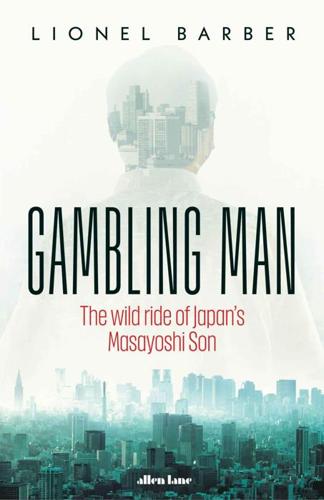
Gambling Man
by
Lionel Barber
Published 3 Oct 2024
After toying with launching a food and restaurant magazine, Masa settled on video games, the same idea he had explored earlier at Holy Names College. Video-game arcades were springing up everywhere, including gas stations, liquor stores, restaurants and supermarkets looking for extra income. At the time, the smash hit was Space Invaders, developed and launched in 1978 by a Japanese game designer called Taito.fn2 Lu was initially unenthusiastic. He had an engineering degree from Berkeley; now he was being asked to set up a business little different from a pinball machine. Masa begged to differ, arguing that a consumer electronics hit in Japan would soon become a hit in the US. Buying up unsold video-game cabinets at a discount, he could ship them to a ‘fresh’ American market.
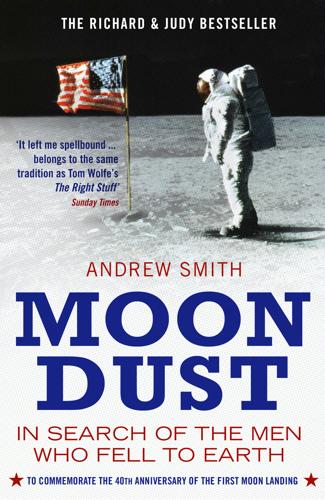
Moondust: In Search of the Men Who Fell to Earth
by
Andrew Smith
Published 3 Apr 2006
There are all sorts of organizations planning all kinds of more or less extravagant projects. Some are run by billionaires such as the hotelier Bob Bigelow, who’s spending five hundred million of his own dollars on manufacturing an inflatable space hotel in the desert outside Las Vegas, while others, like Armadillo Aerospace, run by the über-computer-game-designer John Carmack, coauthor of the mega-selling Quake and Doom series, are part of an expensive race to develop the first low-cost spaceships. The one problem they share in 2002 is NASA, and behind NASA the federal government and its tight regulations. And so it was that after meeting Myers, I turned left off Sunset, went up the hill past Mulholland Drive and down to Studio City, where just off Ventura Boulevard I found the offices of the Space Frontier Foundation and Rick Tumlinson.

Endurance: A Year in Space, a Lifetime of Discovery
by
Scott Kelly
and
Margaret Lazarus Dean
Published 14 Aug 2017
Astronauts have been bringing instruments to space for decades—at least as far back as 1965, when astronauts played “Jingle Bells” on the harmonica. As far as I know, Kjell is the first bagpiper in space. “Sorry, did I wake you?” says Kjell. “No, it’s great,” I said. “Play anytime you like.” Today, Gennady, Misha, and I are moving a Soyuz, the one Gennady will go home in, to the aft of ISS in a complex shell game designed to most efficiently utilize the docking ports. Gennady could move the Soyuz by himself, but Misha and I must come along for the ride because this Soyuz is our lifeboat, and once it undocks it’s never guaranteed we will be able to get back aboard the station. On Earth, moving the Soyuz would be as simple as reparking a car.

Destined for War: America, China, and Thucydides's Trap
by
Graham Allison
Published 29 May 2017
The United States temporarily controlled the islands after World War II, but in the early 1970s returned them to Japan, which had claimed them since the nineteenth century. But in the 1970s, China also claimed sovereignty over the islands. Chinese ships regularly pass through these waters, raising tensions between Beijing and Tokyo and risking a collision that could set off a chain reaction. Consider a scenario that provided the story line for a recent war game designed by the RAND Corporation.30 A group of Japanese ultranationalists sets sail for the Senkakus in small civilian watercraft. On social media, they explain they are headed for Kuba Jima, one of the smaller islands, which they intend to claim and occupy on behalf of Japan. They land and begin building unidentified structures.

Smart Cities: Big Data, Civic Hackers, and the Quest for a New Utopia
by
Anthony M. Townsend
Published 29 Sep 2013
As Jacob explained to me later, in August 2012 he had taken on a new role advising his peers in several other American cities on how to replicate the success of the Office of New Urban Mechanics. Philadelphia, the first to come knocking “actually called and asked ‘Can we just franchise what you guys do?’ ” Jacob proudly said.53 He was also working to help spread to other cities some of the projects kick-started in Boston. One such tool, Community PlanIt, was an online game designed by Eric Gordon, a visual and media arts professor at Emerson College, to enhance the value of community meetings. When we spoke, Community PlanIt had been successfully rolled out in two of Boston’s suburbs as well as Detroit. Although it was poised to go viral, can New Urban Mechanics survive a change of leadership at home in Boston?

Whole Earth: The Many Lives of Stewart Brand
by
John Markoff
Published 22 Mar 2022
* * * Shortly after he arrived in Sausalito, Kevin Kelly read Steven Levy’s Hackers: Heroes of the Computer Revolution, a book that portrayed three generations of “white hat” computer hackers (the good guys) ranging from the young programmers at MIT’s AI Lab decades earlier, through the Homebrew Computer Club, to the then new world of video game design. (The term hacker had only recently entered the national lexicon. It had been just a year since the movie WarGames had introduced the American public to the notion of network-accessible computers and bright young computer wizards.) Levy identified what he described as “the hacker ethic,” epitomized by the MIT students who, beginning in the 1950s, had “hacked” projects for the simple joy of designing computers and software as an end in itself.
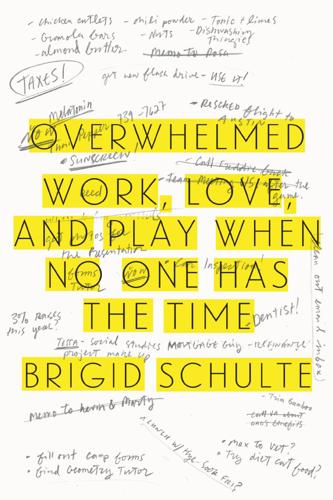
Overwhelmed: Work, Love, and Play When No One Has the Time
by
Brigid Schulte
Published 11 Mar 2014
Judi Hand, phone interview with author, December 13, 2011. 13. Marcee Harris-Schwartz, flex strategy adviser for BDO, phone interview with author, March 20, 2012. 14. Schor, Overworked American, 51. 15. Robinson, “Bring Back the 40-Hour Work Week.” Robinson based some of her conclusions on a white paper written by her computer game designer husband, Evan Robinson: “Why Crunch Modes Doesn’t Work: Six Lessons,” International Game Developers Association, www.igda.org/why-crunch-modes-doesnt-work-six-lessons. 16. Christopher P. Landrigan et al., “Effect of Reducing Interns’ Work Hours on Serious Medical Errors in Intensive Care Units,” New England Journal of Medicine 351 (2004): 1838–48, doi: 10.1056/NEJMoa041406. 17.

Operation Chaos: The Vietnam Deserters Who Fought the CIA, the Brainwashers, and Themselves
by
Matthew Sweet
Published 13 Feb 2018
“Don’t get freaked out by anything,” he said, “but I don’t want to create conditions which are not healthy for one or two individuals in the group here. I’m going to give you the worst part of the thing as well as the best so that there’s no question in your mind that I’ve given the whole scoop. We are now in the second phase of a psy-war game designed by the CIA, that is, a psychological warfare game conducted on a scale of four continents.” Everybody, quite naturally, freaked out. The Central Intelligence Agency—the state body tasked with gathering, processing, and analyzing national security information from around the world—had, he explained, turned some of their most trusted colleagues into killers.
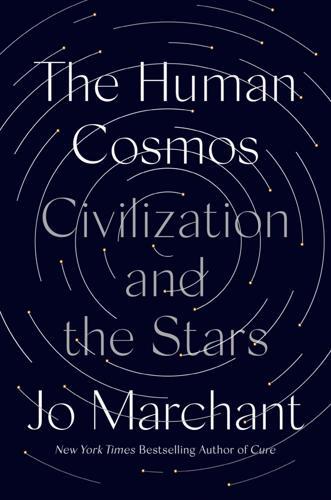
The Human Cosmos: A Secret History of the Stars
by
Jo Marchant
Published 15 Jan 2020
NASA astronaut Ron Garan, who orbited Earth in 2008, also saw our planet as “like a living, breathing organism,” with only a paper-thin atmosphere to shield everything on it “from death . . . from the harshness of space.” They often return determined to protect the environment. Russian cosmonaut Yuri Artyushkin felt “a strong sense of compassion and concern for the state of our planet and the effect humans are having on it . . . You are standing guard over the whole of our Earth.” After millionaire games designer Richard Garriott became the world’s sixth space tourist in 2008, he sold his SUVs, installed solar panels and began investing in green energy and electric cars. Others talk about the triviality of national boundaries and political conflicts, while astronauts of all nationalities emphasize that we are inhabitants of the same planet.
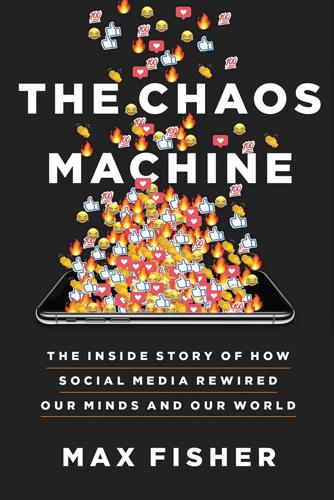
The Chaos Machine: The Inside Story of How Social Media Rewired Our Minds and Our World
by
Max Fisher
Published 5 Sep 2022
Many platforms initially considered gamers—tech obsessives who would surely pump hours into this digital interface, too—to be a core market. Thanks to a twist of commercial history, the gaming industry catered overwhelmingly to young men and boys of certain temperaments, which meant that social media platforms effectively did the same. But nothing about videogaming is inherently gendered or age-specific. The first games, designed by 1970s Silicon Valley shops like Atari, launched alongside personal computers and were presumed to have the same universal appeal. That changed with what the industry calls the North American video game crash. From 1983 to 1985, sales collapsed by 97 percent. Japanese firms sought to revive the market by rebranding this now-tarnished computer product, sold in electronics stores to adults, as something simpler: toys.

Like, Comment, Subscribe: Inside YouTube's Chaotic Rise to World Domination
by
Mark Bergen
Published 5 Sep 2022
Stefan Molyneux, the Canadian self-help philosopher, joined in, posting a video rebutting The Young Turks. But Molyneux and the anti-social-justice-warrior (SJW) brigade were really waiting for a bigger spark to set things off: Gamergate. David Sherratt watched Gamergate spread, tracking the manufactured online controversy as best as he could. From what he grasped, a feminist video game designer had received fawning coverage from an ex-lover, and then YouTube videos and web forum posts about the scandal were attacked or entirely removed. That seemed wrong. Details were hard to follow, but the rage was not. Some women had criticized how female characters were depicted in video games, only deepening the ire of male gamers, furthering a perception of PC, feminist culture run amok: the social justice warriors had come to ruin video games.
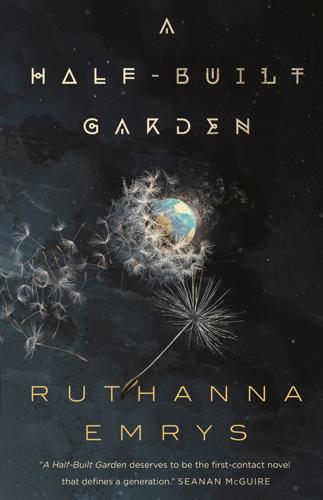
A Half-Built Garden
by
Ruthanna Emrys
Published 25 Jul 2022
ABOUT THE AUTHOR RUTHANNA EMRYS lives in a mysterious manor house on the outskirts of Washington, D.C., with her wife and their large, strange family. Her stories have appeared in a number of venues, including Strange Horizons, Analog Science Fiction and Fact, and Tor.com. She is the author of the Innsmouth Legacy series, which began with Winter Tide. She makes homemade vanilla, obsesses about game design, gives unsolicited advice, and occasionally attempts to save the world. You can sign up for email updates here. ALSO BY RUTHANNA EMRYS Winter Tide Deep Roots CONTENTS Cover Chapter 1 Chapter 2 Chapter 3 Chapter 4 Chapter 5 Chapter 6 Chapter 7 Interlude 1: Scanning the Networks Chapter 8 Chapter 9 Chapter 10 Chapter 11 Chapter 12 Chapter 13 Chapter 14 Chapter 15 Chapter 16 Chapter 17 Chapter 18 Chapter 19 Chapter 20 Chapter 21 Chapter 22 Chapter 23 Chapter 24 Chapter 25 Interlude 2: Common Board News-Thread Excerpts, Friday, March 20, 2083 Chapter 26 Chapter 27 Chapter 28 Chapter 29 Chapter 30 Chapter 31 Chapter 32 Chapter 33 Chapter 34 Chapter 35 Chapter 36 Chapter 37 Chapter 38 Chapter 39 Interlude 3: Arrival Chapter 40 Chapter 41 Chapter 42 Chapter 43 Chapter 44 Epilogue: 6 Months Later Acknowledgments of Several Sorts About the Author Also by Ruthanna Emrys Copyright This is a work of fiction.

Born in Flames
by
Bench Ansfield
Published 15 Aug 2025
As in the 1970s Bronx, “you lose only if you are caught in the flames”; to wit, there is no risk of getting apprehended by police officers or fire marshals. Instead of arrest, losing is marked by the message “you made an ash of yourself” popping up on the screen. Arson investigators the nation over were aghast that a game “designed primarily for youth” would “encourage firesetting by explaining how to set fires.” In New York, the Arson Strike Force joined the statewide Office of Fire Prevention and Control to pressure Muse Software to cease production of the game, and “after several discussions with the MUSE Company, on November 4, 1982, we were informed by a representative that the production of the game had been discontinued.”61 Through its mixed record battling youth arson, the ASF demonstrated that even an investigative body organized to combat white-collar crime was liable to reproduce the criminalization of the Black and Brown poor.
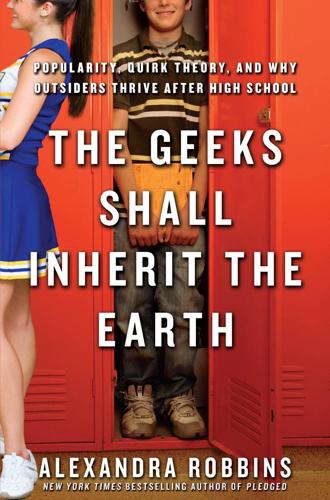
The Geeks Shall Inherit the Earth: Popularity, Quirk Theory, and Why Outsiders Thrive After High School
by
Alexandra Robbins
Published 31 Mar 2009
Emos might be in touch with their feelings and others’, and unafraid to show and empathize with those emotions. Scenes and indies often influence the cutting edge of cultural movements. Gamers, adept at problem solving, engage in ventures of successful “collective intelligence,” researchers say, because of their collaborative efforts, on forums, blogs, and wikis, to understand the games. As game designer and award-winning innovator Jane McGonigal has argued, these “collective knowledge–building” efforts could be applied to real-world issues. Freaks are often creative and perhaps the boldest of the cafeteria fringe because they display their distinctions openly with pride. Skaters and punks are frequently underestimated; their sense of artistry suggests the inventiveness they could bring to other endeavors.

Computer: A History of the Information Machine
by
Martin Campbell-Kelly
and
Nathan Ensmenger
Published 29 Jul 2013
One of the more celebrated stories about him is that, at the age of thirteen, when he needed some electronic components for a school project, he telephoned William Hewlett, the multimillionaire co-founder of Hewlett-Packard. Hewlett, won over by Jobs’s chutzpah, not only gave him the parts but offered him a part-time job with the company. Something of a loner, and not academically motivated, Jobs drifted in and out of college in the early 1970s before finding a well-paid niche as a games designer for Atari. An admirer of the Beatles, like them Jobs spent a year pursuing transcendental meditation in India and turned vegetarian. Jobs and Wozniak made a startling contrast: Wozniak was the archetypal electronics hobbyist with social skills to match, while Jobs affected an aura of inner wisdom, wore open-toed sandals, had long, lank hair, and sported a Ho Chi Minh beard.
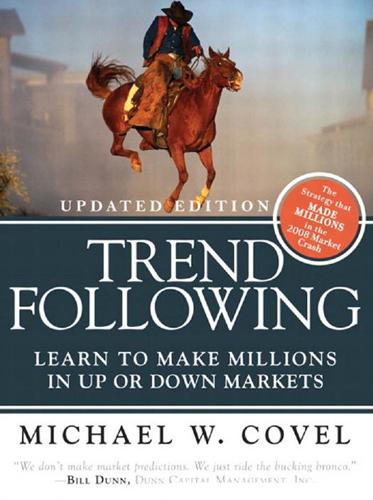
Trend Following: How Great Traders Make Millions in Up or Down Markets
by
Michael W. Covel
Published 19 Mar 2007
Richard Dennis91 How did it start? Dennis ran classified ads saying “Trader Wanted’’ and was immediately overwhelmed by some 1,000 queries from would-be traders. He picked 20+ novices, trained them for two weeks, and then gave them money to trade for his firm. His turtle traders included two professional gamblers, a fantasy-game designer, an accountant, and a juggler. Jerry Parker, the former accountant who now manages more than $1 billion, was one of several who went on to become top money managers.90 Although Dennis appears to own the mantle of trend following teaching professor, there are many other trend followers, including Seykota, Dunn, and Henry, who have served as teachers to a number of successful traders.

From Counterculture to Cyberculture: Stewart Brand, the Whole Earth Network, and the Rise of Digital Utopianism
by
Fred Turner
Published 31 Aug 2006
On the other hand, information wants to be free, because the cost of getting it out is getting lower and lower all the time. So you have these two fighting against each other.”64 Throughout the conference, hackers discussed different ways they had managed this dilemma. Some, like Richard Greenblatt, an early and renowned MIT hacker, argued that source code must always be made freely available. Others, like game designer Robert Woodhead, suggested that they would happily give away the electronic tools they had used to make products such as computer games, but they would not give away the games themselves. “That’s my soul in that product,” explained Woodhead. “I don’t want anyone fooling with that.”65 In discussion Bob Wallace said he had Tak i n g t h e W h o l e E a r t h D i g i t a l [ 137 ] marketed his text editor PC-WRITE as shareware (in shareware, users got the software for free but paid if they wanted documentation and support), whereas Andrew Fluegelman indicated that he had distributed his telecommunications program PC-TALK as freeware (users voluntarily paid a small fee to use the software).

San Francisco
by
Lonely Planet
Street performers on a float, Lunar New Year Parade (Click here) ROBERTO GEROMETTA / LONELY PLANET IMAGES © Competitor in costume, Bay to Breakers (Click here) GREG GAWLOWSKI / LONELY PLANET IMAGES © With Kids Rainforest dome, California Academy of Sciences (Click here) SABRINA DALBESIO / LONELY PLANET IMAGES © San Francisco has the fewest kids per capita of any US city and, according to SF SPCA data, about 19,000 more dogs than kids live here. Yet many locals make a living entertaining kids – from Pixar animators to video game designers – and this town is packed with attractions for kids. Techies Silicon Valley engineers encourage their kids’ scientific curiosity at SF’s hands-on discovery museums. San Francisco Children’s Creativity Museum ( Click here ) allows future tech to moguls design their own video games and animations, while the Exploratorium’s MacArthur Genius Grant– winning interactive displays (Click here ) help kids figure out the physics of skateboarding for themselves, and kiddie gearheads are riveted by vintage steamships at the Hyde St Pier Historic Ships Collection ( Click here ).

Terms of Service: Social Media and the Price of Constant Connection
by
Jacob Silverman
Published 17 Mar 2015
Facebook is a literal manifestation of the social factory. We do the work, by clicking, writing, posting, giving over our content, data, and attention. This work is diffused throughout our society, through our day jobs and entertainment and most basic communications. We might not even realize it’s work. The writer and game designer Ian Bogost describes this form of always-on but rarely acknowledged labor as “hyperemployment”: “We do tiny bits of work for Google, for Tumblr, for Twitter, all day and every day.” It’s enough to make one think that platform owners don’t do much at all. In digital serfdom, the digital lords appear to be little more than caretakers fattening themselves on our data production.
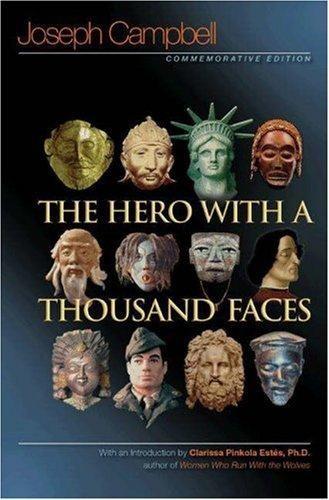
The Hero With a Thousand Faces
by
Joseph Campbell
Published 14 Apr 2004
They will resurrect the "lost stories" in new ways that restore their depth and surprise—that are capable of uplifting, testing, and altering the psyche. Currently, it is on the internet that gifted "frontier" writers and artists gather to create stories together. It is in web-zines, through cyber-art, the fabulae of game design, and in other wildly inventive never-before-seen forms, that any impoverishment to deep story the over-culture has caused is being overthrown. What an amazement it has been to us mere mortals to find that the reality now exists for "a voice greater" to be broadcast via the binary-code blips of ones and zeroes —a process, I am toid, which mirrors the binary code used by the synapses in the human brain.
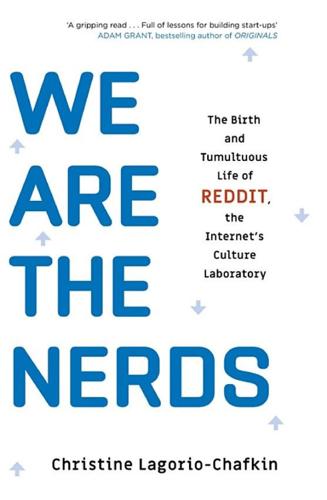
We Are the Nerds: The Birth and Tumultuous Life of Reddit, the Internet's Culture Laboratory
by
Christine Lagorio-Chafkin
Published 1 Oct 2018
(A later semantic analysis by FiveThirtyEight confirmed that the nonpolitics subreddits on Reddit most closely related to The_Donald were r/fatpeoplehate, r/TheRedPill, and r/CoonTown.) Milo Yiannopoulos of Breitbart, who’d seen his star rise while chiming in on Gamergate, a campaign of harassment against female programmers and game designers (of which Reddit was one hub), had developed a flair for drawing young gaming and programming types into the alt-right movement. He tweeted his support of The_Donald subreddit and mentioned it in his articles. His cross-platform evangelism created a sort of alt-right synergy that seemed to translate to an increased following for r/The_Donald.

Evil Geniuses: The Unmaking of America: A Recent History
by
Kurt Andersen
Published 14 Sep 2020
Because the whole point is never-ending play, without overwhelmingly decisive, permanent winners or so many losers the game doesn’t work as well as it can and should. All games have rules, but unlike other games, the rules by which an economy operates only seem like they’re handed down by a godlike game designer—whereas in fact, they’re amended and sometimes dramatically rewritten by the players over time. Meanwhile, back in real-life American economic history, starting in the 1800s the industrial revolution changed the game, modern corporations formed, and one player, big business, began acquiring unparalleled new economic and political power.
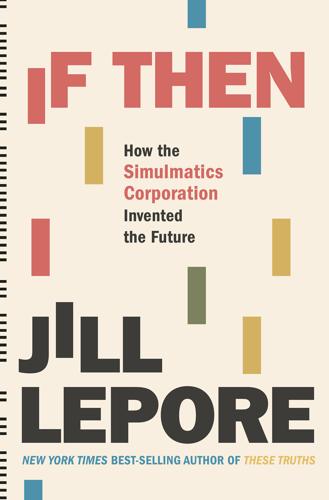
If Then: How Simulmatics Corporation Invented the Future
by
Jill Lepore
Published 14 Sep 2020
Kennedy and, 120, 167 — Johnson and, 75–76, 167, 182, 258 — reaction to space race and arms race, 78 — sit-ins, 101, 106, 196, 199, 234, 275 — Stevenson and, 42–43, 63, 66 Clark, Kenneth and Mamie, 85 Clinton, Bill, 303, 304 Clinton, Hillary, 303, 304 Cold War — as battle over the future, 35, 208–9 — beginning of, 15 — in Burdick’s fiction, 28 — effects of, 49–50, 135, 163 Coleman, James — American Sociological Association presidency, 303 — Bureau of Applied Social Research and, 84–85 — commodification of attention, 145 — Equality of Educational Opportunity (Coleman Report), 259, 303 — friendship with McPhee, 84–85, 87, 89, 137 — insufficiency of data for models, 145 — letter of support for Popkin, 310 — marketing for Simulmatics, 137, 142, 152 — preparation for 1962 Times election coverage, 154–55, 164, 362n — Project Camelot, 209 — resignation from Simulmatics, 271 — riot prediction project, 260–62 — simulation games designed by, 258–59, 377n — Simulmatics stock offering and, 139 — Simulmatics’ Urban Studies Division, 258–59 Coleman, John, 85 Coleman, Lucille (Lu) Ritchey, 84–85, 89, 144, 270 Coleman, Thomas, 85 Collingwood, Charles, 24–25 Collins, Ella, 252 Columbia Pictures, 173–74, 175, 364n Commission on Party Structure and Delegate Selection, 287 Committee for the Re-election of the President, 308, 309 Communications Act of 1934, 23, 316 compilers, 69, 70 “Computer Politics” (Kristol), 367n computer revolution — ARPANET, 284, 296, 310–11, 312, 313–15, 316, 318 — hackers, 312, 313, 326 — no safeguards on data collection and analysis, 315, 323 — personal computers, 310, 313, 318 — Pool, arguments against regulation, 315–17, 318 — Pool, writing about emerging technologies, 277–79, 299, 316–17, 318–19, 323 — Stewart Brand promotion of, 310, 311–12, 314, 317–18 — see also artificial intelligence computers, early — development during and after World War II, 68–70 — mainframe computer in 1956, 8 — presidential election of 1952, 24–26, 69, 122, 150 — see also specific topics Cook, Mike, 303 coronavirus and social distancing, 5, 322 Corrupt Practices Act, 23 Counterfeit World (Galouye), 187–88 counterinsurgency — McNamara’s theory, 208–9 — progress measurement by counting deaths, 212–13 — Simulmatics program, 49, 200, 209, 211, 213, 216, 258 Cronkite, Walter, 24–25, 267 Cuban Missile Crisis — aftermath, 163, 169 — Andrei Gromyko, 157, 160 — beginning of, 156 — end of, 162–63 — ExComm (Executive Committee of the National Security Council), 157, 162 — John F.

The War Came to Us: Life and Death in Ukraine
by
Christopher Miller
Published 17 Jul 2023
The students giggled at my shortened name, which sounded similar to the Russian word for rat, krisa. “Maybe it’s better to call you Mr Christopher,” Olha, a teacher who was assisting me, suggested. The students objected. “No! No! Meester Krees!” My English lessons with all of the younger classes consisted mainly of games designed for them to recognize words, phrases, and numbers, and get used to speaking and hearing English. With the older students, my task was much more challenging: I needed to get them to be able to communicate in what was their third language after Russian and Ukrainian. From the very start, my eleventh-form class of 16- and 17-year-olds weren’t interested in learning English.

San Francisco
by
Lonely Planet
Street performers on a float, Lunar New Year Parade (Click here) ROBERTO GEROMETTA / LONELY PLANET IMAGES © Competitor in costume, Bay to Breakers (Click here) GREG GAWLOWSKI / LONELY PLANET IMAGES © With Kids Rainforest dome, California Academy of Sciences (Click here) SABRINA DALBESIO / LONELY PLANET IMAGES © San Francisco has the fewest kids per capita of any US city and, according to SF SPCA data, about 19,000 more dogs than kids live here. Yet many locals make a living entertaining kids – from Pixar animators to video game designers – and this town is packed with attractions for kids. Techies Silicon Valley engineers encourage their kids’ scientific curiosity at SF’s hands-on discovery museums. San Francisco Children’s Creativity Museum ( Click here ) allows future tech to moguls design their own video games and animations, while the Exploratorium’s MacArthur Genius Grant– winning interactive displays (Click here ) help kids figure out the physics of skateboarding for themselves, and kiddie gearheads are riveted by vintage steamships at the Hyde St Pier Historic Ships Collection ( Click here ).

MacroWikinomics: Rebooting Business and the World
by
Don Tapscott
and
Anthony D. Williams
Published 28 Sep 2010
“We encourage people to approach this problem like a diet: if you want to splurge in one area you have to make up for it in another,” says Dahl. A World Without Oil and the Power of Imagination Carbon calculators and competitive challenges aren’t for everyone. For Ken Eklund, a freelance writer and game designer, interactive gaming experiences provide an engaging alternative where ordinary people can immerse themselves in an experiential process of finding everyday solutions for climate change that drive real-world changes in behavior. Eklund is the creator of a fascinating alternate reality game (ARG) called World Without Oil, an interactive, Internet-based narrative where large numbers of game players collaborate to solve plot-based challenges and puzzles.

The 4-Hour Body: An Uncommon Guide to Rapid Fat-Loss, Incredible Sex, and Becoming Superhuman
by
Timothy Ferriss
Published 1 Dec 2010
In fact, making any change at all seemed to result in increased productivity. It turned out that, with each change, the workers suspected they were being observed and therefore worked harder. This phenomenon—also called the “observer effect”—came to be known as “the Hawthorne Effect.” Reinforced by research in game design, Jack Stack and Western Electric’s results can be condensed into a simple equation: measurement = motivation. Seeing progress in changing numbers makes the repetitive fascinating and creates a positive feedback loop. Once again, the act of measuring is often more important than what you measure.
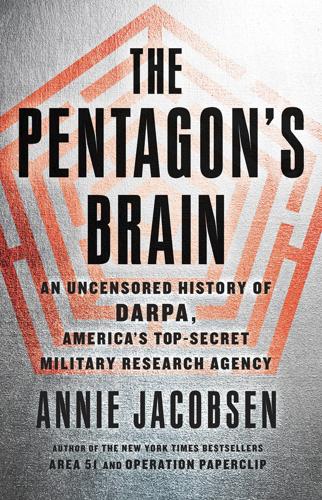
The Pentagon's Brain: An Uncensored History of DARPA, America's Top-Secret Military Research Agency
by
Annie Jacobsen
Published 14 Sep 2015
The Advanced Research Projects Agency, 1958–1974. Richard J. Barber Associates, Washington, DC, December 1975. ______. Combat Development & Test Center: Vietnam. May 1962. ______. “Counterinsurgency: A Symposium, April 16–20, 1962.” RAND Corporation, Washington, DC, 1962. ______. Counter-Insurgency Game Design Feasibility and Evaluation Study. SD-301. ABT Associates, Inc., Cambridge, MA, November 1965. ______. Guerilla Activity Defection Study. DEC-63-1236. Defense Research Corporation, McLean, VA, December 1963. ______. Operation Pink Rose: Final Report. ARPA Order No. 818. U.S. Department of Agriculture–Forest Service, May 1967. ______.

The Technology Trap: Capital, Labor, and Power in the Age of Automation
by
Carl Benedikt Frey
Published 17 Jun 2019
Astronomers build research collaborations and present their findings on conferences. These tasks are all way beyond the competence of computers. Many jobs also require creativity, like the ability to come up with new, unusual, and clever ideas. Survey data show that the work of physicists, art directors, comedians, CEOs, video game designers, and robotics engineers, to name a few, all involve such activities.50 The challenge here, from an automation point of view, is not one of generating novelty but generating novelty that makes sense. For a computer to produce an original piece of music, write a novel, develop a new theory or product, or make a subtle joke, in principle the only things that are required is a database with a richness of experience that is comparable to that of humans and solid methods that allow us to benchmark the algorithm’s subtlety.

Thank You for Being Late: An Optimist's Guide to Thriving in the Age of Accelerations
by
Thomas L. Friedman
Published 22 Nov 2016
Wujec is a fellow at Autodesk and a global leader in 3-D design, engineering, and entertainment software. While his title sounds like a guy designing hubcaps for an auto parts company, the truth is that Autodesk is another of those really important companies few people know about—it builds the software that architects, auto and game designers, and film studios use to imagine and design buildings, cars, and movies on their computers. It is the Microsoft of design. Autodesk offers roughly 180 software tools used by some twenty million professional designers as well as more than two hundred million amateur designers, and each year those tools reduce more and more complexity to one touch.
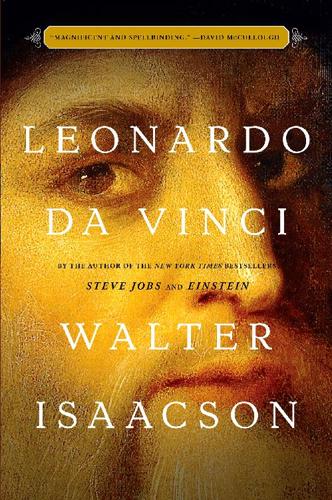
Leonardo Da Vinci
by
Walter Isaacson
Published 16 Oct 2017
A lesser-known but important component of Pacioli’s work at court involved contributing, alongside Leonardo, to its ephemeral amusements and performances. In a notebook he began just after his arrival, “On the Powers of Numbers,” Pacioli compiled riddles, mathematical brain-twisters, magic tricks, and parlor games designed to be presented and solved at court parties. His tricks include how to make an egg walk across a table (it involves wax and strands of hair), how to make a coin go up and down in a glass (vinegar and magnetic powder), and how to make a chicken jump (quicksilver). His parlor games included the first published version of the standard card trick of guessing which card someone has picked from a deck (it involves an accomplice), brain-teasers such as one in which a man has to figure out how to ferry a wolf and a goat and a cabbage across a river, and math games in which a spectator thinks of a number which can then be discovered by asking the result of a few operations performed on it.

Empire of AI: Dreams and Nightmares in Sam Altman's OpenAI
by
Karen Hao
Published 19 May 2025
In the summer of 2016, not long after OpenAI was founded, several employees met Hassabis and reported back to the office: DeepMind did intend to take over the world; Musk’s characterization seemed correct. The following year, Musk hosted an off-site meeting for OpenAI employees at his SpaceX factory and launched into a rant about Hassabis. Before founding DeepMind, Hassabis had spent seven years running a video game design studio he’d founded. “He literally made a video game where an evil genius tries to create AI to take over the world,” Musk shouted, referring to Hassabis’s 2004 title Evil Genius, “and fucking people don’t see it. Fucking people don’t see it! And Larry? Larry thinks he controls Demis but he’s too busy fucking windsurfing to realize that Demis is gathering all the power.”
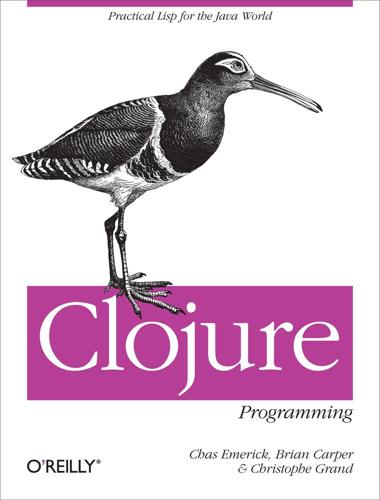
Clojure Programming
by
Chas Emerick
,
Brian Carper
and
Christophe Grand
Published 15 Aug 2011
[137] In particular, multiversion concurrency control (often abbreviated MVCC): https://en.wikipedia.org/wiki/Multiversion_concurrency_control. [138] We present a way to address durability of ref state with the help of agents in Persisting reference states with an agent-based write-behind log. [139] We’re not game designers, and what we build here is obviously a contrivance, but there’s no reason the mechanisms we demonstrate here could not be utilized and extended to implement a thoroughly capable game engine. [140] In a real game engine, you would almost surely not use vars to hold characters; rather, it would make sense to use a single map containing all online players’ characters, itself held within a ref.

Revelation Space
by
Alastair Reynolds
Published 1 Jan 2000
Not soon enough, for them — but after a million years of waiting, trapped in their bubble of spacetime, they began to wonder if the threat had now diminished... They could not simply dismantle the Shrouds and look around — far too hazardous; especially as the Inhibitor machines were nothing if not patient. Their apparent silence might only be part of the trap, a waiting game designed to entice the Amarantin — who were now the Shrouders — out of their shells, into the open arena of naked space, where they could be destroyed with ease, terminating the million-year purge against their kind. Yet, in time, others came. Perhaps there was something about this region of space which favoured the evolution of vertebrate life, or perhaps it was only coincidence, but in the newly starfaring humans, the Shrouders saw echoes of what they had once been.
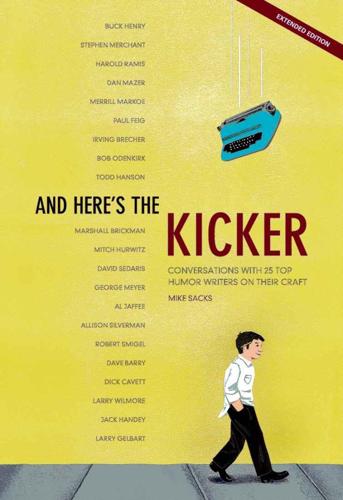
And Here's the Kicker: Conversations with 21 Top Humor Writers on Their Craft
by
Mike Sacks
Published 8 Jul 2009
He has worked at The Washington Post and is currently on the editorial staff of Vanity Fair. Additional interviews can be found at www.andheresthekicker.com. More Great Resources From Writer's Digest Books THE WRITE BRAIN WORKBOOK 366 Exercises to Liberate Your Writing by Bonnie Neubauer This one-of-a-kind guide provides a full year of writing exercises and games designed to get thoughts brewing and the pen moving across the page. Turn on the right side of your brain to stimulate creativity and generate work, painlessly leading yourself into new writing every day. You'll never have to face a blank page again. ISBN: 978-1-58297-355-5 • paperback; 384 pages • #10986 THE ART AND CRAFT OF STORYTELLING by Nancy Lamb A good story flows from a solid understanding of writing and structure, along with a confident grasp of character, plot, and dialogue.

The Power Law: Venture Capital and the Making of the New Future
by
Sebastian Mallaby
Published 1 Feb 2022
With a six-foot four-inch frame and a shaggy head of hair, he presided over his company like a high-tech Hugh Hefner.[3] He kept an oak beer tap outside his office and liked to hold business meetings in a hot tub—either the one in his house or the new one he had installed in Atari’s engineering building.[4] The hot tub meetings and hot tub parties—it could be difficult, sometimes, to be sure of the difference—were part of the Atari culture, which hinged on keeping the male game designers happy by hiring the best-looking female secretaries available.[5] Bushnell’s approach to corporate strategy was to scrawl epiphanies on scraps of paper that fell out of his pockets. His employees got travel expenses paid in advance and sometimes absconded with the cash, never to be seen again.

Four Battlegrounds
by
Paul Scharre
Published 18 Jan 2023
FPGAs can be reprogrammed for different applications, unlike ASICs whose logic is embedded into the hardware of the chip. AI chips are a relatively small portion—about 10 percent—of the global semiconductor market but are growing five times faster than non-AI chips. AI-specialized chips are also widening the field of potential chip designers, with companies like Google and Tesla getting in the game designing their own ASICs for specific applications. As AI technology matures with more real-world applications, dominance in AI-specialized chips may turn out to matter far more for influencing how AI is used than dominance in semiconductors more generally. It remains an open question whether the Chinese semiconductor industry can continue to catch up to industry leaders or whether the hurdles to accessing the technology and human capital needed to operate at the most advanced process nodes will remain too difficult to overcome.

Elon Musk
by
Walter Isaacson
Published 11 Sep 2023
“And if Thornfield Hall burns down and you are blind, I’ll come to you and take care of you.” 40 Artificial Intelligence OpenAI, 2012–2015 With Sam Altman Peter Thiel, the PayPal cofounder who had invested in SpaceX, holds a conference each year with the leaders of companies financed by his Founders Fund. At the 2012 gathering, Musk met Demis Hassabis, a neuroscientist, video-game designer, and artificial intelligence researcher with a courteous manner that conceals a competitive mind. A chess prodigy at age four, he became the five-time champion of an international Mind Sports Olympiad that includes competition in chess, poker, Mastermind, and backgammon. In his modern London office is an original edition of Alan Turing’s seminal 1950 paper, “Computing Machinery and Intelligence,” which proposed an “imitation game” that would pit a human against a ChatGPT–like machine.
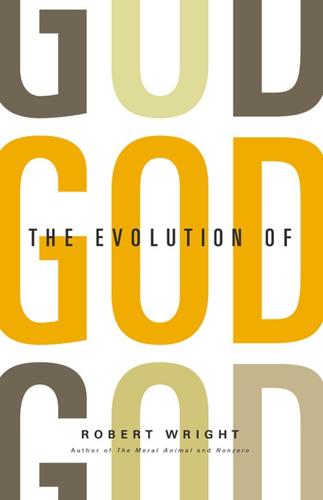
The Evolution of God
by
Robert Wright
Published 8 Jun 2009
You can choose other metaphors, and scholars have—the Logos is “the breath of God” or a “stream” emanating from God or “the face of God turned toward creation” 20 —but in any event the Logos is humankind’s point of contact with the divine. This is how the Logos reconciles the transcendence of God with a divine presence in the world. God himself is beyond the material universe, somewhat the way a video game designer is outside of the video game. Yet the video game itself—the algorithm inside the box—is an extension of the designer, a reflection of the designer’s mind. Similarly, if God imbued the Logos with his spirit and his values, then to know the Logos is to sense divine intention, even to know a part of God. 21 God may be outside the physical universe, but, as Goodenough puts it, there is “an immanent presence and cooperation of divinity in the created world.” 22 The job of human beings, you might say, is to in turn cooperate with the divinity, a task they’ll do best if they sense this presence and the purpose it imparts.
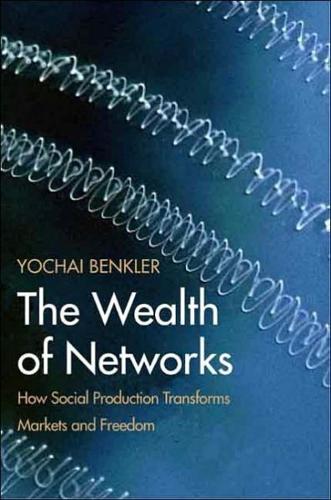
The Wealth of Networks: How Social Production Transforms Markets and Freedom
by
Yochai Benkler
Published 14 May 2006
Its users have created 99 percent of the objects in the game environment. The medieval village was nothing but blank space when they started. So was the flying vehicle design shop, the futuristic outpost, or the university, where some of the users are offering courses in basic programming skills and in-game design. Linden Labs charges a flat monthly subscription fee. Its employees focus on building tools that enable users to do everything from basic story concept down to the finest details of their own appearance and of objects they use in the game world. The in-game human relationships are those made by the users as they interact with each other in this immersive entertainment experience.

Seeking SRE: Conversations About Running Production Systems at Scale
by
David N. Blank-Edelman
Published 16 Sep 2018
The SRE on call checks the monitoring; there are no clues as to the cause, yet it’s clear this key production service is in a bad state: the errors and latency graphs are the only ones going up and to the right. Revenue is being lost. The on-caller declares a production incident. The VP of engineering storms in, demanding to know what’s going on. The other SREs in the room just laugh. Why? Because this is Incident Manager, a game designed to teach incident response skills and teamwork, and the current player just drew a bad card. Incident management is a key SRE skill that can be learned — and it’s much better for your organization’s SLO budget (and the stress levels of your SRE team) to learn it via a fun and effective game rather than during an actual production incident.

Wired for War: The Robotics Revolution and Conflict in the 21st Century
by
P. W. Singer
Published 1 Jan 2010
Who could ask for more than good friends and family? [NOTES] AUTHOR’SNOTE:WHY A BOOK ON ROBOTS AND WAR? 1 Because robots are frakin’ cool Frak is a made-up expletive that originated in the computer science research world. It then made its way into video gaming, ultimately becoming the title of a game designed for the BBC Micro and Commodore 64 in the early 1980s. The main character, a caveman called Trogg, would say “Frak!” in a little speech bubble whenever he was “killed.” It soon spread into science fiction, appearing in such games as Cyberpunk 2020 and the Warhammer 40,000 novels. It crossed over into the mainstream most explicitly in the new 2003 reboot of the 1970s TV series Battlestar Galactica.

The Transhumanist Reader
by
Max More
and
Natasha Vita-More
Published 4 Mar 2013
Even without other players, division of labor can be an important motivation for having two avatars. 2. Diversity of experience. Avatars of different races often enter the virtual world in different geographic regions, experiencing a different set of initial conditions and completing different missions. Different classes experience even the same quest and territory in a different way. Game designers encourage this diversity of experiences, because they want players to persist in subscribing to the gameworld, effectively combining many games into one to accomplish this commercial goal. Very popular games like World of Warcraft run many instances of the game simultaneously, on different servers, which may be fundamentally different in their rules, as well as being inhabited by different players who give each a distinct quality.

Israel & the Palestinian Territories Travel Guide
by
Lonely Planet
AdoraMEDITERRANEAN ( MAP GOOGLE MAP ; %03-605 0896; 226 Ben Yehuda St; brunch 99NIS, 2-course business lunch 69NIS, mains 79-96NIS; hnoon-midnight Mon-Thu, 9am-midnight Fri & Sat; v) One of the original foodie destinations in town, Adora is looking a little bit worn these days but still attracts attention for the quality of its Mediterranean cuisine. Meat and fish dishes jostle for attention on the menu: vegetarians may feel hard done by. The business lunch is a great deal. CAFE CULTURE Tel Aviv has developed a global reputation as a hub of the creative industries, particularly in the fields of software and game design, architecture, advertising and graphic design. The fact that many members of this creative class are involved in start-up or speculative projects means that many are idea-rich but cash-poor, and so can't afford to pay the extremely high office rents that apply in the city centre. Their solution is suitably creative – taking advantage of the tables, caffeine fixes and free wi-fi offered in cafes.
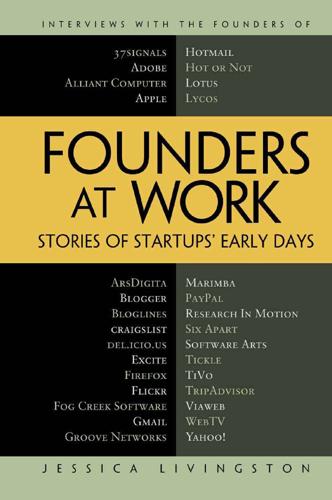
Founders at Work: Stories of Startups' Early Days
by
Jessica Livingston
Published 14 Aug 2008
Fake: At the beginning it was me, Stewart, and Jason Classon. Jason and Stewart had started a company together in 1999 that was acquired by a venturebacked startup out of Boston after about 6 to 9 months. Jason went and worked in Boston for a year and came back and then the three of us started working on the game together. I did the game design, Stewart did the interaction design, and Jason did the PHP for the prototype. Livingston: Did they fund the game with money that they made from the acquisition? Fake: Partially, yes. It was really a friends-and-family investment. It was the three of us and we added Eric Costello very soon thereafter.

Public Places, Urban Spaces: The Dimensions of Urban Design
by
Matthew Carmona
,
Tim Heath
,
Steve Tiesdell
and
Taner Oc
Published 15 Feb 2010
Action Planning Activity Mapping Act Create Experience (ACE) Adaptable Model Appreciative Inquiry Architecture Centre Architecture Week Awareness-Raising Day Beo Best Fit Slide Rule Briefing Workshop Broad-Based Organisation Capacity-Building Workshop Choices Method Citizen Advocacy Citizens' Juries Community Appraisals Community Design Centre Community Indicators Community Plan Community Planning Forum Community Projects Fund Community Site Management Plans Community Strategic Planning Consensus Building Design Assistance Team Design Day Design Game Design Workshop Development Trust Elevation Montage Enspirited envisioning Environment Shop Finding Home – Visualising our Future by Making Maps Fish Bowl Forum From Vision to Action Future Search Conference Guided Visualisation Imagine! Interactive Display Issues, Aims, Expectations, Challenges & Dialogues in a Day Local Sustainability Model Mobile Planning Unit Mock-Up Neighbourhood Planning Office Open Design Competition Open House Event Open Space Workshop Parish Maps Participatory Appraisal Participatory Building Appraisal Participatory Strategic Planning Participatory Theatre Planning Aid Planning Day Planning for Real Planning Weekend Process-Planning Session Real-Time Strategic Change Resource Centre Roadshow Round-Table Workshops Social Audit Street Stall Table Scheme Display TalkWorks Task Force Team Syntegrity Time Dollars Topic Workshop Trail Urban Design Game Urban Design Soapbox Urban Design Studio Urban Studies Centre Visual Simulation Web Site For a successful collaborative approach, Barton et al (2003: 47) suggest five golden rules:1.
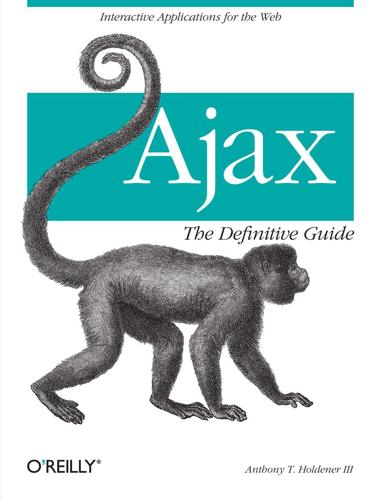
Ajax: The Definitive Guide
by
Anthony T. Holdener
Published 25 Jan 2008
Not long after that, Intellivision started a competition with Atari that many other companies would join. By 1983, so many bad console games were being produced, all because companies were trying to get a foothold on the market, that users became disenchanted with them. This started the rise of the PC and educational games. It took several years, but game designers soon began to port console games to the more powerful PCs. Original games such as Space Invaders (1978), Pac-Man (1982), Pitfall (1982), Pole Position (1982), and Spy Hunter (1983) joined the post-video-game-crash arcade games such as Castlevania (1986), Mortal Kombat (1993), Tomb Raider (1996), and Grand Theft Auto (1998), which became the model for the arcade genre also known at this point as platform games.
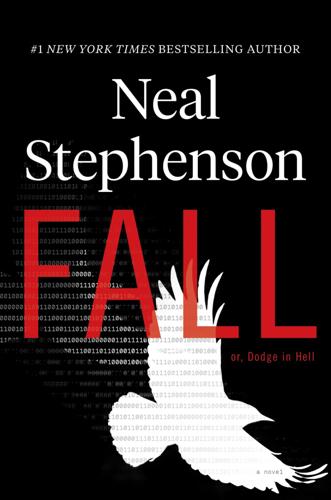
Fall; Or, Dodge in Hell
by
Neal Stephenson
Published 3 Jun 2019
The purposes of linen and beer trucks were obvious, being printed right on their sheet metal, but of course every vehicle on the street and every pedestrian on the sidewalk had a purpose as well. It was the flowing-together and interaction of all those intentions that made a city. The early failure of Corporation 9592’s game designers to capture that feeling had led to several months of Richard’s doing what Richard generally did, which was to attack problems so weird that merely to cop to their existence would have been career suicide for anyone who wasn’t the company founder. The name of the game, and of the imaginary world in which it was set, was T’Rain.

The Year's Best Science Fiction: Twenty-Sixth Annual Collection
by
Gardner Dozois
Published 23 Jun 2009
Kilometers of empty land stretched out ahead of them: for a moment, Max imagined it a garden, like the cemetery in the capitol, filled with flowers remembering all those who died to terraform the planet. “There’s been enough killing.” Balancing Accounts JAMES L. CAMBIAS As everyone knows, robots are programmed to follow orders—but sometimes that programming has just a little wiggle room in it. A game designer and a writer of role-playing game supplements as well as a science fiction writer, James S. Cambias has been a finalist for the Nebula Award, the James Tiptree Jr. Memorial Award, and the John W. Campbell Award for Best New Writer. He’s become a frequent contributor to The Magazine of Fantasy & Science Fiction, and has also sold to Crossroads: Tales of the Southern Literary Fantastic, All-Star Zeppelin Adventure Stories, The Journal of Pulse-Pounding Narratives, Hellboy: Odder Jobs, and other markets.
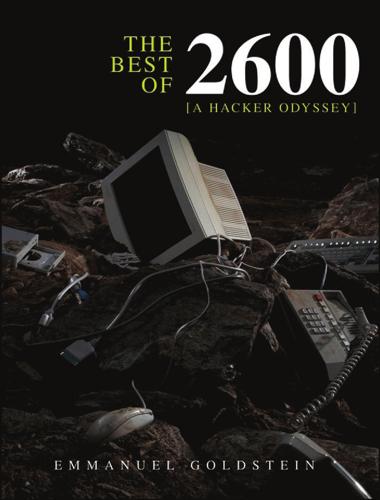
The Best of 2600: A Hacker Odyssey
by
Emmanuel Goldstein
Published 28 Jul 2008
Others would be imprisoned, despite the fact that the allegations against them had been proven false in a related case. But this time something a little different happened. In their enthusiasm, the Secret Service had really overstepped the boundary and harassed a completely innocent (and well known) game designer named Steve Jackson. This part of the story managed to hit home with a lot of people and, before you knew it, we were organizing and communicating online in an effective manner. Through a public UNIX system in California known as The Well, we helped spread the story to even more people. The mass media actually picked up on it.

Artificial Intelligence: A Modern Approach
by
Stuart Russell
and
Peter Norvig
Published 14 Jul 2019
The editors of the American Journal of Mathematics stated, “The ‘15’ puzzle for the last few weeks has been prominently before the American public, and may safely be said to have engaged the attention of nine out of ten persons of both sexes and all ages and conditions of the community,” while the Weekly News-Democrat of Emporia, Kansas wrote on March 12, 1880 that “It has become literally an epidemic all over the country.” The famous American game designer Sam Loyd falsely claimed to have invented the 15 puzzle (Loyd, 1959); actually it was invented by Noyes Chapman, a postmaster in Canastota, New York, in the mid-1870s (although a generic patent covering sliding blocks was granted to Ernest Kinsey in 1878). Ratner and Warmuth (1986) showed that the general n × n version of the 15-puzzle belongs to the class of NP-complete problems.